- Student Successes
- My Learning

How to Take Excellent Train Photography (Locomotive Photos)
You can also select your interests for free access to our premium training:
Trains are a diverse subject for photography. You can take pictures of everything from a steam train to Japan’s bullet trains. In this article we’ll show you how to take excellent train photography. From the right settings to use to getting more creative with your transportation images.
Steam Train Photography
Steam trains aren’t widely used these days, and are mainly tourist attractions. One of the first things you’ll need to figure out is where and when these trains run. If you’re lucky and from the U.K., you’ll not have a big problem finding these. Otherwise, some travel could be involved.
Research Train Routes to Find the Best Photography Locations

Study the Train Line’s Path for Possible Viewpoints
Once you know the location of the train stations, you’ll want to find out where the line runs. This will either mean using Google maps, or perhaps the train line’s website. You’ll want to find out which roads and footpaths run parallel to the train track. You’ll now want to explore the public access areas for possible viewpoints of the train.
Using Natural Light in Steam Train Photography
This might be better put as use the light in the right way. You’ll find light from different directions will offer you different things, especially with steam involved.
- Sunlight behind you – Great for lighting up the scene in front of you, and keeping the train well-lit. This will work well with interesting vegetation in front of you.
- Sunlight to the side, and behind – This type of light is best for steam train photography. You’ll have the train lit by the sun, and somewhat reflecting the light. You’ll also pick up more texture in the smoke.
- Sunset and sunrise – Depending on the train’s schedule, photographing during sunset or sunrise can make for dramatic photography .
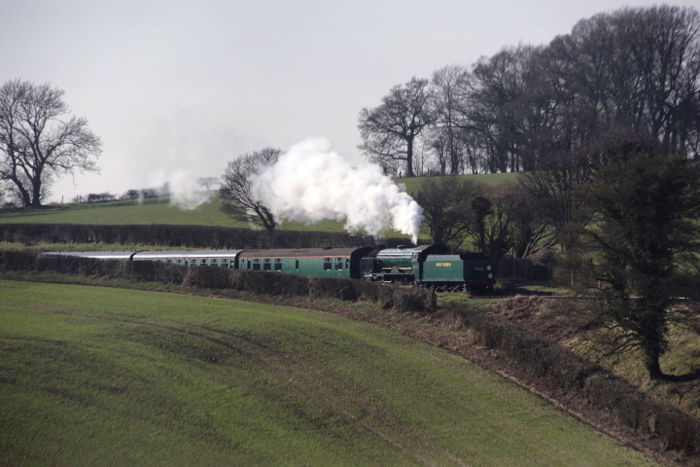
Use Longer Focal Lengths
It’s a great idea to have a lens with decent focal length for train photography. Locations accessible to the public may mean you’ll really need to zoom in. This is not a bad thing though. You can now compress the scene, and show the train surrounded by the countryside it’s passing through.
Photograph the Details to Create Atmosphere
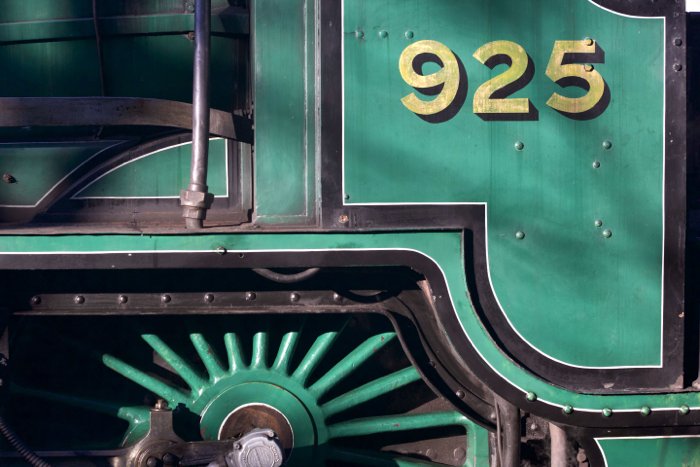
Use Shutter Speed for Creative Motion Blur
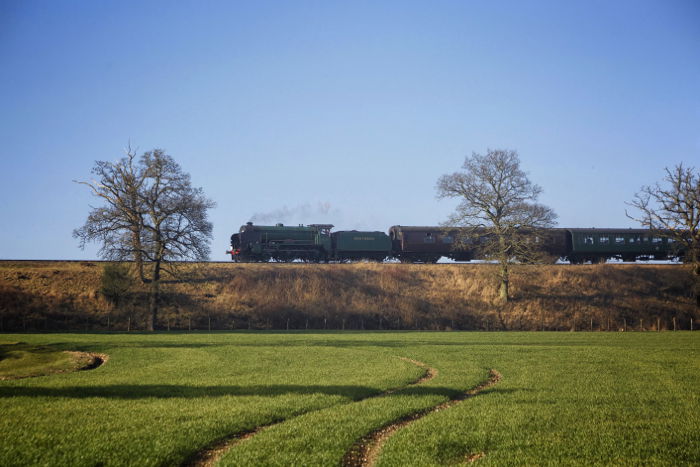
Composition for Steam Train Photography
Once again composition will depend on the type of photo you want to take. One thing to avoid is including modern day elements. These will distract the viewer from the mood you’re attempting to create.
- Front and to the side – The classic composition for any sort of train photography. You’ll capture the train coming towards you, with a decent amount of context provided by the countryside.
- Side on – This angle is a great way to get a nice photo of the train, and the carriages behind it. If you can get an angle where you’re below the train, so you’re aiming towards the sky, it will give you a more minimal photo .
- From a bridge – This is a location where you can get a head-on angle of the train, a nice alternative from the majority of photos that will be side-on.

Include a Human Element
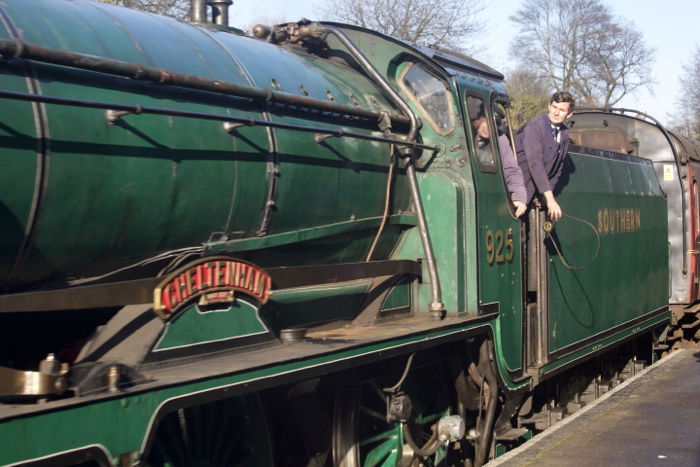
Overground Trains
Overground trains make for great photography as well. Whether you’re photographing commuter trains, fast intercity, or the modern Maglev trains, there will be something of interest for you.
Take Photos of Train Platforms
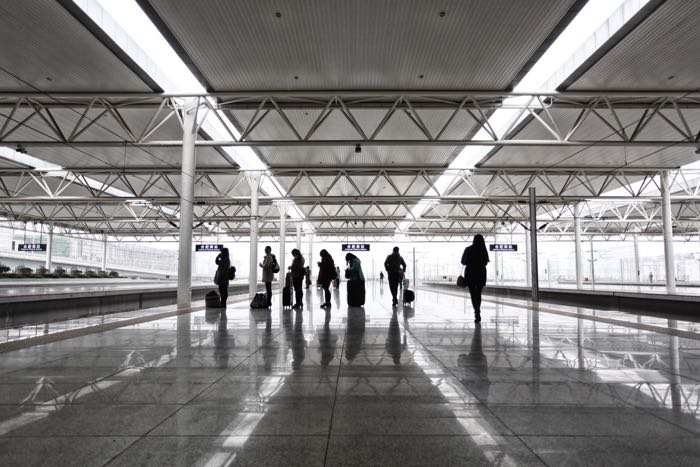
Photograph Train Interiors

How to Find a Vantage Point for Train Photography
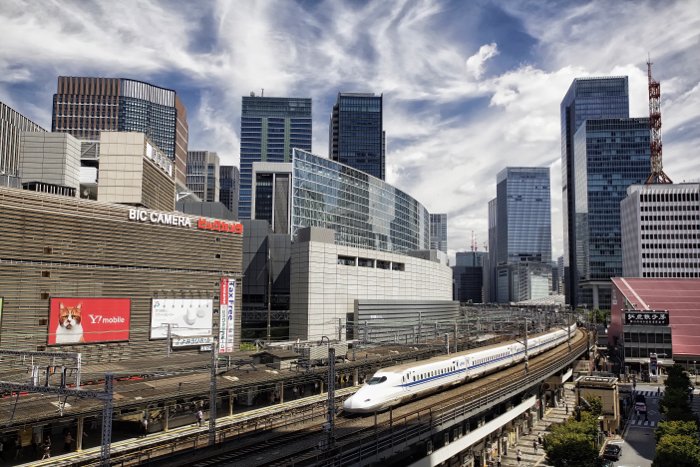
Include Train Light Trails
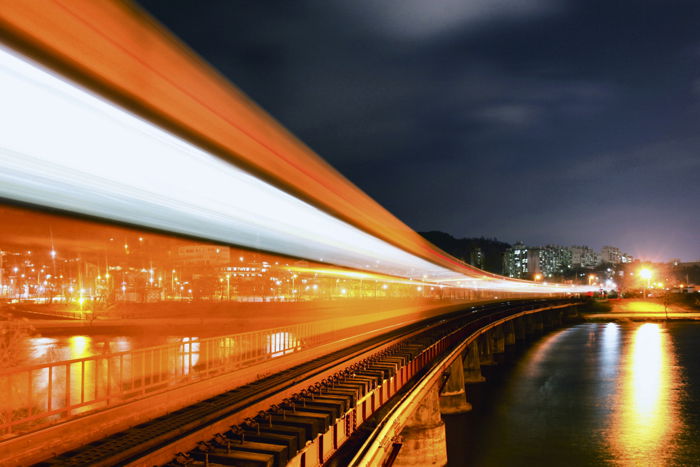
Underground Trains
Photographing underground trains can be just as much fun, if not more so than overground trains. The discipline is different though. Once again these are private areas you’ll likely be able to take the odd photo in, but for anything more you’ll really need permission from the train operator.
Low Light Photography

Photograph Tunnels for a Sense of Symmetry

Include Motion Blur

Iconic Signs
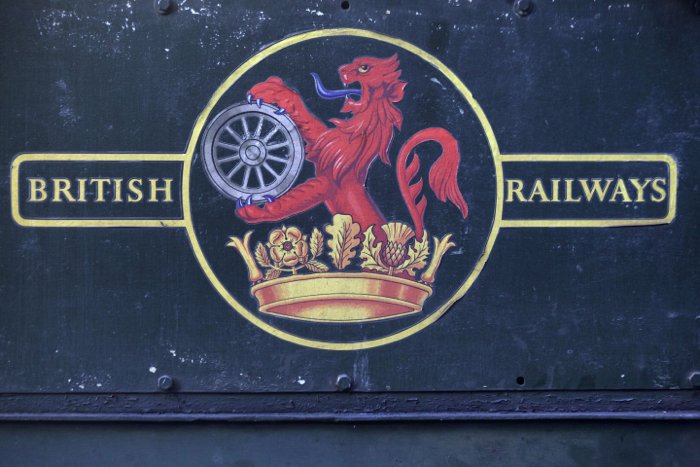
Photograph Daily Life at the Train Station
A train network is a living ecosystem, and a node for people’s daily lives. Many stations serve more than just the trains themselves. This will offer more photography opportunities. You’ll find the majority of western stations to be quite sanitised. But in other parts of the world, you’ll find much more life.
- Train station platforms – These can often include vendors selling their wares. At some stations, you may even see people sleeping on the platform, as they wait for a late overnight train.
- Train markets – Markets found at train stations, that then spread out beyond the perimeter of the train station, are not uncommon when you travel. In Thailand there is a famous market that runs so close to the track that vendors have to move their products when an oncoming train approaches.

Safety Around Trains

Full Steam Ahead!
You’ve now traveled from the beginner’s station, all the way to the knowledgeable pro . It’s time to go and put what you’ve learned into practice, and take some excellent train photos. Have you taken many train photos before? Do you have any advice about how to get the best results? Which pitfalls, if any, did you encounter? Share your thoughts and photos in the comments section.

17 Train Photography Ideas for Your Next Trip
June 18, 2023
Go from bland to Bond with these easy tips for how to take great photos from inside trains. Consider it your train photography guide, ready to go.
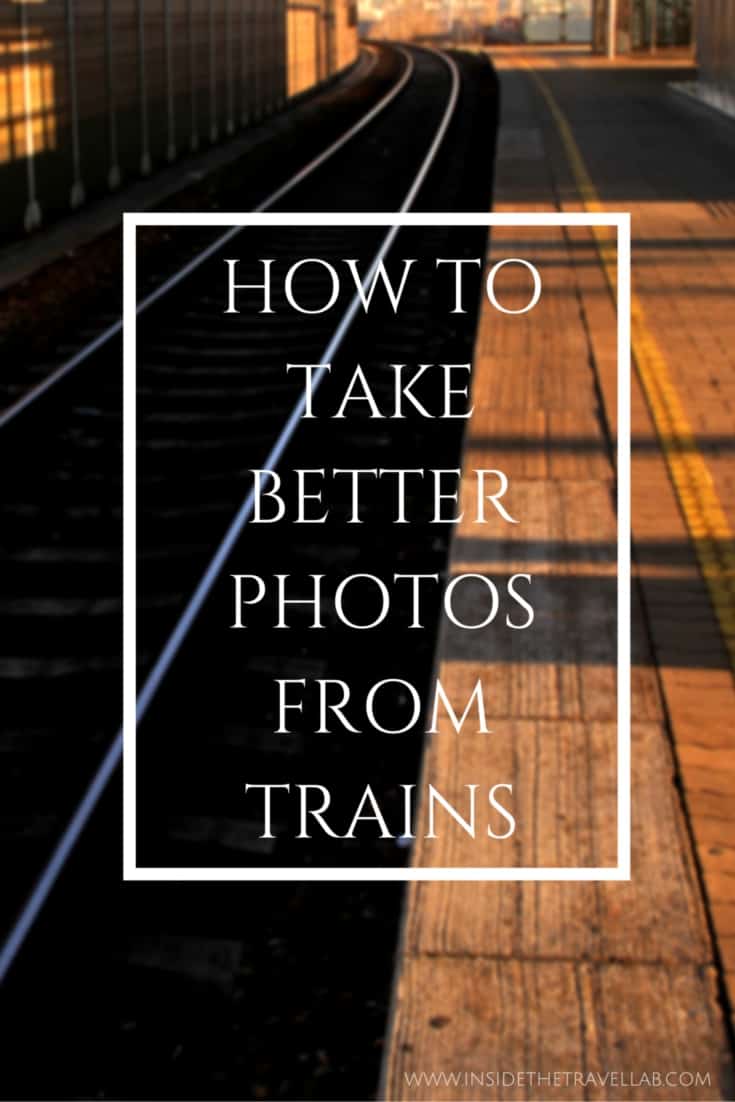
How to Take Better Photos from Moving Trains
Over the years, I’ve taken on plenty of train photography assignments, zooming across rivers, mountains, tunnels and twisting landscapes, camera in hand.
Forget the daily commute, some of the best rail journeys in the world stir the photographic impulse like nothing else on earth. But how do you take good photos from trains?
Since we all travel with a camera these days, even if it’s only our mobile phone, I thought I’d share what I’ve learnt.
Here are my 17 tips to take better photos from a moving train
Inside Train Photography Guide
1) prepare to look like a fool.
Yes, I know I lured you in with talk of James Bond but in reality you’re just going to look… strange. Deal with it and move on.
While taking photos of a beautiful sunset makes you blend in with the crowd, taking photos from a train will attract stares. Don’t let them put you off. Throw shame out the window and click on.
2) Don’t get in anyone’s way
Unless you’re the paparazzi (in which case you won’t care) this should apply for all photo situations really. Don’t be a wallflower, put yourself where you need to be, but don’t become a nuisance.
Why? Well, beyond general human decency there’s some self-interest at stake here too. Rules concerning taking photos on trains are sometimes complicated (if in doubt, check them out) but trouble usually results from misinformed paranoia.
Avoid getting entangled in a conversation with a guard or member of the police by behaving with respect to everyone around you and not shoving a lens in their face (unless they smile and pose, in which case, game on!)
3) Sit on both sides of the train
It’s difficult to tell where the great scenery is going to appear. In an ideal world you’d take the journey twice to get the perfect shot. Or find a source who can tell you in advance where the best bits are. Bet let’s face it, that’s unlikely for most of us most of the time.
Far better is to look around when you get on the train and search for a spot where you can run from left to right as fast and as often as needed. And yes, see point one again for what you will look like while doing this.
4) Don’t use flash
Turn it off. Even “non fancy” cameras like iPhones and point and shoots usually let you silence this beast. Flash can only reach a metre or so and so there’s really no point*. You’re shooting for the scenery beyond right?
5) Avoid the Glass
Glass windows reflect patterns from inside the train and the muck on their surface will ruin your shot. In the old days, this used to be easy: you could just pull down the window. Nowadays, I’ve noticed more and more trains have fixed windows for some spurious reasons like stopping people splattering their skulls against a tunnel while they were concentrating on taking a photo.
But if you can, find the option for shooting into thin air. It removes so many problems. Just make sure your camera is attached to your body and that you don’t splatter your skull against a tunnel because you’re too busy taking a photo…
You might need to use the best camera for backpacking to snap pics free of any signs of blur and reflections instead.
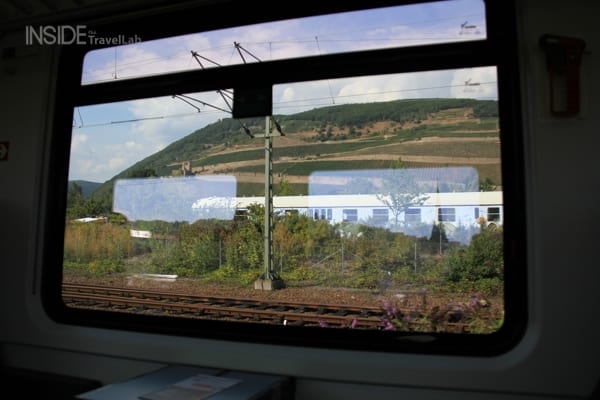
6) Embrace the glass
But I thought you just said…
If you can’t get rid of it, you’re going to have to work with it. Get your lens flat against the glass. Don’t dilly-dally about getting close-ish to it. Get right up against it. I could explain why this helps. But then I’d have to kill you…
6) Cover the furniture
The biggest culprits for reflections in glass are usually brightly coloured tables, arm rests and clothes (usually yours.) Travel with a couple of black jumpers (sweaters? US?) to cover up these pesky objects. And heretofore return to point one…
7) Be Ready
This kinda applies to all photography but it’s especially important here. What does ready mean?
8) Lens cap off
9) battery charged – spare available, 10) fresh, clean memory card – with spare available..
You don’t want to be scrabbling about for these things. You need them right there, ready to go. Passengers take a dim view of you pulling the emergency cord just because you want to go back and have another go at the right shot.
11) Shoot Fast
If you can, set your camera to take as many photos as possible with the shutter button held down. Why? Well, things change fast. And you want to see this don’t you:
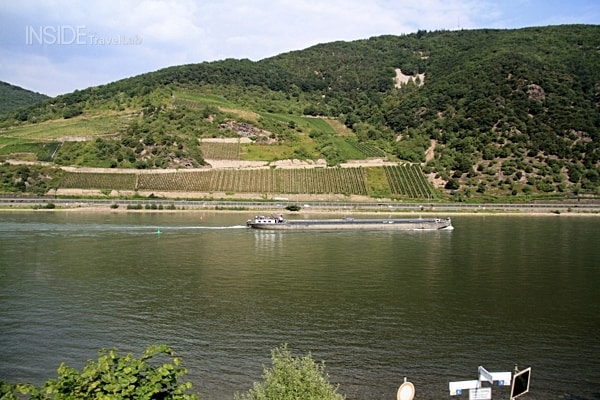
The difference is less than a second…
12) Shoot faster
Switch your camera to action mode if you have it (usually the athlete caught mid stride) or better yet get out of auto altogether and use manual settings.
It obviously varies but a good rule of thumb is a shutter speed (Tv is shutter priority on most cameras) of 1/2000 for crisp scenery shots and 1/750 for blur but not too much blur. Start with those and play around.
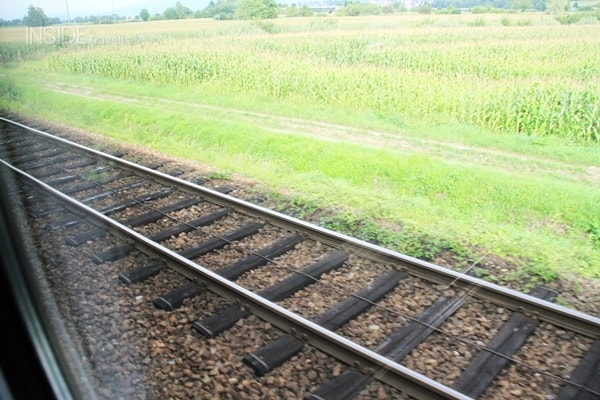
13) Get the weather right
Tricky to control, even for Bond. But moody and overcast is better than sunshine or rain. Too much sun will drive you crazy with shadows and reflections. And rain? Well rain will quickly smudge itself across either the windows or your lens. Most of the time if you’re on the road, you won’t have the chance to avoid this. But if you do have the choice? Aim for the clouds.
14) Don’t forget the rule of thirds
This standard photography chestnut works just as well when shooting from a train. Can’t quite remember what it is? Divide the frame you’re shooting into thirds horizontally and vertically and aim to get the most “interesting” point of your shot where the lines intersect.
If you’re able to lean out (or stand on the station) then the point where the parallel tracks reach a point works well. If you’re confined by glass then make sure not to put your horizon in the middle. Aim for a third.
Need more information? Check out this article on the photography rule of thirds here.
15) Build a tripod
Moving trains, well, move. And bumps and jitters aren’t good for photographs. Steady your camera as much as you can by resting your elbows on the windowsill and table and bracing your back against the seat or the wall. If forced to stand, do the same thing but keep your knees bent to absorb the shocks that way. Yes, I know. Return to point one.
16) Take a break
It’s easy to go a little goggle-eyed and become travel sick with all those focus on moving objects. Take lots of little short breaks to look around or just close your eyes long before you hit this stage. Your temples will thank you.
17) Stand at the back of the train
I have to thank Ralph Velasco for this one. From the back of the train you have a chance of catching the rest of the train curving in front of you if you’re able to lean out the window. Which, let’s face it, looks cool.
And kind of like something you’d see in a James Bond film…Maybe.
How to Take a Photo of a Moving Train
Ah, so you’re not ON the train. You want to take a better photo OF the train as it whizzes past. OK. So, work out whether you want…
- The foreground in focus, with the train a blur
- The train nice and crisp, the background scenery blurred
- Everything in focus
- Nothing in focus/big blobby mess.
For option one. Get your camera very, VERY still. Use your body as a tripod or actually use a tripod. Set a longish shutter speed so that the movement of the train is blurred. Make sure the person or object in your foreground can stay still for this time.
Option two. Choose a fast shutter speed and practice swooshing your camera around to mimic the movement of the train. The idea is that you move in time with the train, blurring the background and keeping the train in focus.
This takes a bit of practice. Steady your body as much as you can, press the camera tight against your face and spin on your heels.
For option three, you need a fast shutter speed and good reflexes. And for number four.. C’mon now!
How about you? Do you have any tips for taking photos on a train?
*Never say never. There are some exceptions. But for most people, most of the time: never.
21 thoughts on “17 Train Photography Ideas for Your Next Trip”
Great site I have just booked Transiberian train trip st petersberg to Beijing looking for best camera or new lens any suggestions
Oh – that sounds wonderful! It’s a journey I’d love to do some day. I’m very happy with my Canon 7D but it’s a bit on the heavy side if you’ve only a passing interest in photography.
Leave a comment Cancel reply
This site uses Akismet to reduce spam. Learn how your comment data is processed .

Top 10 Guide to Better Railroad Photography
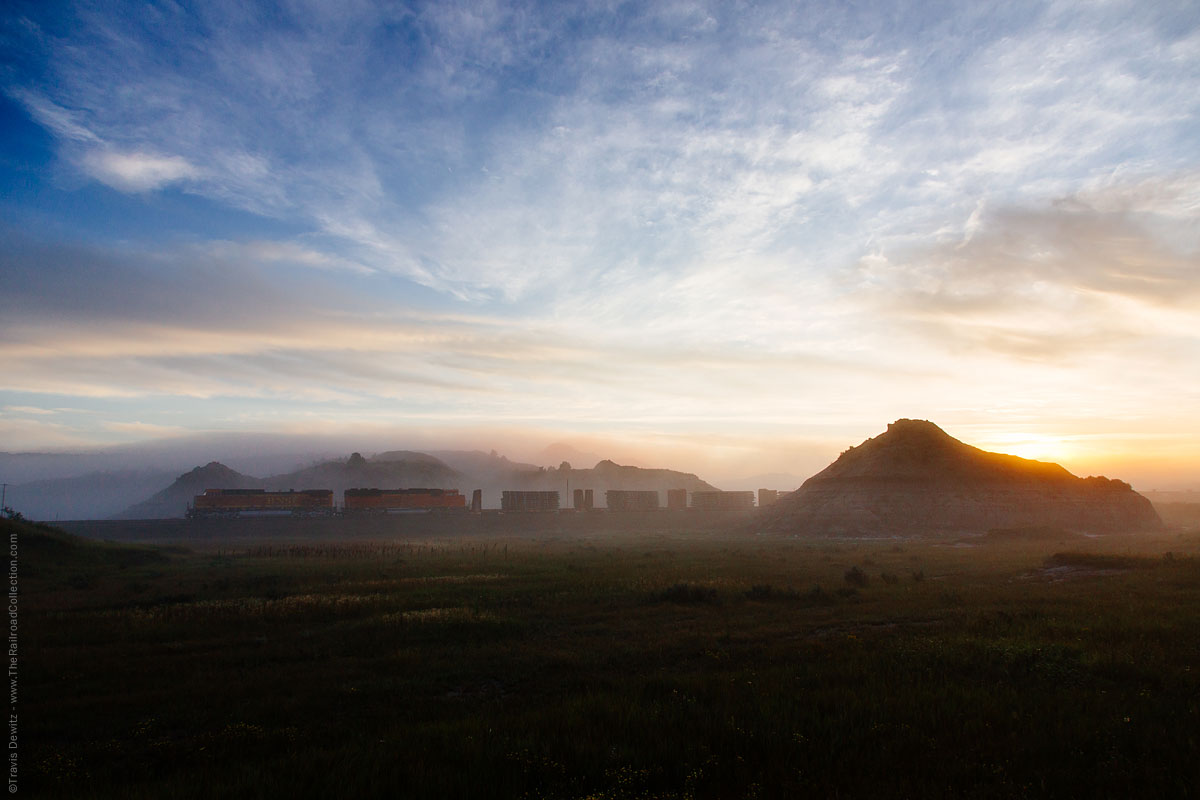
Top 10 Tips to Become a Better Photographer
As photographers, we all have our signature style in how we create a photo. We are artists that have our own way to paint a scene in the way we feel fit. I consider myself more of a scene shooter as I prefer to capture the place in which trains live and roam. Others maybe more documentation oriented or even focused on the smallest of details. There is no wrong or right way, just ways that we prefer over others. I am going to share with you my top 10 ways to improve your photography. Not all of these tips may apply to your style of artistry, but many are universal among all types of photography and lay the foundation for great images.
You have to immerse yourself in the right environment, and you can only be lucky if you’re there. You need to be trackside if you want to shoot trains. You must be trackside in the type of light and weather that you prefer to take pictures in. I love shooting in the first and last light of day, and it takes dedication for me to do that. I don’t enjoy getting up before the sunrise, but it’s a choice I make and sometimes I am left with disappointment as the train may not come through. That is always a risk that you need to be prepared for, but it makes the times that everything falls into place more meaningful.
Practice; the basic element everyone knows to do, yet fail to master. You need to practice and experiment if you want to grow as a photographer. You should search out places and people that will critique your best images. Only share a couple at a time to photography forums or other photographers whose work you admire. I am speaking bluntly, you need to prepare yourself and accept critiques that you will not always agree with. This part of growing is not only imperative, but vital if you want to move forward as a photographer. Constructive criticism from the best photographers in the field will set you apart in the long run if you take their advice to improve on your craft.
Number Three
Learn basic photography techniques and rules. Rules? Yes, even art has rules that you should follow. I’m not going to list them here but there are many resources that explain these in detail online and in photography books. One example would be the rule of thirds which will help get in the right direction to find the others. I recommend following these rules for a while until you will feel confident in your skillset and even dabble in breaking them when it fits. I can’t tell you when or which rules you can break, but you will learn through time that you can.
Number Four
Work hard to control your camera, make it a priority. Learn how to maximize the camera you own and how to use all of its controls; especially to focus quickly and accurately. One tip I can give here is that many cameras’ focusing systems use contrast in your subject for it to focus. This becomes very apparent in low light as the light fades so does the contrast of subjects. By knowing this, you can look for something about the same distance away with more contrast to focus on. When not using a tripod, which I rarely use, learn how to hold and support your camera to create a stable shake free platform while shooting. Learn what speeds you need to shoot above depending on focal length, and speed of your subject. Other factors play a part in this, such as distance and direction of your subject. Some basic guidelines would to be to shoot at or above 1/500th or over the focal length you are shooting. So if you are shooting with a 600mm lens you should be at or over 1/600th. You will learn the times you can or have to shoot under 1/500th, but it is a great place to start. You will also learn that iso settings affect image quality differently between different cameras. Some cameras can only go up to iso 800 before quality degrades too much while others can go up to iso 2500 with good results.
Number Five
Most of us love looking at others railroad photography; studying photography you love is a key component to continuous growth as a photographer. Write a list of what you find yourself drawn to in others work. The hard part here is when you are out trackside to be able to break out of your normal mode and put that list to use. Force yourself to shoot in a way you may be uncomfortable with. Breaking habits is always hard, but needed for true self evaluation and growth.
If you are using a DSLR, try experimenting with some of the settings. Use slower shutter speeds like 1/30 or slower to create blur in the train or to pan the train with to create blur in the background. This can create a sense of motion in your images which train images usually lack. Diesel locomotives just don’t show many signs of motion like steam locomotives use to with billowing steam and smoke and moving drive rods.
Number Seven
This tip is another one for the DSLR user. If you have multiple lenses, pick the lens you use least often and force yourself to only use that lens for an entire day. This will get you out of your comfort zone and encourage exploration of new angles and ways to photograph a train or the railroad. This one was initially tough for me, but I did learn so much more about the limitations of the lens I used along with its capabilities. It got my feet wet as I needed to move in closer to get the shots I wanted.
Number Eight
Pick a small specific area to document and showcase different angles that depict that area the best. Try to capture the different operations that are most common and focus on this area in full detail which means you need to shoot from wide to tight. You need to go wide to show the scene all the way down the small details like a date nail in a post. Strive to capture the people that work for and with the railroad and the surrounding community. Once you feel like you have enough to tell the story, put them together and share that story with stakeholders and those that have a vested interest.
Number Nine
Remember the railroad is always changing and sometimes it is changing much quicker than you may realize. Try to capture some of the infrastructure on its own or as part of a scene with a train. What is here today may not be here tomorrow. Everything you capture today you will look back decades later and be thankful that you did. I was recently looking back at my photos from just a few years ago and could not believe all the changes in just that short period of time. Years seem to go by slow today, but fast as we look back to yesterday.
Find a place or person to share your passion for trains with. There are many railroad sites, forums, and groups for you to connect with others with the same interest. There are also events, shows, conferences that are held throughout the year that you can be a part of. Find the place that works best for you and that shares the most interest in what you enjoy most. I personally find myself using Yahoo groups, Railpictures.net, Flickr, and going to the Center for Railroad Photography and Art Conference as my main outlets.
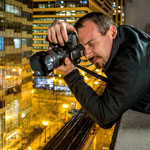
About the Author Travis Dewitz is a professional photographer located out of Eau Claire, Wisconsin. He has been published in many books and magazines including many in the railroad industry. He does a lot of photography work and environmental portraitures for many companies and heavy industries in and around Wisconsin. He has grown up with trains and railroads are one of his passions that he pursues. His railroad photography can be seen on his website The Railroad Collection .
Like and Share with your friends and family!
Comments (2).
Robert Teed
Thanks for the Tips! There are very few places to go on the web to learn Train Photography. My company has put on a few Railroad Photo Shoots and plan to do more. A good write up on Photographing Trains at Night would be awesome to find. Shooting steam locomotives even during the day can prove challenging because most of them a painted dark colors and you can’t always get the lighting conditions necessary.
Travis Dewitz
I have a guest post coming in the future about flash photography at night.
Leave a Reply Cancel reply
Your email address will not be published. Required fields are marked *
Save my name, email, and website in this browser for the next time I comment.
Notify me of follow-up comments by email.
Notify me of new posts by email.
Why Sign In? Subscribers, sign in to access exclusive content. Unlimited Members, sign in to enjoy sitewide access.
Railroads & Locomotives Photography Tips Basic railroad photography: One camera, one lens
Basic railroad photography: One camera, one lens

Photographic creativity is in your mind, not the camera
Email Newsletter
Get the newest photos, videos, stories, and more from Trains.com brands. Sign-up for email today!
Railroad photography
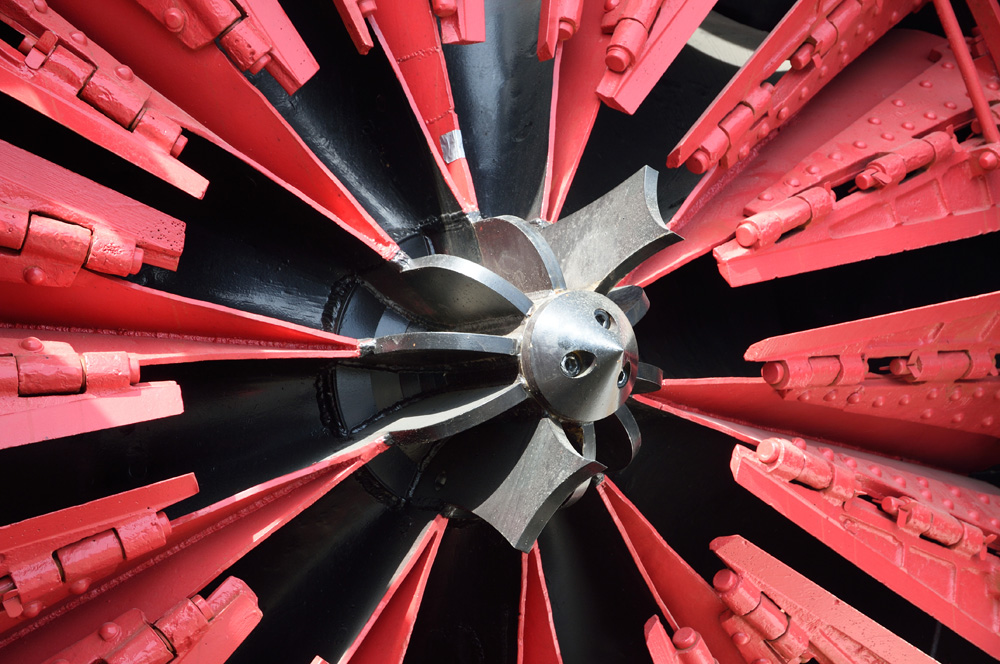
It can be intimidating sometimes, waiting to photograph a train with your camera and the 18-55 mm kit lens, standing next to a fellow fan sporting a monstrous telephoto zoom that in some cases costs more than the car that got you here. That person is going to get a shot you couldn’t even imagine with your gear.
Well, maybe. However, the equipment does not make the photographer. Yes, in the right hands, an extremely long or ultra-wide lenses can certainly provide a unique perspective, but not necessarily a better one.
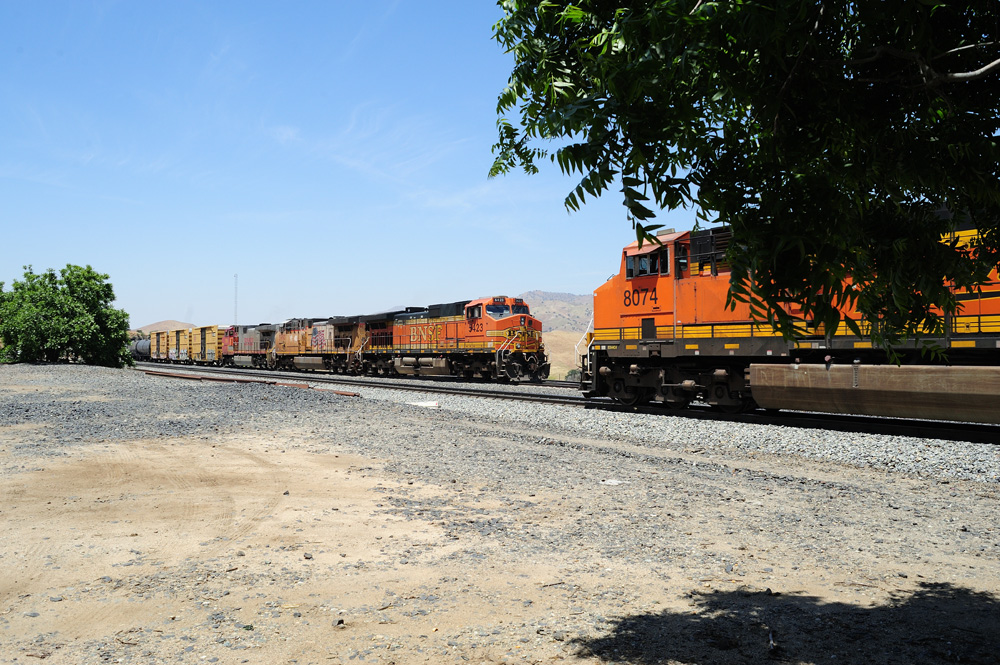
To prove that point, just look at some of the images from some of the great rail photographers who cut their teeth using Speed Graphics, Rolleis, Voightlanders, and Plaubels of the past. Hastings, Wood, Steinheimer, and many others had made their reputations by understanding their equipment, envisioning the scene, and getting the shot.
While any one of these shooters would have been thrilled to have a super telephoto or wide-angle zoom lenses, for the most part they did not. Their resources were usually limited to “normal” lenses or perhaps modest wide angle or short telephotos. Looking at those images today, nobody is complaining. Most of us are in awe of their ability to get the most out of what they had at the time.
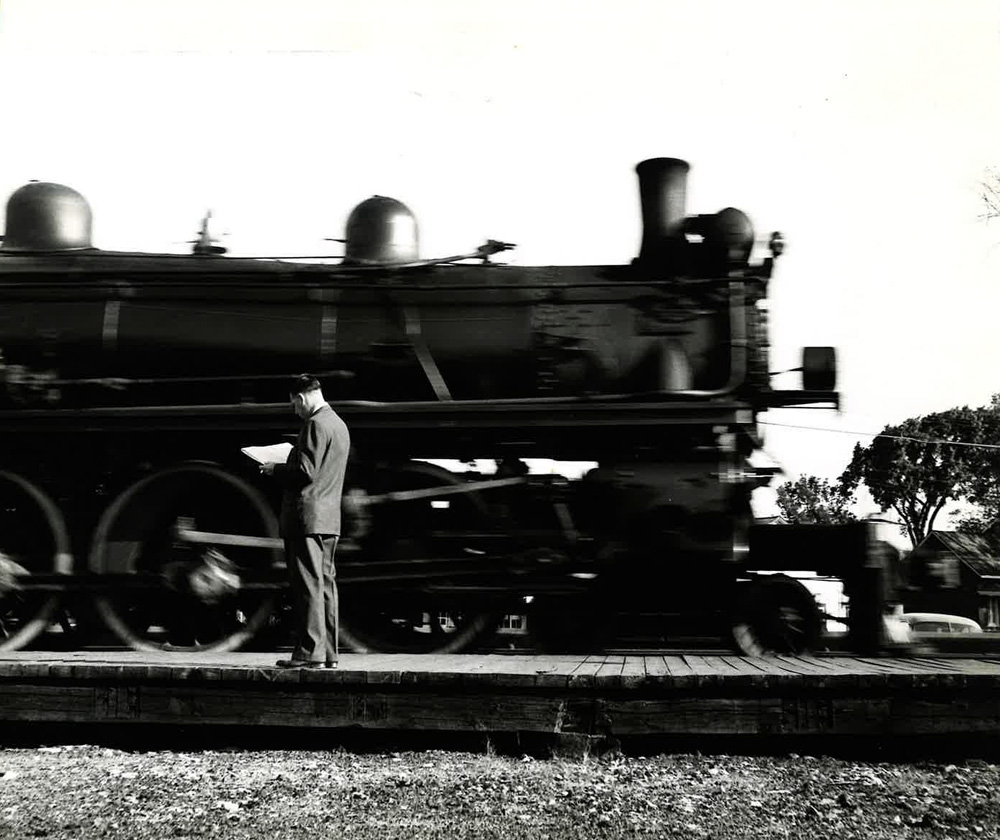
Today’s digital cameras are often sold as a “kit” including both body and a medium-wide-to-short-telephoto zoom lens (18-55mm is a typical example). Modern lenses, even inexpensive kit ones, are incredible pieces of technology, capable of resolving power unparalleled in previous decades.
What makes most rail photography stand out, whether it be from previous decades or today, is the subject, the framing, and the ability to create a scene. Invariably we can’t get the sun in the right spot, the underframe of the train is too dark, a train popped up unexpectedly in a different direction, or the only cloud in the sky decided to park right over where you are.
There’s an old adage with newspaper photographers; f8 and be there. How you craft the scene in front of you depends on talent, experience, and a lot of luck. Not every shot is going to be a winner, but when everything comes together, you’ll know it. And no one is going to care what lens you used.
Perhaps Hal Miller of sister Kalmbach publication Classic Toy Trains , and former Managing Editor of Trains sums it up best.
“You’ll never hear anyone looking at an interesting photo say, ‘Well it’s great but it would have been better if he’d used ‘X’ lens or ‘Y’ camera.’ You were either there and you got the shot, or you didn’t.”
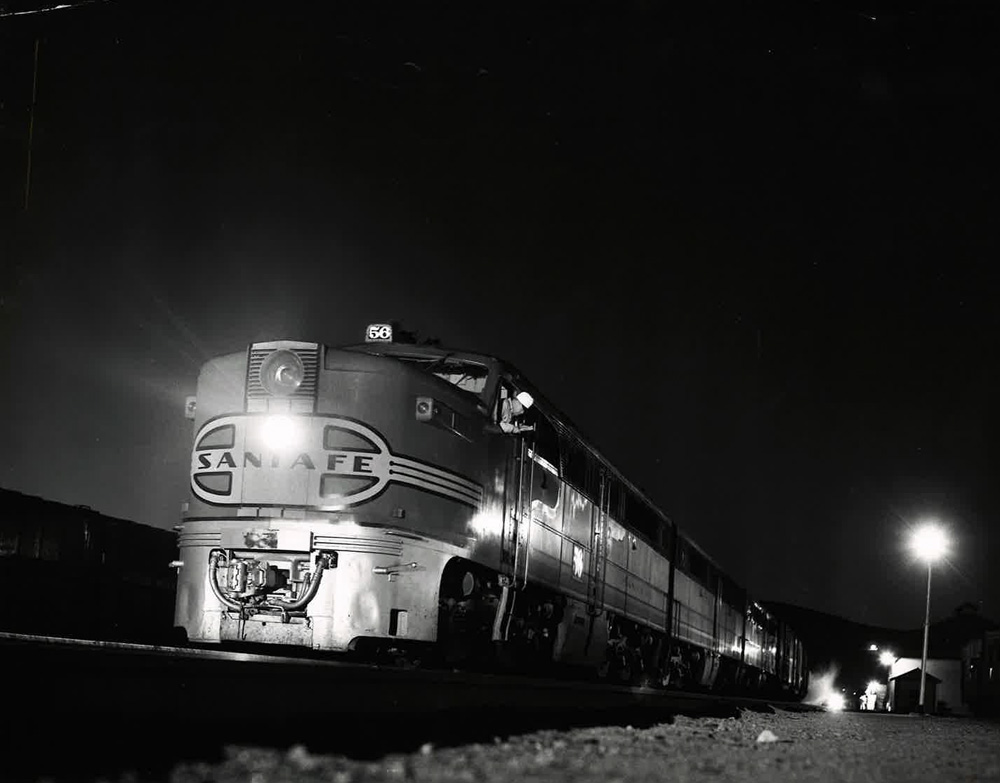
3 thoughts on “ Basic railroad photography: One camera, one lens ”
I used an iPhone 14 Pro on a recent trip to the East Broad Top. I could vary the shutter speed, iso, wide angle, ultra wide-angle and telephoto. The results were just fine.
How about one phone? I’m not there yet but it’s coming.
That photo that Don Wood shot of TT-1 going around Horseshoe Curve was taken with a Speed Graphic. Looks like he may have been standing on one of the caboose’s platforms.

The value of timetables
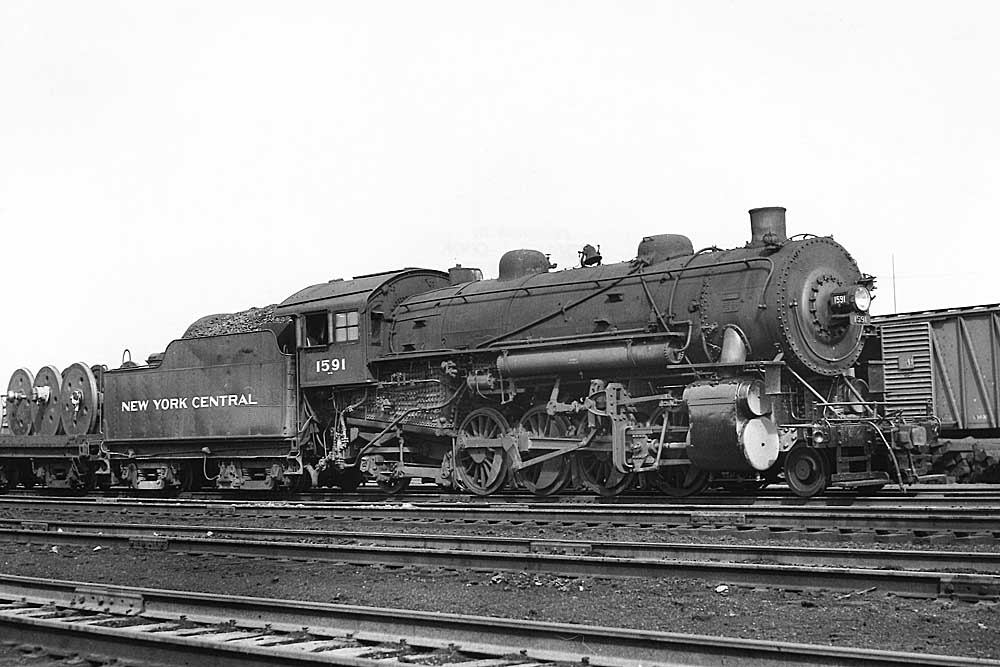
The 2-8-2 Mikado-type steam locomotive
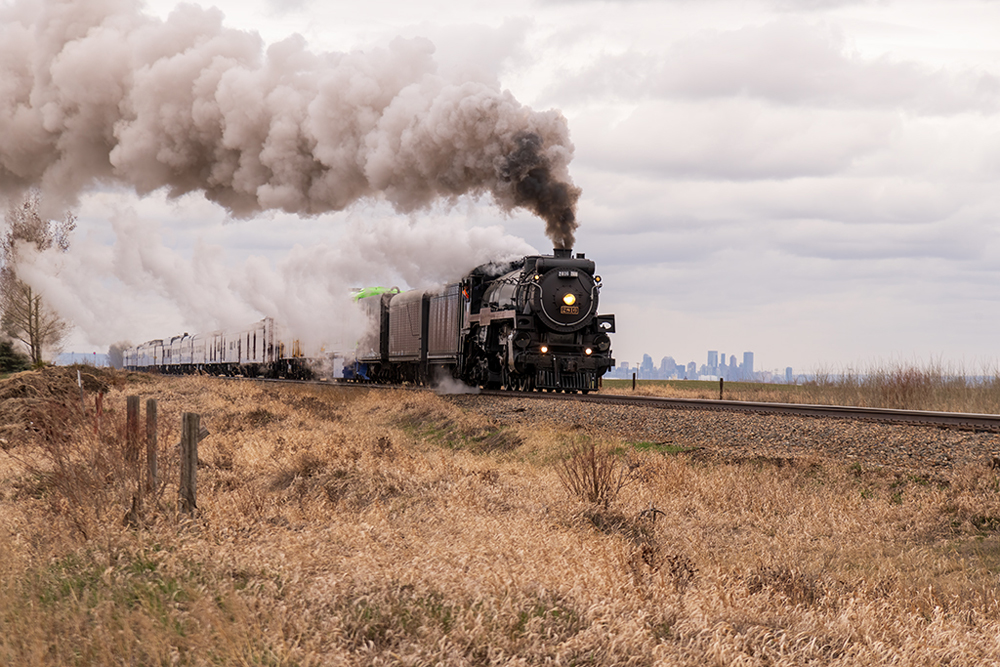
CPKC’s Final Spike Anniversary Steam Tour enters the US
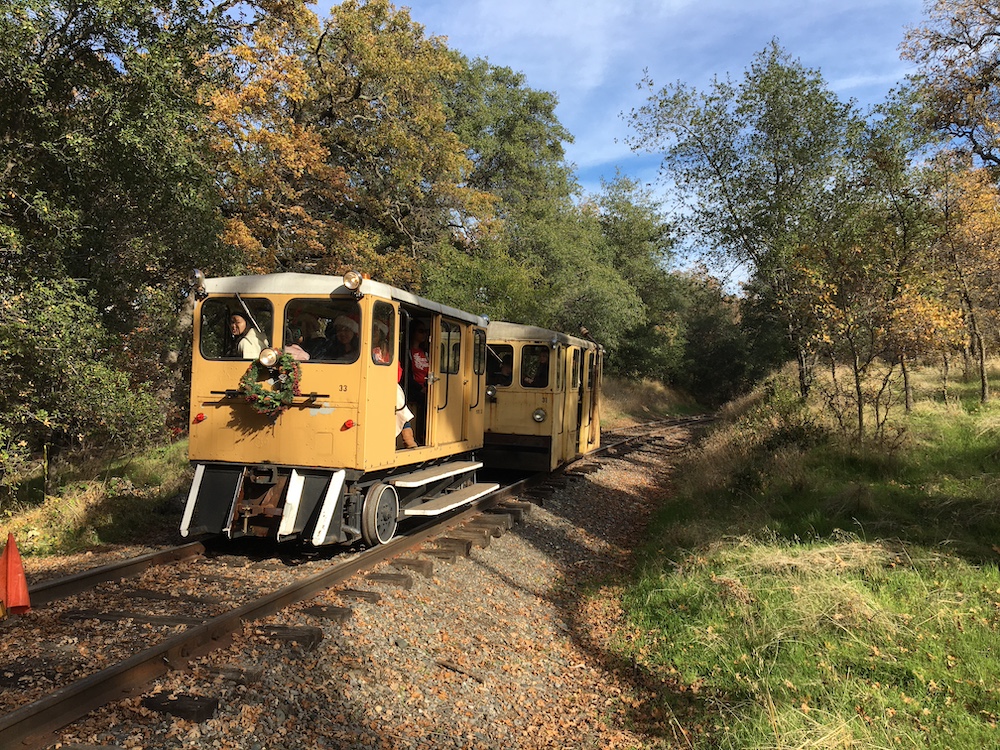
Motorcar rides on California’s historic Placerville Branch
Shop our Hobby Store
Members enjoy 15% off any purchase in our store. Join Today !

How Diesel and Electric Locomotives Work
After reading this book, you will understand what is happening inside the next locomotive you see!

Great American Steam Locomotives: Articulateds DVD
Articulateds capture the heart and minds of anyone who comes out to see them.

Steam Across America
See historic power come alive in this all-new special issue from Trains magazine!

Milwaukee Road Metal Sign
Celebrate the Milwaukee Road with this metal sign
Stay updated
Get updates and special offers via email from Trains.com brands!
Arts & Culture | July/August 2022
These Photographs Capture the Indescribable Glory of Trains
America’s fascination with trains is fast-tracked in this study of passing freight
:focal(2836x945:2837x946)/https://tf-cmsv2-smithsonianmag-media.s3.amazonaws.com/filer_public/08/70/08704008-2fc8-473f-b27e-194ac3f2e905/julaug2022_g01_mallonpassingfreight.jpg)
Photographs by Stephen Mallon
Text by Terence Monmaney
Is there any disputing the idea that Americans can get a little obsessed by trains? From a tot’s crayoned red caboose to the self-described train nerd’s bucket list (Alaska Railroad’s Denali Star? Check. Grand Canyon Railway? Yup. Napa Valley Wine Train? Cheers!), the romance of the rails exerts a pull only slightly less powerful than G.E.’s legendary 8,500-horsepower “Big Blow” locomotive.
Stephen Mallon, a photographer in the Hudson Valley of New York, has long been in the thrall of trains, among other large machines. Over the last four years, as work or pleasure set him in motion across the United States, he sought out locales—scenic, industrial, rural, urban—where he could do his own special trainspotting.
The result is a series of striking portraits of freight cars and locomotives. He created each one as a train rolled by. Back in his studio, he cropped the picture to isolate one car, composing it as if it were a still life. The approach might sound fanciful, but, as Mallon says, every passing train is unique, a never-seen-before combination of cars, place and time. “This project is never going to be repeatable,” Mallon says of the visual novelty. He’s also cognizant that some carriers seem headed for the end of the line.
For now, some 1.7 million freight cars and locomotives are at large in the United States, and what marvelous contraptions they are, as you can see through Mallon’s lens: cars designed just to transport automobiles, or chemicals, or gravel, or what have you. The immensity, power and speed of this thundering enterprise are all thrilling. It’s also gratifying to think about these great steel conveyances hauling stuff across the land and to be reminded that, yes, we’re connected.
Reporting and research for the accompanying text was done by Teddy Brokaw.
/https://tf-cmsv2-smithsonianmag-media.s3.amazonaws.com/filer_public/10/f8/10f86b7a-f698-42d0-881d-12b22a6db905/julaug2022_g05_mallonpassingfreight.jpg)
Get the latest Travel & Culture stories in your inbox.
Stephen Mallon | READ MORE
Specializing in photography of construction sites and machinery, Stephen Mallon has exhibited work widely, including shows at the New York Transit Museum and the East River Ferry.
Terence Monmaney | READ MORE
Terence Monmaney is an executive editor of Smithsonian magazine.

- PHOTOGRAPHY
Not Your Typical Travelogue: A Photographer’s Train-Hopping Adventures
The first time Swampy hopped a freight train, he was 18. He was traveling north of his native California when he ran into a train-hopping friend in Portland, Oregon, who suggested they hitch a ride back down south. He was broke, so the idea was appealing. “It was pouring, and we were hiding under the bridge from the rain, and this train was rolling through, and it wasn’t stopping. My friend told me, ‘You know, this train’s not gonna stop. We have to catch it on the fly as it’s rolling.’”
For someone like me, who balks at jaywalking and No Trespassing signs, this is absolutely terrifying. And this would make me the polar opposite of Swampy, the twentysomething counter-cultural artist who prefers to remain anonymous and spends time in the warm months hopping trains when not squatting in Oakland, California.
“So we kind of just ran for it and slipped in, like a Slip ‘N Slide,” he says, continuing the story of his first ride. “And you know, it’s all wet, so it was just a pretty intense experience for the first time, riding a train. We watched this crazy storm all around us, going through the rural areas in Oregon. It really blew my mind. It was amazing.”
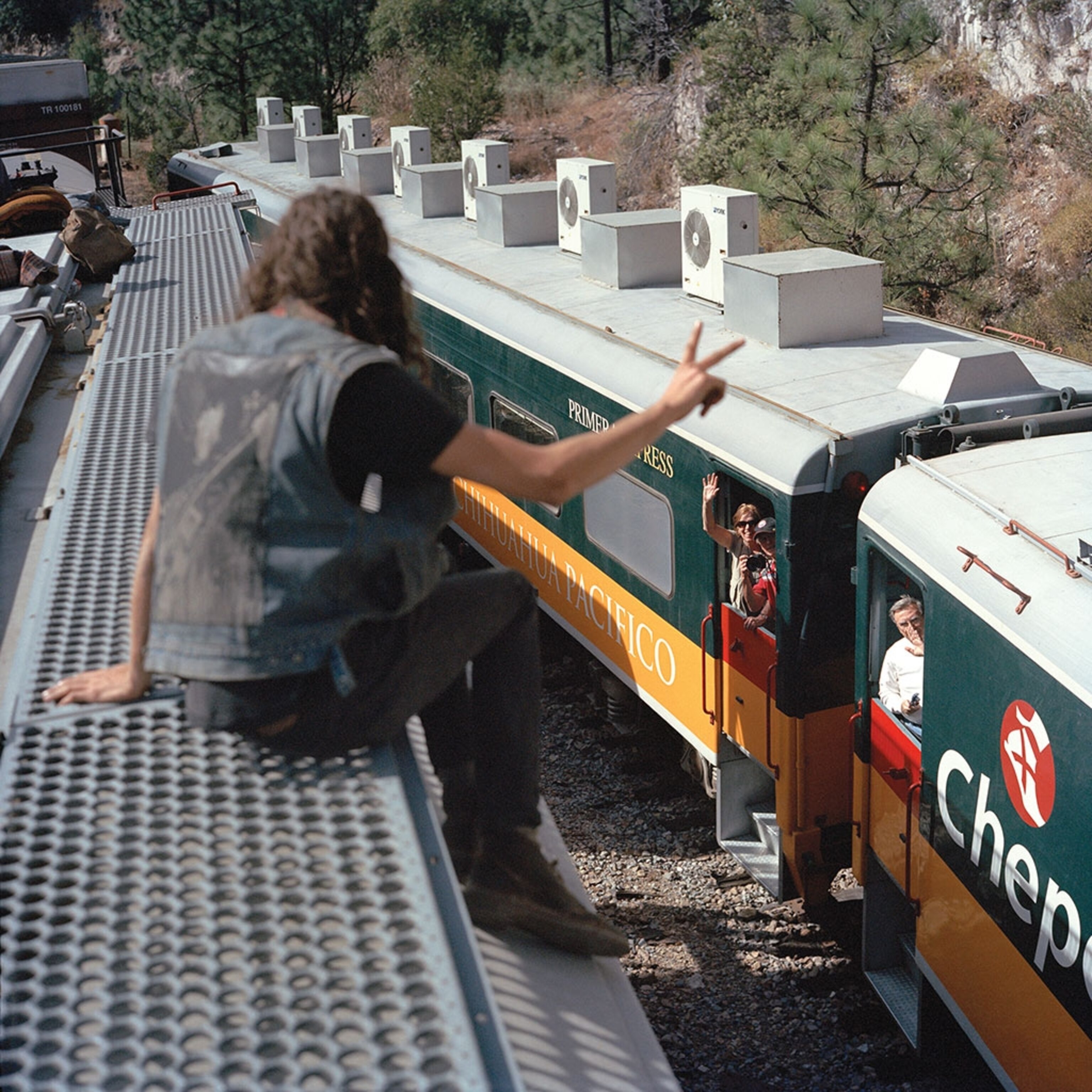
He and I are an unlikely pair, but his photographs are what bring us together. While perhaps best known for his graffiti art, Swampy is also an avid photographer. He recently published a book of photographs entitled NBD . Train hoppers traditionally leave a tag indicating the direction they’re going in, and Swampy’s was “NBD,” for northbound, taken from the year he spent traveling from Mexico to Alaska primarily by train. We’re not talking about “riding the varnish,” hobo-speak for riding inside the comfort of a passenger train like most of us do. His trips were spent stowed away inside—or on top of—a boxcar.
Sneaking onto freight trains is, of course, illegal and, especially in the post-September 11 security environment, most certainly not worth the hassle or penalty. It’s also extremely dangerous. Riders have been killed or maimed. “People have asked why it seems like riding trains is so idyllic and romantic,” Swampy says. His answer: Not so. He’s careful to express that this is something he does for himself alone and that he doesn’t condone or suggest it to anyone.
Aside from the physical and legal perils, there’s the matter of basic comfort: Laying a sleeping bag on the hard metal floor of a rail car as it rumbles down the tracks is not for those accustomed to creature comforts.
Yet his photographs of this life-on-the-edge experience illicit a vicarious thrill. From his forbidden vantage point, he captures vistas seldom seen by anyone other than railway engineers. His fellow travelers, when he does run into them, are photographed from behind. This is out of respect for their anonymity, Swampy says, but also to allow viewers like me to follow along on this clandestine adventure from the law-abiding coziness of my desk.

What is it about this that resonates with Swampy? “The thing you’re doing doesn’t feel mapped out and curated for consumption,” he says of his self-made adventures.
“Sometimes it’s painfully boring, because you’re waiting for a train for days,” he continues. “And I’m asking myself, ‘Why am I doing this? I should just go buy a bus ticket or something.’ But it’s those lows that make the highs so amazing when you’re actually on that train going 60 miles per hour through the desert or the forest.”
And what must his mother think of all this? “My mom is going to be so excited,” he says of seeing his work featured on Proof. “This is National Geographic. That’s a mom pleaser for sure.”

More of Swampy’s photographs and information on purchasing his book can be found on his website . The photographs published in NBD were part of a solo exhibit this summer at the Chandran Gallery in San Francisco.
Related Topics
You may also like.

More than just a 'mystery' train, the Orient Express whisked the elite across Europe in luxury and style
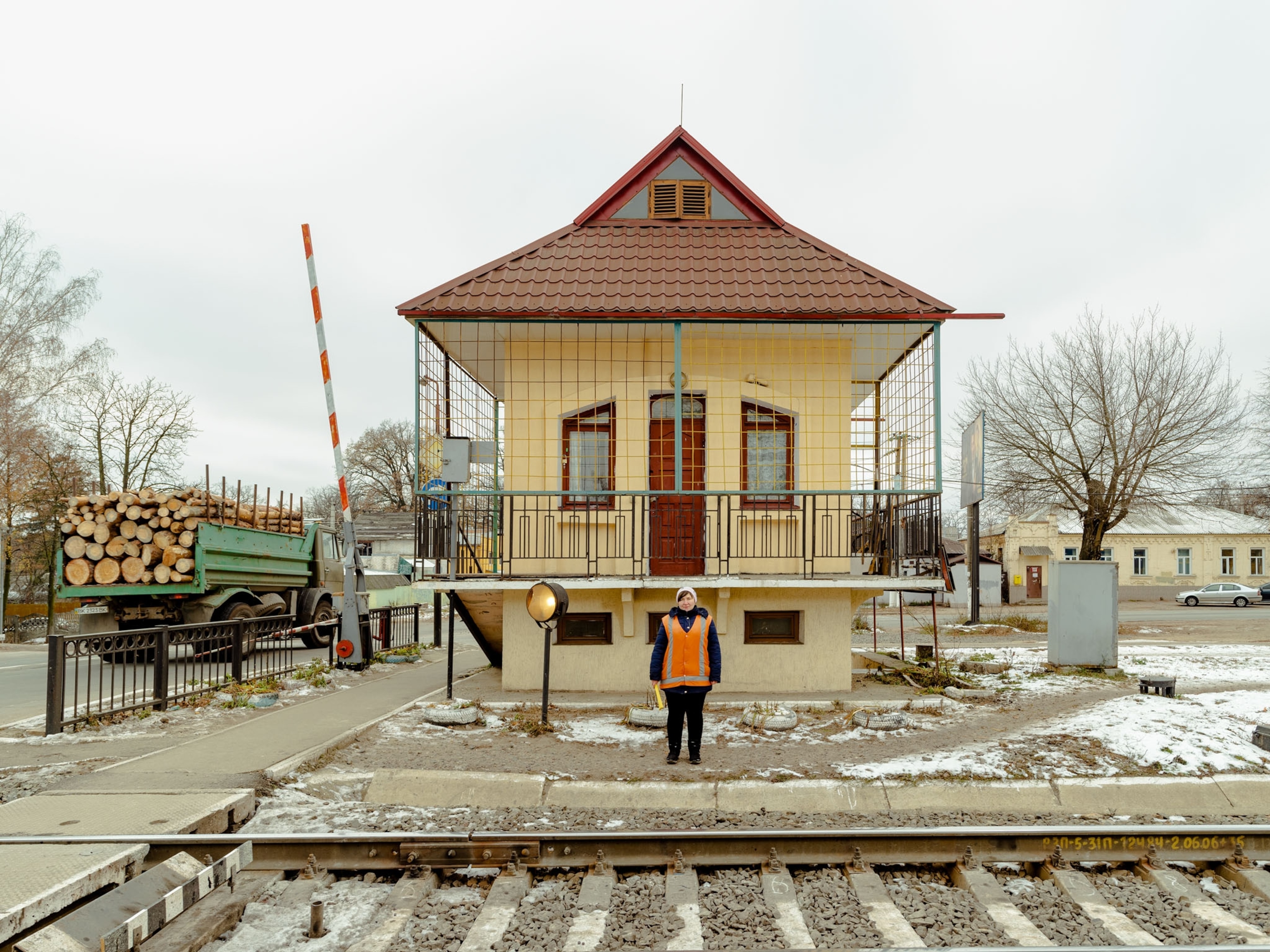
The colorful ‘train ladies’ of Ukraine

How can we protect grizzly bears from their biggest threat—trains?

20 of the coolest travel adventures for 2024

Here’s what worries engineers the most about U.S. infrastructure
- Environment
History & Culture
- History & Culture
- History Magazine
- Mind, Body, Wonder
- Coronavirus Coverage
- Paid Content
- Terms of Use
- Privacy Policy
- Your US State Privacy Rights
- Children's Online Privacy Policy
- Interest-Based Ads
- About Nielsen Measurement
- Do Not Sell or Share My Personal Information
- Nat Geo Home
- Attend a Live Event
- Book a Trip
- Inspire Your Kids
- Shop Nat Geo
- Visit the D.C. Museum
- Learn About Our Impact
- Support Our Mission
- Advertise With Us
- Customer Service
- Renew Subscription
- Manage Your Subscription
- Work at Nat Geo
- Sign Up for Our Newsletters
- Contribute to Protect the Planet
Copyright © 1996-2015 National Geographic Society Copyright © 2015-2024 National Geographic Partners, LLC. All rights reserved

Railroad Heritage
[wp-imageflow2]
The Center’s journal, Railroad Heritage , debuted in 2000, and we currently publish two to three issues per year. Coverage spans a wide range of topics within railroad photography and art.
The Center’s journal, Railroad Heritage ®, and other publications fill a unique niche: using photographs and art to inform the public and rail enthusiasts alike about the influence of railroads on economic growth and development, popular culture, and the lives of the hundreds of thousands of men and women who built and maintain North America’s railroads. Excellent images and highly researched and thoughtful writing characterize our publications.
No. 26, 2011, Railroad Preservation in a Nutshell
Railroad Heritage ® 26—Railroad Preservation in a Nutshell—is the second in a series that began with issue no. 21. This installment presents an illustrated overview of railroads and preservation from 1828 to 2011, distilled into 44 entries and 57 illustrations, many in color. It shows how the field is vital to public awareness of the railroad and its impact, and that preservation is far more diverse than the obvious categories of locomotives, cars, and infrastructure. It also includes myriad intangibles like methods of constructions and repair, scheduling, labor issues, landscape issues, an incredible variety of work, and much, much more. The issue, which was supported by the North American Railway Foundation, concludes with a gallery of young photographers’ work on contemporary preservations topics.
No. 25, 2011, Axel Zwingenberger, James Valle, Conference
Railroad Heritage ® 25 spotlights Axel Zwingenberger, a world-renouned boogie-woogie pianist from Hamburg, Germany, who also makes stunning night photographs of German steam locomotives. Zwingenberger headlines an impressive lineup at the upcoming “Conversations” conference, and the issue provides an overview of all the presentations and presenters. Other features include a look at author James Valle’s collaboration with photographer Jack Delano to produce The Iron Horse at War, and a sculpture by Rich Harney that was inspired by a photograph of railroad workers. The issue concludes with an honor roll of our 2010 donors, whose support make possible the Center and its work.
No. 24, 2010, Olive Dennis, Awards, Exhibitions
Railroad Heritage ® 24 presents a seven-page, in-depth look at Olive Dennis, a notable civil engineer and designer for the Baltimore & Ohio Railroad from 1920 to 1954. Winners of the 2010 Creative Photography Awards Program appear in color and black-and-white, along with an overview of the program and a mini-profile of the winner, 22-year-old Brandon Robert Smith. A two-page interview with John H. White, Jr., transporation curator at the Smithsonian Institute from 1958 to 1990, discusses the importance of historic railroad photographs and how he goes about finding them. Additional stories highlight the record-breaking 2010 “Conversations” conference, our David Plowden exhibition and event, and the results of our recent members’ survey.
No. 23, 2010, Conversations, Otto Kuhler, David Plowden
Railroad Heritage ® 23 features an eight-page profile of Ted Benson and Tom Tayor, California photographers who are among the presenters at the Center’s “Conversations about Photography” conference April 23-25. The issue has a wealth of information about railroad art and photography: industrial designer Otto Kuhler, with one of his watercolors in color on the cover and a story about his efforts to promote streamlined steam locomotives; a color center spread showing a rescued mural at the Brotherhood of Locomotive Engineers and Trainmen headquarters in Cleveland; David Plowden’s new book and a related exhibition; preservation story; and a list of the Center’s 2009 Donors, a way of saying thank you for gifts received during the year.
No. 22, 2009, Jack Delano and Chicago Union Station
Railroad Heritage ® 22, the Center begins a series, “Faces of Railroading,?about Jack Delano and his portraits of people and railroads in preparation for an exhibition in Chicago. The Union Station workers identified in the issue were a railroad family, and when Delano photographed them in 1943 many of them had been working together in the impressive structure since it opened in 1925. The Center is taking a closer look at their lives to recognize them for their work and honor their descendants. Other highlights of the journal include color and black-and-white photos of the 2009 awards program, plus stories about the Center’s 2009 activities, the 2010 “Conversations about Photography?conference, and profiles of photographer Frank Barry and the designer of the Southern Pacific’s 1937 Daylight passenger train.
Another story about Union Station appears in Railroad Heritage No. 5, 2002 (out of print). It has color photos by Mel Patrick and a review of photography at the station. It is available for download here as a 336KB PDF file.
No. 21, 2009, North American Railroad History in a Nutshell
Railroad Heritage ® 21 is a quick-and-easy illustrated guide called “North American Railroad History in a Nutshell.?It showcases 50 images, 22 in color, each accompanied by a description that explains its importance and how it relates to railroad history. The selection summarizes in 48 pages the growth and change in railroading from the 1850s to today. The illustrations were distilled from more than 1,300 entries on the Center’s Internet archive and web portal, railroadheritage.org, a project supported by the North American Railway Foundation, Harrisburg, Pennsylvania. As a bonus, the issue includes the story of Lewis W. Hine’s iconic photographic portrait of a locomotive engineer whom he called “monarch of the rail.?The image is placed in the historical contexts of its journalistic and commercial uses, and the engineer is identified as a Pennsylvania Railroad real-life figure.
No. 20, 2009, Walker Evans, American Communities, and the Railroad
Railroad Heritage ® 20 features “Walker Evans, American Communities, and the Railroad?by Tony Reevy, an article based on his presentation at our 2008 conference. Reevy writes that “Evans (1903-75) was one of the most noted and original American photographers of the twentieth century, but has not yet received sufficient recognition for his works that focus on the American railroad.” The issue also has our 2008 photo award winners in color on the cover and center pages from the theme “sense of place.” Entrants to the 2008 award program responded with very high caliber images, resulting in a record number of awards. There’s also a photo-story about William Henry Jackson’s work for the Baltimore & Ohio exhibitions at two world’s fairs, and an announcement of a new inniative at railroadheritage.org.
No. 19, 2008, Ted Rose: The Artist’s Early Photography
Railroad Heritage ® 19, “Ted Rose: The Artist’s Early Photography,?focuses on the photographic accomplishments of Rose (1940-2002), known mostly for his stunning watercolors but who also was an excellent photographer as a youth and young man. It features 40 photographs, 37 of them by Rose, and one painting, plus essays by Robert Ewing, director emeritus of the Fine Arts Museum of the Museum of New Mexico; Robert Ludwig, who often traveled with Rose to photograph the trains; and John Gruber, president of the Center. Between 1956 and 1962, Rose followed trains and rode the rails in the U.S., Canada, Mexico, and Guatemala. His black-and-white photographs taken during the journeys capture the last days of active steam railroading in America. Their quality also hints at an artistic impulse that was expressed in his painting.
No. 18, 2007, Railroading Journeys
Railroading Journeys, Railroad Heritage ® 18, is a special retrospective issue devoted to the life and times of Lucius Beebe and Charles Clegg whose books changed the way Americans think about–and look at–railroads and railroading. The 32-page issue has 59 photographs, 52 of them by Beebe or Clegg, some of them never before published. The issue considers their pictures afresh (each had a distinctive style), discusses some of the influences on their work, and defines their legacy. In their years of living in the West, beginning in 1950, Beebe and Clegg produced about thirty books, most of them devoted to railroading. A review in Railfan and Railroad (February 2008, page 56) calls attention to the introduction by Clegg’s sister, Ann Clegg Holloway. Railroad History No. 197 (Fall-Winter 2007) devoted page five to the retrospective, praising its “analysis of composition, framing, and tonal elements” of the photographs by Beebe and Clegg. The Center’s print publication, Railroad Heritage, now is complemented by an Internet archive, railroadheritage.org. You can see eight of the Beebe/Clegg photos at railroadheritage.org., with extensive text. You can obtain a copy of “Railroading Journeys” with an annual gift of at least $40, or buy individual copies for $14.95 (plus $4.50 per order for handling) on the Internet or by U.S. mail.
No. 17, 2007, Women in Railroading
Railroad Heritage ® 17 is a special issue about women in railroading with Shirley Burman as guest editor.
- Railroadheritage.org, 2
- Looking Ahead, 2
- Conversations about Photography, 3
- Where Were the Women? / Shirley Burman, 4
- Jobs for Women “Come with a Price” / Doug Riddell, 12
- The Mean Old Nontraditional Blues / Linda Grant Niemann, 20
No. 16, 2006
Railroad Heritage ® 16 looks at Glendive, Montana, a municipality where the freight trains still stop to change crews and the railroaders actively participate in the civic life of the town. This story–text by Jeff Brouws, photos by Joel Jensen–is about what many would deem an anachronism in 21st century America, the railroad town.
- Railroad Work Exhibits on Display, 2
- Rose Program Moves West, 3
- What is “Visual Culture and What Does It Have to Do With Railroads / George A. Talbot III and John O. Holzhueter, 4
- Workers, Worldwide Win, 8
- Ruminations on a Railroad Town: Glendive, Montana / Jeff Brouws and Joel Jensen, 12
- Patents Show Diesel Development, 25
- Milestones of American Dieselization, 26
No. 15, 2005
- Railroad Work Exhibits Ready for Travel, 2
- Rose Memorial Program Gains Support, 3
- Conference Moves to Marquette, 5
- Awards Program Focuses on Work, 5
- Ryan Wins Third Awards Program, 6
- Beebe Promotes Railroad Imagery, 10
- Evolution of Early Draft Gear Designs, 14
No. 14, Iron Icon: the Railroad in American Art, 2005
- The Engine as Art: the Railroad as Cultural Icon, Betsy Fahlman, 4
- The View from the Passenger Car Vestibule: Travelers Interact with the Passing Landscape, Carlos A. Schwantes, 10
- The American Railroad Advertising Booklete, 1870-1950, Michael E. Zega, 20
- Vision of the West: The Burlington Northern & Santa Fe Railway Collection, Suzanne L. Burris, 26
- Thomas Cole and the Railroad: Ungentle “Maledicitions,” Alan Wallach, 32
- The Train in the Pastoral Landscape, Kenneth W. Maddox, 40
- “And Picturesque It Everywhere”: The Baltimore & Ohio Artists Excursion of 1858, Leo G. Mazow, 48
- The Most Picturesque and Wonderful Scenery: Illustrations from the Pacific Railroad Surveys, Ron C. Tyler, 56
- An Electrifying View of Chicago: Interurban Railway Posters, John Gruber, 67
No. 13, Representations of Railroad Work, 2005
- Representations: The First Year, 2
- Introduction, 4
- The Crafts, 7
- Looking vs. Seeing, 20
- It’s Still a World Apart, 26
- Who is a Railroader?, 32
No. 12, 2004
- Amtrak: Basics and Posters, 2
- Breck’s Calendars Show Railroad’s “Presence,” 4
- Silver Legacy, 8
- From Pure Delight to Downright Frustration, 10
- Program Set for Third Conference, 12
- Third Creative Photo Award, 13
- Stein’s Passion, 14
- The Great Train Robbery, 15
No. 11, 2004
- www.railphoto-art.org gets new look, 2
- Cashin Wins Creative Photography Award, 3
- Silver Legacy, 3
- Looking Ahead, 3
- Facing the “Conversations” Audience, 4
- Gallery: Black & White, 6
- Contest Winners, 8
- Schnitzmeyer and Montana, 10
- Robbery at 100, 13
- An Artistic Approach to Poster Art, 14
No. 10, 2004
- Leo King Views Work, 2
- News of the Center, 4
- Second “Conversations” Conference, 5
- Creative, Almost Forgotten Photographers, 6
- A Designer Looks at Railroad Vision, 9
- Difficulties of Dating Images, 10
No. 9, 2003
- A Phenomenal Journey, 2
- Images of Work, 5
- In Search of Great Photos, 5
- Jackson’s Camera Turns East, 6
- Posters Boost Interurban Travel, 11
No. 8, 2003
- Representations of Railroad Work, 2
- Center Searches for Images of Work, 4
- Iron Icons, 5
- R&LHS Photography Award, 5
- Jackson Heads West on C&NW Car, 6
- KCS Pride Shows in Photos, 9
No. 7, 2003
- More Conversations, 2
- Plowden’s Retirement Portrait, 3
- More about Missouri-Kansas-Texas agent R. H. Birkhead.
- Michael Rosenthal Receives Center’s Award, 3
- The Pullman Photographers, 4 / Don Horn. Photographs furnished the visual documentation to make Pullman a name heard around the world.
- More Top Photographs, 8
- The Man on the Trestle, 14 / John H. White Jr. Jacob Blickensderfer, who worked on the transcontinental railroad, was a talented field engineer.
No. 6, 2002
- National Photography Award, 2 The Center establishes a $1,000 prize for innovative visual ways of showing railroads.
- Don Wood Wins R&LHS Award, 2 “We are all richer for his contributions,” citation says.
- Conversations with Photographers, 3 Conference Scheduled Saturday, February 22, at Lake Forest, Illinois
- Dozens Show Pacific Railroad, 4 / John Gruber A glimpse at 19th century photography, including bibliography.
- Bern Hill: The Master of “Feeling,” 8 / Greg Palumbo Artist’s paintings featured in Electro-Motive Division advertising.
- Renaissance in Poster Art, 11 Travel by Train reawakens interest in long forgotten images.
- The Railroads and Digital Photography, 12 / Richard Jay Solomon Digital electronics brings a “wider palette” for railfan photographers.
No. 5, 2002 (out of print)
- A Preservation Discipline, 2. The rest of the world is “discovering” the power of railroad images.
- Santa Fe Photos Launch Project, 3. A gift from a retired photographer is the start of an effort to interpret company photography.
- Interurban Photos Show Style, 4. For an industry active for such a short period of time, the record is impressive.
- Chicago Union Station, 8 / Color photos by Mel Patrick. A review of photography at the station, to be redeveoped by Amtrak.
- Seeing the Metropolitan Corridor, 12 / Erik Ledbetter. John Stilgoe talks about changes since his “revolutionary” book two decades ago.
- Diet Was Forever Changed, 15 / John W. White Jr. A rare refrigerator car photo from a Wisconsin archive.
No. 4, 2001
- The Diesel Commemoration, 2 The first diesel-electric locomotive was built in 1905 for the Southern Pacific.
- Link and Model Builder, 3 Lionel’s magazine published photos by O. Winston Link on at least four covers.
- Planning Begins for Link Museum, 4 Roanoke groups reach agreement with trustees of his estate for museum.
- Animas Canyon, a Photographic Landmark, 5 William Henry Jackson’s famous images appears in Harper’s Weekly in 1886.
- Ted Rose Sees Industrial Landscape, 8 Many of his watercolors include railroads and railroad workers.
- Hine’s Depiction of Railroaders, 12 Pennsylvania Railroad people introduce “Men at Work” series in 1920.
No. 3, 2001 (out of print)
- The Visual Record, 2
- Stitt’s B&O Legacy Continues, 3 Artist’s magazine covers show railroad’s historic events.
- Ganaway Captures Train’s Spirit, 4 20th Century Limited photo wins Wanamaker prize in 1921.
- “Photo by Rittase,” 6 Philadelphia pictorial photographer finds dramatic railroad scenes.
- Nickel Plate Road by Bob Lorenz, 10 Paintings shows a scene in the west Bellevue yard.
- Patten’s Distinctive Designs, 12 General Electric industrial designer styles PA/FA locomotives.
- Two PAs Return for Restoration, 15 Former Santa Fe units are in Albany, Oregon.
- Bubley Builds Photo Archive, 16 Second in a series about Roy Stryker’s Standard Oil Project
- Diary of a Wartime Boxcar, 18 Magazine ad tells about Pennsylvania’s 59944.
No. 2, 2000
- Why an Archive? 2
- Barriger’s Unique Visual Record, 3 John W. Barriger III emphasized the interaction of the railroad and the landscape.
- Gallagher Wins R&LHS Photo Award, 5 His remarkable black and white views have made a lasting impression on the railroad scene.
- Starlight’s Images Shine, 6 New book shows night photography in all its splendor.
- Bennett Builds Railroad’s Image, 9 Wisconsin Dells photographer boosts train travel in the 1880s.
- Miner’s Railroad Art Collection, by Don Arends, 12 Manufacturer’s calendars feature 36 Howard Fogg paintings.
- Roy Emerson Stryker and the Elusive, by Robert Doherty, 16 His hidden agenda: a “sweeping record” of the American earth and culture
- Libsohn Views Southern Changes, 18 Standard Oil photographer records steam/diesel transition in 1947.
- Bonds to Past, Hidden from View, by William Watt, 21 The best of the corporate securities are now consider works of art.
No. 1, 2000 (out of print)
- Photo Archives in the Donnelley Railroad Collection, by Arthur H. Miller, Archivist, Lake Forest College, 3-5. Information about the library’s Munson Paddock and Arthur Dubin Collections.
- Memorable Rail Photographs of the 20th Century, 6-11. The Center lists 20 creative railroad photographers, with images from 10 of them.
- Inventor of the Limited Booklet, by Michael Zega, 12-13. The Pennsylvania Railroad’s pamphlet advertising the Pennsylvania Limited “has seldom been equaled.”
- Storm Limits Exposure, 14-15. Torkel Korling tells how me made a photograph of eight Chicago & North Western locomotives in 1930.
- Diesel Styles & Styling, by Greg Palumbo and John Gruber, 16-19. Electro-Motive’s design and styling came from the same Detroit staff that styled automobiles.
- Profile: Artist Gil Reid, 20-23. Reid’s proud record covers 60 years of artistic accomplishment.
- Sweet Memories, 24. Reid’s painting, in color, of the New Haven for railroader Chris Burger.
- Latest Reports
- Featured Today
- FREE e-Newsletter
- The Big Stories
TrainWeb Hosted Websites Featuring Railroad Photos
Also see: trainweb.com/railphotos, sorted by url and not by title..
- ★ = Active website noted for volume & quality of information & photos.
- ☆ = Inactive website noted for archival information & photos.
- ☡ = Caution - functioning website but exhibiting some technical problems.
- Δ = New website under construction. Might be empty of content.
- CLICK HERE to return to the Directory.
- ☆ 8th-notch www.trainweb.US/8th-notch Full Throttle Railroad Photography.
- ☆ LIRR Abandoned Spurs www.trainweb.US/AbandonedLIRR Site about the Abandoned LIRR Spurs all over.
- Across the West www.trainweb.us/acrossthewest Railfan Photography & Resources. Designed to be a showcase of the beautiful scenery so plentiful in the West and the trains you see there every day.
- Taiwan Countrified Railway www.trainweb.US/akmye Describe Taiwan countrified railway and railway station Environment and write my personal affective for Taiwan railway(Chinese traditional)
- ☆ American Rail Photos by Jim Springer www.trainweb.US/amrailphotos Photos of Trains from around the USA and Canada.
- ★★★ Amtrak Photo Archive by Geno Dailey www.trainweb.org/amtrakpix Geno Dailey's Amtrak Photo Archive. A collection of Amtrak photos and travelogues from beautiful Upstate New York and Across America.
- ☆ Trains Through Arkansas www.trainweb.US/arkansastrains Photos of trains in and around the Arkansas area.
- Central & Southern Ohio Railfan Site www.trainweb.US/athens Most of the photos on this site come from Central and Southern Ohio.
- ☆ Avon Action www.trainweb.US/avon This website is devoted to pictures and information about the Big Four Yard or Avon Yard in Indianapolis, Indiana.
- ☆ Baltimore Railfans www.trainweb.US/baltimorerailfans
- ★★★ The Jay Street Connecting R.R. www.trainweb.org/bedt
- ★★★ Bob's RR Pix www.trainweb.org/bobx
- ☆ Railfanning Brantford and Beyond www.trainweb.US/brantford
- ☆ Railroad Crossings by Brett Wirick www.trainweb.US/brettrw
- ★ Bruces Railroad Pictures www.trainweb.org/brucerail10
- ★★★ Over 100 Rail Travelogues by Carl Morrison www.trainweb.org/carl
- ☆☆ Cascade Bruce's Rail Images www.trainweb.US/cascadebruce
- ☆ Quinn's Provo Train Terminal www.trainweb.US/centralutahphoto
- Chessie System Photo Archive www.trainweb.US/chessieorg
- ★ The Chessie System Photo Archives www.trainweb.org/chessiephotos/html/nojava.html
- ★★★ Dan's Railpix Photos of San Francisco Bay Area and Beyond... www.trainweb.org/dansrailpix
- ☆☆☆ Eastern Pennsylvania Rail Page www.trainweb.US/eastpenn
- ☆ GRR www.trainweb.US/grr
- ☆ Helm-Is-Cool www.trainweb.US/helm-is-cool
- ☆ Railroad Pictures From Tuscaloosa, Alabama and Beyond www.trainweb.US/hotrail
- ★ Kern Junction Railroad Photo Gallery www.trainweb.org/KernJunction
- ☆ Kjellgesen's Rail Pictures www.trainweb.US/kjellsrailpix
- ☆ The Lansing Railfan www.trainweb.US/lansingrailfan
- ☆ Alan's Locollection www.trainweb.US/locollection
- ☆☆☆ LunarLight Photography - Railroad Images www.trainweb.US/lunarlight
- ☆ Matt's Train Page www.trainweb.US/mattstrains
- ★★★ Rose City & NorthWestern by Thomas McCann www.trainweb.org/mccann
- ☆ MDamtrak199 Amtrak & Freight Trains www.trainweb.US/mdamtrak199
- ★ MickFix Network www.trainweb.org/mickfix
- ☆ Mid-Atlantic & Midwestern Rail Photos & Info www.trainweb.US/midrail
- ☆ Mid-West Rails www.trainweb.US/midwestrails
- ☆ Mikey's Train Pix www.trainweb.US/mikeystrainpix
- ☆ Milwaukee Road Online www.trainweb.us/milwaukee
- ☆ Railfan Guide to Michigan Shortlines www.trainweb.US/misl
- ☆ Trains Through Missouri www.trainweb.US/missouritrains
- ☆ Missouri Pacific Lines www.trainweb.US/mopac
- ☆ Metrolink Photo Archive www.trainweb.US/mpa
- ☆ Miami Valley Railfans www.trainweb.org/mvr
- ★ Midwest Photo www.trainweb.org/mwphoto
- ☆ MyStation www.trainweb.US/mystation
- ☆ Chuck's Train Page www.trainweb.US/n1spx
- Δ North Mountain Films www.trainweb.org/nmf
- ☆ Norfolk Southern Photos www.trainweb.US/nsphotos
- ☆ Jake Mensel Photography www.trainweb.US/nsrw
- ☆ North West Rail Pics www.trainweb.US/nwrp
- ☆ N.Y.C. Rail www.trainweb.US/nycrail
- ☆☆☆ Oaks Model Railroad Club 1994-2002 www.trainweb.US/oaksmodelrr
- ☆ OCtrainguy's Railroad Photography www.trainweb.US/octrainguy
- ★★★ B&O RR Photo Tours www.trainweb.org/oldmainline
- ☆ O.N.-Rail(fan) www.trainweb.US/onrailfan
- ★★★★★ On-Track-On-Line www.on-track-on-line.com
- ☆ Portraits of North American Railroads www.trainweb.US/pblarsenpics
- ☆☆☆ Port of Tillamook Bay Railfan's Guide www.trainweb.US/potb
- ☆ RailLink Photo Archives www.trainweb.us/ovr/railink/
- ☆ Slideshows of Amtrak Travel Scenery, Trains, and More 1995-1999 www.trainweb.com/photos2
- ☆☆☆ Pennsylvania Trains www.trainweb.US/pt
- ★ Rahway Valley Railroad (RVRR) www.trainweb.org/rahwayvalley
- ☆ Mike Raia's Photographs www.trainweb.US/raiaphotos
- ☆☆☆ RailBlazer www.trainweb.US/railblazer
- ☆ Railfanning Utah www.trainweb.US/railfanning-utah
- ☆☆☆ Ohio Rails www.trainweb.US/railmaster
- ☆☆☆ Photos by John Kuehl (Assembled by Dan Ainsworth) www.trainweb.US/railnewspb
- ★★★ RailPhot www.trainweb.org/railphot
- ☆ LCSO's RailPics www.trainweb.US/railpics
- ☆☆☆ Stan's RailPix www.trainweb.US/railpix
- ★ Rail Trek NY www.trainweb.org/railtrekny
- ★ Railworld www.trainweb.org/railworld
- ☆☆☆ Randy's Railroads www.trainweb.US/randysrr
- ★ Re2 www.trainweb.org/re2
- ☆☆☆ Steven Reynolds www.trainweb.US/reynolds
- ★★★ Richard Elgenson RailNews Network Site www.trainweb.org/richard
- ★ Rail Travelogues and Photo Essays by Rick Chase www.trainweb.org/rick
- ★★★ Exploring Adventures and Travel by Robin Bowers www.trainweb.org/robin
- ★ Class III Shortlines www.trainweb.org/rosters
- ★ Philly Railfan Pictures of the Week www.trainweb.org/rpotw
- ★ Railroads of NW Ohio www.trainweb.org/rrnwoh
- ★ Railroad Adventures www.trainweb.org/rradventures
- ☆ The Railroad Shutterbug www.trainweb.US/rrshutterbug
- ☆ Richard's Railroad Page www.trainweb.US/rszx
- ☆ Roman Litarchuk Railroad Photos www.trainweb.US/russian
- ☆☆☆ Screaming Eagles www.trainweb.US/screamingeagle
- ★ Semo Rails www.trainweb.org/semorails
- ★★★ Slideshows of Steve's Amtrak Travels www.trainweb.com/slides
- ★ Smoky Mountain Railroad www.trainweb.org/smokymtnrr
- ☆ The Southwest Railfan www.trainweb.US/southwestshorts
- ☆ Steamtrain's Rail Gallery www.trainweb.US/steamtrain
- ☆ St. Louis Railfanning www.trainweb.US/stlrailfanning
- ☆☆☆ New York City Subways www.trainweb.US/subway
- ☆ Sunny Fortuna www.trainweb.US/sunnyfortuna
- ★ Canadian Railway - Agent, Operator, Dispatcher Genealogical Index www.trainweb.org/telegraphgene
- ☆☆☆ Memories of The Texas & Pacific Railway www.trainweb.US/texasandpacific
- ★★★ Ron Goodenow's Attic www.trainweb.org/theattic
- ☆ T.J.'s Railroad Webpage www.trainweb.US/tjrr
- ★ Tennessee Valley Trains www.trainweb.org/tnvalley
- ☆☆☆ Tom Fassett's Rail Transfer Station www.trainweb.US/tomfassett
- ☆ Eastern Quebec Railways www.trainweb.US/trainmaster
- ★ TrainPixs Network www.trainweb.org/trainpixsnet
- ★ Houghton's RailImages www.trainweb.org/trains
- ☆☆☆ Contemporary TranzRail Photography www.trainweb.US/tranzrail
- ☆☆☆ Trackside Travelogue - Railroad Photography by Steve Barry www.trainweb.US/travelogue
- ☆ The Unofficial CGW web site www.trainweb.US/ucgw
- ☆ UK Railways www.trainweb.US/ukrailways
- ☆ Ultradomes - Luxury Under Glass www.trainweb.US/ultradomes
- ★ Unadilla Valley Railway www.trainweb.org/unadillavalley
- ☆☆☆ Utah Rails www.trainweb.US/utahrails
- ☆☆☆ Web Lurker's DOME.main www.trainweb.US/web_lurker/WebLurkersDOMEmain/ ( DOMEmain & domemain forward here.)
- ★ Western Pacific F7 918-D www.trainweb.org/wp918d
- ★★★ Mike's Western Pacific Railroad Information Site www.trainweb.org/WPRRINFO

Railroad Gallery
Newest collection of licensable train photography.
Search our Railcar Gallery for photos of rolling stock!
Top Photographs and Awards
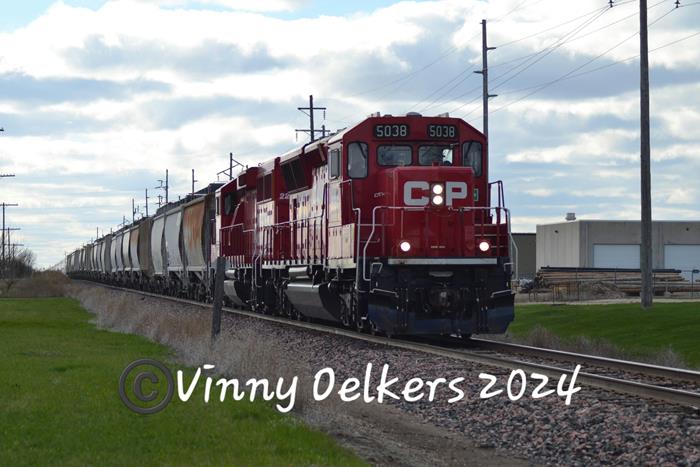
CP 5038 East CPKC K42 local into Spencer Iowa
Vinny Oelkers
The K42 throttles down as they enter Spencer with loaded sand cars from the quarry. The usual duo 2203 and 5038 is in charge of the K42 today
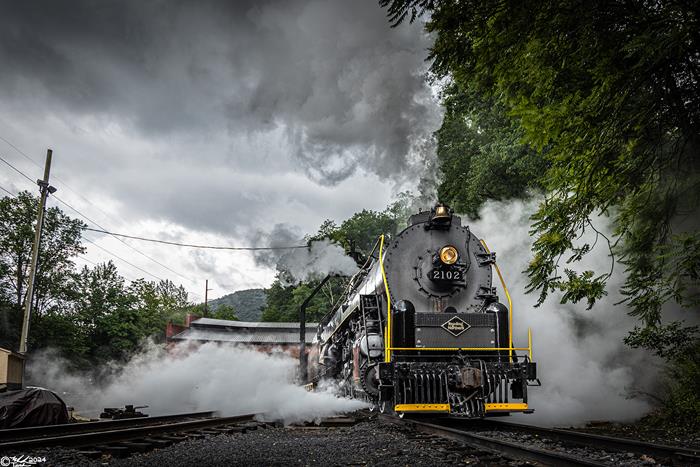
Easing off the Turntable Before the Storm
Mark Turkovich
Reading 2102 eases off of the Port Clinton Turntable under threatening skies prior to a test run.

Preparing to Stop in Port Clinton
Reading 2102 pulls into Port Clinton as it prepares to stop to pick up more passengers for its Iron Horse Ramble excursion.
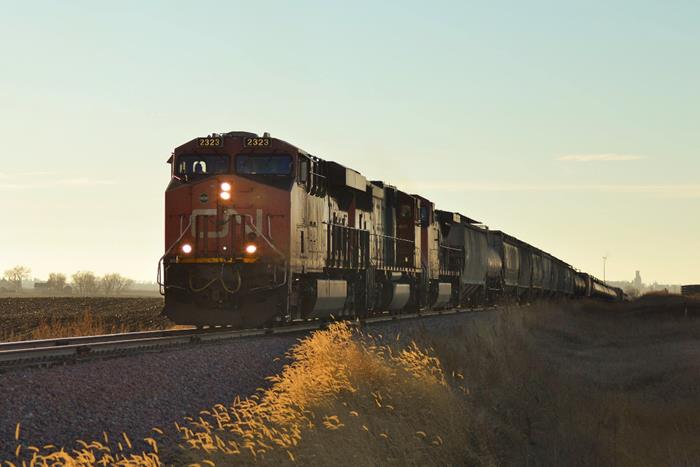
CN 2323 East CN L570-91 at Alden Iowa
CN 2323 leads the CN L57091 down the Waterloo Sub at Alden Iowa

Photo of the Day
By: Mark Turkovich Reading 2102 pulls into Port Clinton as it prepares to stop to pick up more passengers for its Iron Horse Ramble excursion.
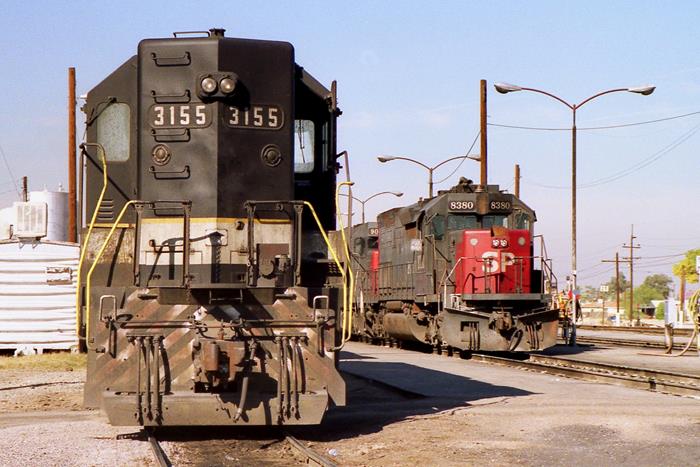
Photo of the Week
By: Rick Doughty SP 8380 East arrives into Tucson with a WCHOM train and parks next to an Ex-Southern SD45 3155 on lease to the SP in March 1989.

Photo of the Month
By: Rick Doughty Rio Grande SD40T-2 5373 is the point unit of the 3 SSW (Cotton Belt) units: 9662 (GP60), 7281 and 7279 (GP40-2) at the Tucson Yard engine facility. Storm clouds are forming to the east as the monsoons continue on this September 1998 afternoon.
Railfan's Choice Awards

By: Brett Pupich

By: Sam Trzynka

By: David Rohdenburg

By: Mark Turkovich
Featured Photographers
Rick doughty.
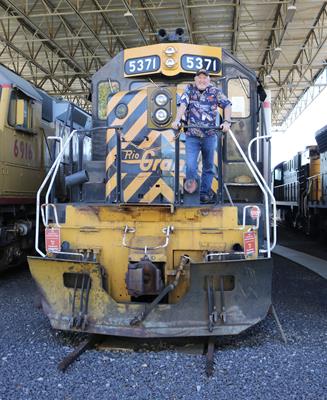
Rick Doughty (62) I have been photographing trains since 1975. My favorite railroad is the Denver & Rio Grande Western. My photos have been featured in CTC Board, Railfan & Railroad, Railroads Illustrated, many railroad book and motive power annuals. I also enjoy severe weather photography and storm chasing. I play drums for my local church. I live in southern Idaho with my wonderful wife Stacey, who enjoys going with me on train watching adventures.
Lifetime Merit: 97830
Sam Trzynka

15 year old railroad photographer from the Twin Cities of Minnesota. Been a railfan for as long as I can remember and first picked up a camera in March 2022.
Lifetime Merit: 31740
Ethan Brodie

I’m a self taught photographer based out of Central Pennsylvania. I live near 2 NS Divisions, The D&H Sunbury Line and the NS Buffalo Line. I also photograph 2 North Shore Branches being the Shamokin Branch and the Bloomsburg Branch. I travel to photograph Steam and occasional regional and shortline operation. When I’m not photographing. I help out at the Harrisburg Lincoln & Lancaster Railroad as a Brakeman/Student Fireman and also help as the Steam Tractor Operator.
Lifetime Merit: 4220

Click the image to view a sample edition from January 2024
Try out the Society as a guest. Most of the meetings and events are open to visitors.
Donations appreciated.
The Railway Observer
All members receive the Society's magazine online, and a print edition (usually 72 pages) is posted to those choosing a "Printed" membership category.
The magazine covers the current railway scene, including extensive coverage of significant and interesting movements, plus an infrastructure and events update. Urban, Irish and International news is included, together with the latest news from Heritage lines.
Society activities, branch meetings, outdoor visits and rail tours are well represented, as are reviews of the latest publications.
A PDF download
Membership rates for new joiners
Printed RO Membership includes posting of the print edition of The Railway Observer
New joiners are benefiting from a "Welcome" discount of £10. Sign up with Direct Debit and save a further £1.
Volunteering
The Society is run entirely by volunteers, at branch level and nationally. If you have some spare time, and maybe some specialist skills, there are many ways you can help
- Image preparation
- Managing events
- Software development
- Administration
- Librarianship
Announcement 20th April 2024
The following announcement was made at the Society’s AGM: Britain’s leading railway society offers a repository for important historical legacies for other railway enthusiast organisations For several months, the Railway…
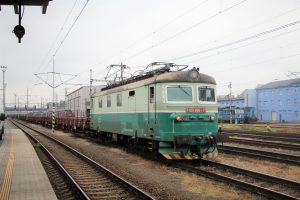
Czech Holiday – Ostrava – June 2023
Eastern Czechia – Click to expand Following the success of the week spent in Praha last year and looking at Czech railways it was decided that this year we would…
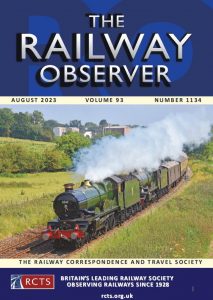
Railway Observer image submission
Updated guidance has been released on how to submit your photographs for possible inclusion in The Railway Observer. The guidelines are available as a PDF to download. Image guidelines
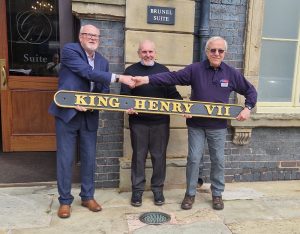
2023 Members’ Day and AGM
Retiring Chairman Callum MacLeod (right) shaking hands with Chairman-elect James Milne (left), both flanking President Rev Canon Brian Arman. All are holding an unusual straight nameplate from GWR 6000 Class…
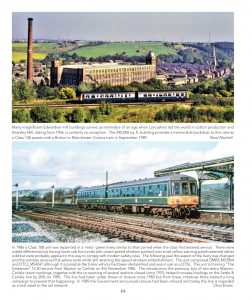
Two new books
This is a comprehensively illustrated history of the first generation DMUs explaining the background behind their introduction, their workings and later modifications. Coverage is by class and the pictures show…
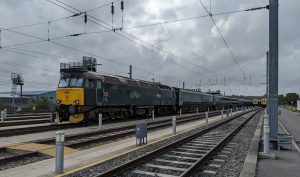
Members’ Weekend 2022 report
This year’s Members’ Weekend (and Officers’ Conference) was based at the Novotel in Reading, 21st-23rd October. We’re pleased to present several visit reports and a selection of photographs taken by…
- Next »
Upcoming events
Virtual events coming up....
There is programme of National events held online, typically monthly. Some branches run them too. Members from any branch may attend and guests are very welcome. For National Meetings, there is no charge for members but donations would be appreciated to help defray the costs. Some branches make a charge because venue hire costs still have to be covered.
A ticket is required. Open the event to find the registration link, and the donations link.
For 2023-24 we have a 500-seat Zoom licence.
How to use Zoom
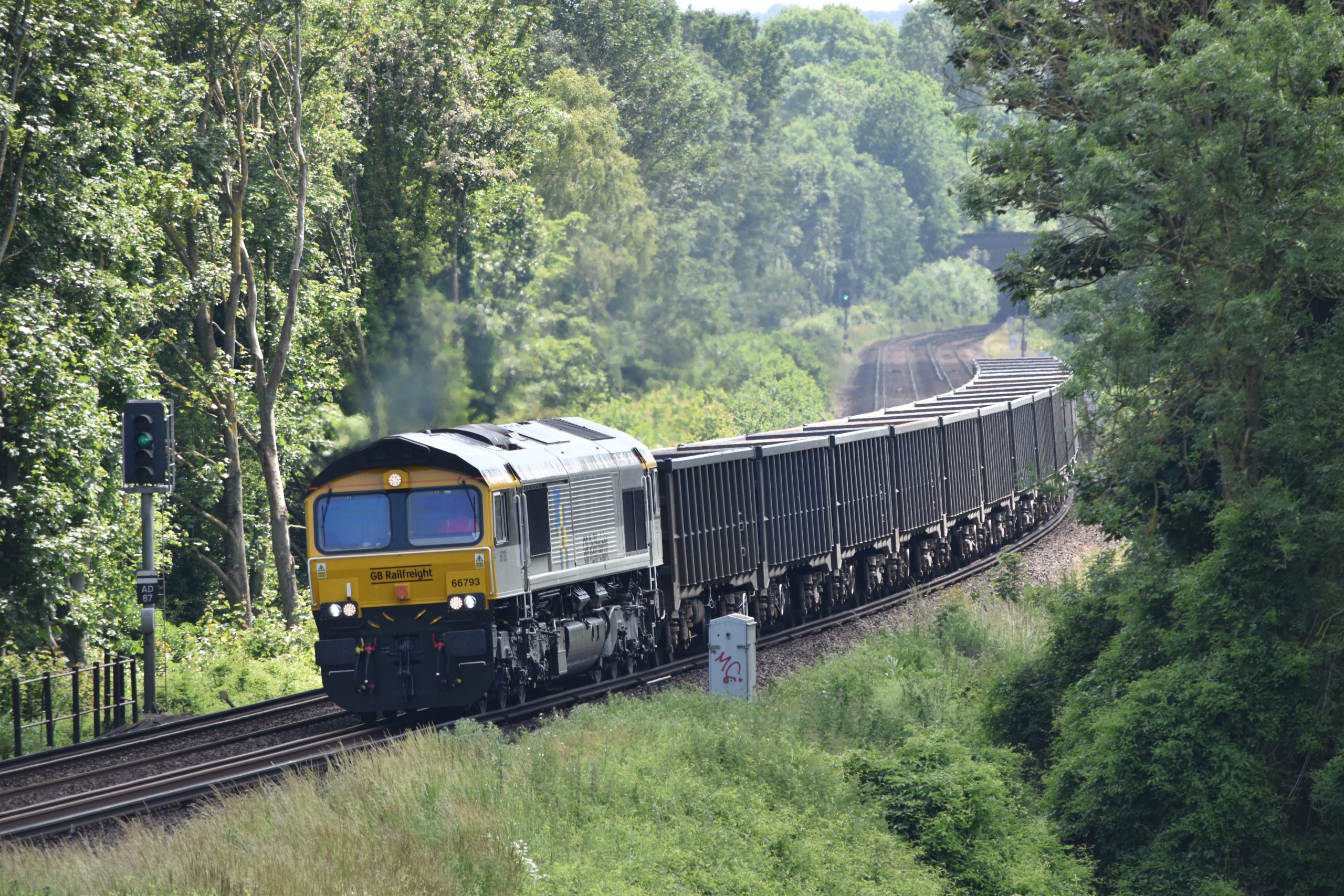
Virtual Events
Czech railways today, to be confirmed.
All National Events
Railway Holidays in the West Country – Devon & Somerset by Stuart Warr
Stuart Warr returns to continue his reminiscences of Railway Holidays in the West Country, this time visiting Devon & Somerset.
- Google Calendar
- Outlook 365
- Outlook Live
- Export .ics file
- Export Outlook .ics file
Please always use https://rcts.org.uk . Users of https:// www .rcts.org.uk cannot advance the month.
A fix will be applied at a quiet time for the website.
Society full calendar
Visit the branch pages to discover upcoming events in your specific area.
Calendar of Events
0 events, 29, 2 events, 30, swindon works and railway sites walkaround tour.
We plan to have a walkaround tour of the various remaining railway sites in Swindon. The tour will last approximately two hours and will be led by a former Swindon…
That Was The Year That Was – 1971
A Hitchin & Welwyn Garden City branch presentation. Presenter: Geoff Plumb Geoff returns with another of his popular TWTYTW series. ‘That Was the Year That Was – 1971’. A very…
35mm gricing home and abroad
Railway Observer editor Mike robinson will show some of his excellent pictures
2 events, 2
Archive and library open day, the vintage trains story – the rise to a train operating company.
Joint meeting with the Institution of Mechanical Engineers Mike Corbett gives a talk on the history and development of Birmingham based ‘Vintage Trains’ to Train Operating Company status, together with…
0 events, 4
0 events, 5, 0 events, 6, ‘those were the years those were’ part 1, by michael reade (with apologies to geoff plumb).
Michael was able, during extensive business travel by rail and road in the U.K., to capture the rail scene in colour from 1960 to the end of mainline steam in…
2 events, 8
South wales railways in the 21st century.
Stuart Warr Stuart is a well known photographer with many images published in the Railway Observer and in his won publication, My Journey.
0 events, 9
0 events, 10, 0 events, 11, 0 events, 12, 2 events, 13, the deltics-worthy successors to the a4s by michael smyth, railways in the cambridge area – part 3, by david scudamore, 6 events, 14, visit to south wales, “midsomer norton – rising from the ashes” by john baxter.
John Baxter is the Somerset & Dorset Railway Heritage Trust's Secretary. He gives a 'warts and all' story of the trials and tribulations of starting a steam railway from scratch…
Memories of a Gorleston Spotter – Part 2
A Hitchin & Welwyn Garden City branch presentation. Presenter: Chris Wright In part two of his talk, Chris will describe spotting in Hitchin 1962 to 1965, and the many trips…
1 event, 15
Southern england in the early 90’s.
Local member Mark Greening give an illustrated presentation of what was happening some 30 years ago!
2 events, 16
To be confirmed.
Unfortunatly, Chris Loder has had to cancel his attendance at our meeting. A new speaker will be announced ASAP. The Transport Select Committee The Transport Committee is charged by the…
“The Big 4 in Colour” – Presenter David Peel
0 events, 17, 0 events, 18, 0 events, 19, 3 events, 20.
Robert has travelled extensively in Central Europe and will present the current scene in the Czech Republic
Pure Genius – Irish Railways Part 1 – Derry – Chris Youett
Part 1 of this journey - 'Pure Genius' - Is a trip around the land of Scholars and Saints taking us initially through Derry.
The Great Central Railway
Physical meeting at Shenfield Parish Hall
1 event, 21
The north staffordshire railway part 3..
Brian Sullivan returns to give us Part III of his North Staffs Railway talk, using historic digitised photos taken by “Tommy” Tomalin. This talk covers the lines that ran to Stone and then…
1 event, 22
With lance king in ulster – the great northern railway lines: 1957-1965.
Leslie McAllister pays a tribute to his late friend Lance King, with a selection of Lance’s colour photography taken in the North of Ireland in the last years of steam…
0 events, 23
0 events, 24, 1 event, 25, 0 events, 26, 0 events, 27, 1 event, 28, railtours and specials (part 2).
A Hitchin & Welwyn Garden City branch presentation. Presenter: John Day. Following on from the May 2023 presentation “Railtours, Specials and Unusual Workings” this second presentation, on the same theme,…
1 event, 30
0 events, 31, 0 events, 1, 0 events, 2.
- There are no events on this day.
Members' area
The latest edition of The Railway Observer , plus back copies from 2012
Details of benefits available to RCTS members
The directory of Society officers
Officers' administration tools
RCTS-branded clothing sales
Membership renewals for 2024 [opens November 2023]
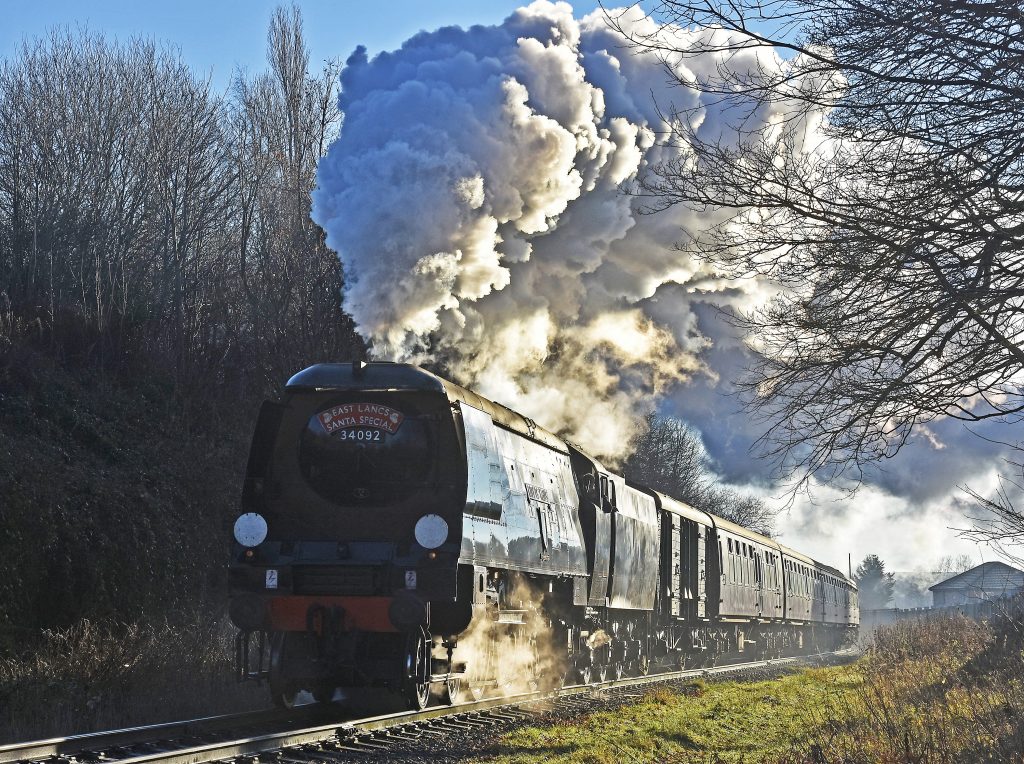
The Society has a national network of 28 branches. Each branch has its own committee and operates its own programme of events. Members are assigned to a home branch but are welcome to take part in other branches' activities.
Guests are always welcome.
The Society has several online information services maintained by our dedicated and knowledgeable members. The various features are regularly updated, and we welcome contributions from members and non-members alike.
Each feature has a editor. Click the images to explore.
Diesel Dilemmas
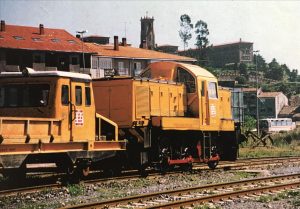
Mysteries and anomalies in the modification and disposal history of British Railways diesel locomotives.
Carriage Conundrums
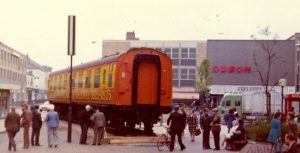
Mysteries and anomalies in the modification and disposal history of British Railways locomotive hauled coaching stock.
Preserved Coaches
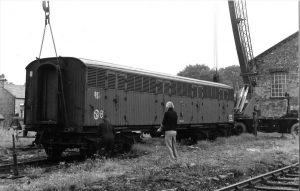
Additions, deletions, movements and modifications to lists of preserved railway rolling stock, regularly updated.
Haulage Highlights
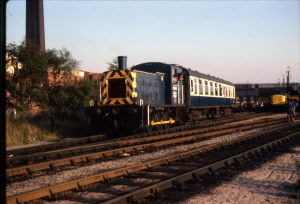
Seasonal services, relief trains, special events and unusual routes, mostly with diesel traction.
Query Corner
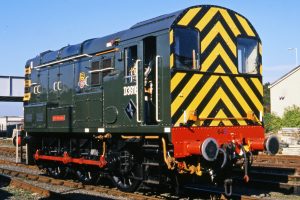
Written queries and answers are published here and in The Railway Observer
“Our” Locos
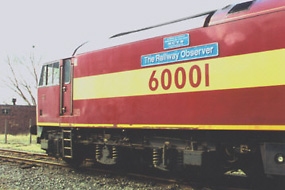
A number of locomotives have proudly carried The Railway Observer nameplate or been associated with the Society. No, we don't own these locomotives, but they are thought of as "ours".
TOPS Reference Data
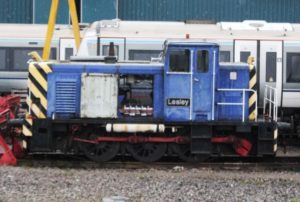
The Society maintains several datasets of TOPS data for Cl.01/5, Cl.89, Cl.97 and Cl.98 Locomotives, Depot Codes and Locomotive Pool Codes, all of which are regularly updated.

NEW - John Knight's Database of Railway Photography
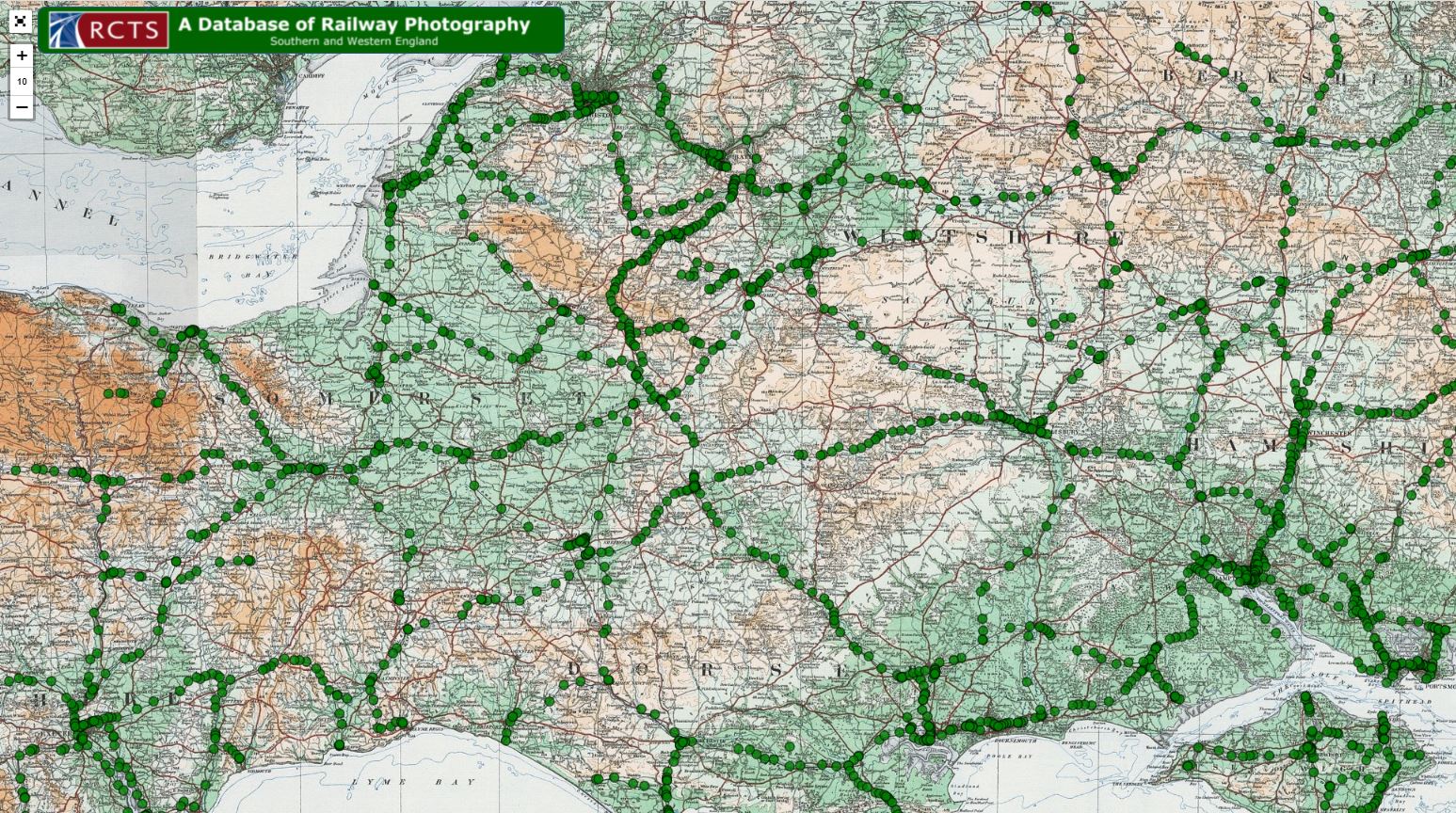
John Knight is a picture researcher. His database of southern and western England records details of 172,000 images published in 6,500 books.
This RCTS Feature initially opens on an interactive map. When you zoom in, each yellow dot represents a camera location. The background can be changed between contemporary maps, satellite images, and historical Ordnance Survey maps - including the detailed 1:10,560 Series. The dot has a reference number for subsequent searches. Please allow a few seconds for the map to load fully.
There are several other tabs alongside the map. One is the User Guide which explains what data is available and how to undertake searches.
Other tabs are lists of books, authors, photographers, railway companies, locomotive classes, and the like. All are searchable.
NB. The database is an index only. For copyright reasons, the photographs are not reproduced, but there are live links to where each book is currently available to purchase. Usually these are second-hand booksellers.
The RCTS Digital Archive
Photographs.
Over 57,000 images are available to purchase as prints or as digital downloads.
The archive also includes many thousands of non-RCTS copyright images. They are available for people to view only online for their personal researches. Users must register (i.e. obtain a Readers' Card) and sign in to gain access.
Publications
A complete collection of the Society's magazine The Railway Observer is available to read online and to purchase as PDF downloads. 1928-2011 is publicly available from the archive; 2012 onwards restricted via the Members' Area.
Many of the Society's publications are available on a similar basis, including definitive series such as Locomotives of the LNER, Locomotives of the GWR, and Locomotives of the Southern . Also locomotive and coaching stock books.
The items listed below are currently available to purchase, some at sale prices. Click on the product images to read full details of each item.
RCTS members are advised to use the Shop pages in the Member's Area to gain access to exclusive products and special discounts.
Shipping is charged on the whole order. There is a flat rate of £4 for UK addresses, or 40% of the order value for non-UK address, calculated as the basket is added to.
Payment can be made by credit/debit card into the Society's Paypal account. You do not need your own Paypal account to use this service.
Second-hand books are sold by the Library. The list of books available is updated regularly, and is not limited to RCTS publications.
RCTS Publications
RCTS has been a renowned publisher of definitive books on locomotives and other railway subjects since 1935. The books are available online and trade enquiries are welcome. Many are now out of print but you can find a bibliography of all books by following More about RCTS Publications below.
Become an author? Click the button to find out more.
New printing technology means that it has become economic to republish some of the back catalogue, a process that is underway. If you cannot wait, copies are available to view at the Society's library at Leatherhead and second-hand copies may be available to purchase from there.
Featured publications
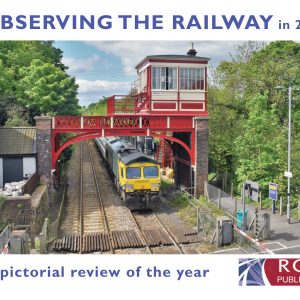
Observing the Railway 2022
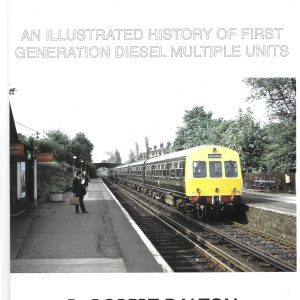
An Illustrated History of First Generation Diesel Multiple Units by Bob Dalton
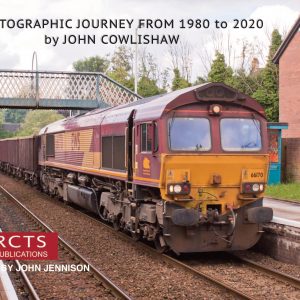
A Photographic Journey from 1980 to 2020
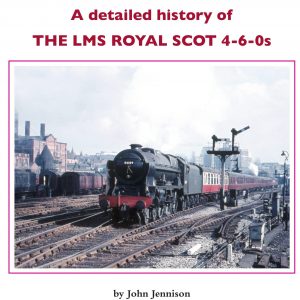
The Royal Scots
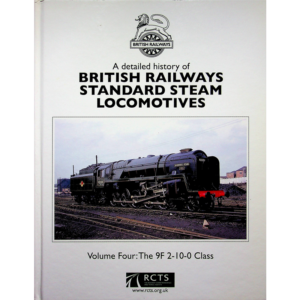
BR Standard Steam Locomotives
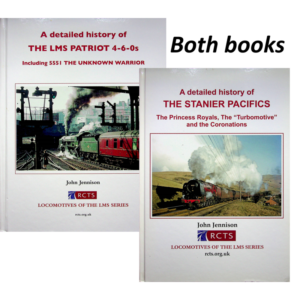
Locomotives of the LMS
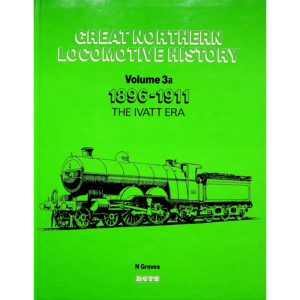
Great Northern Locomotive History
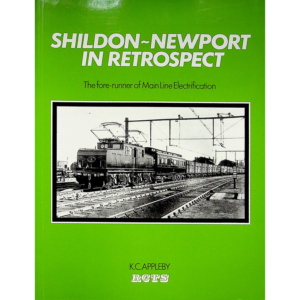
Other Books
Locomotives of the lner.
The definitive series - originally published in 19 parts 1963-1994 - is now available again, in eight volumes.
- Book orders are fulfilled globally by Amazon. The links below point to the Amazon UK shop. In other countries, search Amazon using "Locomotives of the LNER".
- PDF downloads are fulfilled by a separate RCTS online shop at https://archive.rcts.org.uk/rcts-shop/
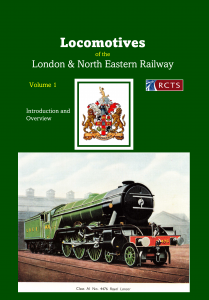
Cover: Hardback
Price: £18
Cover: Softback
Price: £12
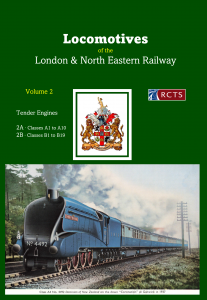
Price: £24
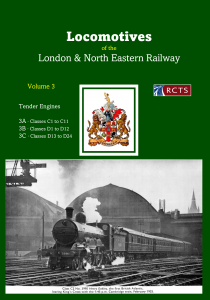
Price: £21
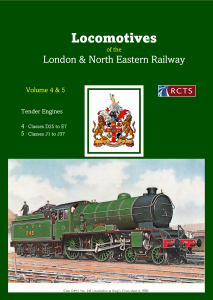
Volume 4&5
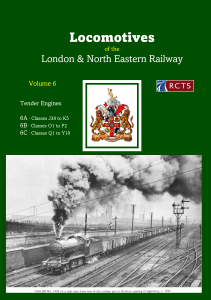
Volume 7&8
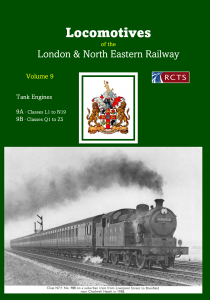
Shooter Files by f.d. walker
Street Photography Tips, Interaction, Travel, Guides
Apr 24 2017
City Street Guides by f.d. walker: A Street Photography Guide to Moscow, Russia

*A series of guides on shooting Street Photography in cities around the world. Find the best spots to shoot, things to capture, street walks, street tips, safety concerns, and more for cities around the world. I have personally researched, explored and shot Street Photography in every city that I create a guide for. So you can be ready to capture the streets as soon as you step outside with your camera!
At over 12 million people, Moscow is the largest city in Russia and second largest in Europe by population ( Istanbul is #1). An urban, cosmopolitan metropolis with more than enough glitz and glam to cater to the elite, but without losing its fair share of Soviet era roughness around the edges. It can be fast paced, brash, busy, and trendy like other big cities, but it has its blend of West meets Russia atmosphere and beauty that provides plenty of unique interest. The Red Square is as famous as it gets, but there’s so much more to this city, including the most beautiful subway system you’ve ever seen. It would take years to capture all of Moscow, but that means you have an endless amount of areas to discover.

So here’s a Street Photography guide so you can be ready to capture all that Moscow has to offer before you even arrive!
- Patriarch’s Pond
- Old Arbat Street
- Maroseyka Street
- Tverskoy Boulevard
Top 5 Street Spots:
1. red square.
The Red Square is the most famous square in not just Russia, but all of Eastern Europe. The name actually doesn’t come from the color of the bricks or communism, but from the name in Russian, Krásnaya, once meaning “beautiful” before its meaning changed to “red.” This large plaza is what you see on the cover of guide books and magazines for Moscow, with St. Basil’s Cathedral being the center piece next to Lenin’s Mausoleum surrounded by the Kremlin Wall. Of course, the Red Square attracts hordes of tourist due to the main attractions, but all that activity around an interesting atmosphere does provide street photo opportunities. It’s also the central square connecting to the city’s major streets, providing a good starting point to explore outward.

You’ll also find the popular pedestrian only Nikolskaya Street connecting the Red Square to Lubyanka Square. This line of expensive shops includes plenty of activity, while also leading you to another popular square. Filled with history rivaling any city, the Red Square and surrounding areas are the heart and soul of Russia.

2. Patriarch’s Ponds
Patriarch’s Ponds is one of the most exclusive neighborhoods in Moscow. Despite the name being plural, there’s only one large pond, but it’s worth a visit with your camera. It’s a popular spot for locals and expats to come relax or take a stroll around the pond. You get an interesting mix of young and old too, from young love to “babushkas” feeding pigeons. It’s a very peaceful park atmosphere in one of the nicer areas within the city center, while bringing enough activity for street photography.

The pond is shallow and in the winter becomes a popular spot for ice-skating too. The area is also well-known for the location in the famous Russian novel, The Master and Margarita.
3. Old Arbat (Stary Arbat)
Old Arbat is the most famous pedestrian street in Moscow, and dating back to the 15th century, also one of its oldest. Originally, it was an area of trade, but soon became the most prestigious residential area in Moscow. During the 18th century, Arbat started attracting the city’s scholars and artists, including Alexander Pushkin. Cafes lined the streets and impressive homes filled the neighborhood. Since then, New Arbat street was created as a highway in the area, while Old Arbat was paved for a 1km pedestrian only walkway.

Due to the historic buildings, famous artists that lived here, and the bohemian atmosphere, Old Arbat has become a big attraction for tourists today. Now, there’s a mix of cafes, restaurants, souvenir shops, street performers, street merchants and other attractions for visitors, and some locals, to come enjoy. It can get really busy here and there’s usually something interesting going on so it’s a good street to come walk with your camera for guaranteed life.
4. Gorky Park
One of the most famous places in Moscow is Gorky Park. The official name is Maxim Gorky’s Central Park of Culture & Leisure, which gives you an idea of what goes on here. When built, it was the first of its kind in the Soviet Union. Divided into two parts, it stretches along Moscow River. One end contains fair rides, foods stands, tennis courts, a sports club, a lake for boat rides, and more. This end brings more active life due to its number of attractions, while the other end is more relaxed, where you’ll find gardens, trees, older buildings, and an outdoor amphitheater.

Gorky Park attracts mostly locals so it’s a good spot to capture the non-tourist side of Moscow life. Muscovites come here to escape the city and unwind in a picturesque setting. The park remains alive outside of the warmer months too, especially when the lake turns into the city’s largest outdoor skating rink. I’d recommend taking the metro out here to spend at least half a day exploring the massive park’s life with your camera.
5. Maroseyka Street
Maroseyka Street is a popular area not too far from the Red Square. The long, winding street turns into Pokrovka and is lined with restaurants, cafes, bars and places to stay. It’s actually where I like to stay when I’m in Moscow due to its location and solid street photography opportunities itself. You have Kitay-gorod station near and if you keep walking southwest, you’ll get to the Red Square. But if you walk northwest, as it changes to Pokrovka, you can find a long street of activity for photography with its own interesting atmosphere.

6. Tverskoy Boulevard
Tverskoy Boulevard is the oldest and longest boulevard in Moscow, beginning at the end of Nikitsky Boulevard, and finishing at Pushkin Square, a spot to come for activity itself. The boulevard is made up of two avenues, with pedestrian walkways in-between. You’ll find grass, shrubbery, trees, benches and more walking it’s almost kilometer length. Many people come here to enjoy some relaxation, walk their dog, or just to use it to walk wherever they’re going. Its center location also provides a nice place to walk with your camera near plenty of other spots you’ll want to check out anyway.
Sample Street Walk:
For a full day of Street Photography, covering some of the best spots, you can follow this sample street walk for Moscow:
- Start your morning walking around the Red Square (1), while exploring the surrounding area, including Nikolskaya Street
- Then walk northwest to Patriarch’s Ponds (2) and slowly walk the pond and surrounding area with your camera
- Next, walk east to the Pushkin Monument and stroll down Tverskoy Boulevard (6)
- Once Tverskoy Boulevard (6) ends, it will turn into Nikitsky Boulevard. Follow this down until you get to the start of Old Arbat Street (3), across from Arbatskaya station
- After you’re done walking down Old Arbat Street (3) for more street photography, spend some time checking out Moscow’s beautiful metro stations
- To finish off the day with more street photography, get off the metro near Red Square (1) again, Maroseyka Street (5) or wherever you’re staying for the night.

3 Things I’ll Remember about Shooting in Moscow:
1. museum metro.
The Moscow metro system was the first underground railway system in the Soviet Union and today includes 203 stations across 340km of routes. The elaborate system has some of the deepest stations in the world too, with escalators that seem to go on forever. None of this is what makes it so special, though. Many of its stations feel like stepping inside a museum, making it without a doubt the most interesting and beautiful metro system I’ve been in.

When built, Stalin wanted to make the metro stations “palaces for the people” with marble, chandeliers, and grand architecture. The best part is the variety of architecture and styles used, making many of the stations a completely different experience visually. You could easily spend a whole day traveling the stations and there are even tours available for people who wish to do just that. My advice, though, would be just to buy a ticket and hop on and off at different stations, while exploring different lines. The museum-like surrounding mixed with the crowds of characters can make for a great photography experience.

Since there are so many stations, here are some of my favorites to check out:
- Novoslobodskaya
- Mayakovskaya
- Elektrozavodskaya
- Komsomolskaya
- Ploschad Revolyutsii
- Dostoyevskaya
- Prospekt Mira

2. Moscow is Big
It’s no secret that Moscow is a big city, but it can feel even bigger with how spread out much of it is. This is especially true if you compare it to cities outside of Asia. If I compared it to cities in Europe, I’d probably say only Istanbul would warrant more time to really discover the depths of this city. Most only explore around the Red Square and surrounding area, but that is such a small part of the city. Although, that central area does give you plenty to see on its own.

Fortunately, I had a good friend living in the city to show me around, but it opened up my eyes even more to how much there is to discover in Moscow. It’s a big city with a variety of atmosphere that can take you from “east” to “west” and trendy to rugged depending on where you go. I’d imagine you’d have to live here a while to really know the city.
3. Cosmopolitan Mix of East meets West
Modern skyscrapers mixed with amazing architecture, a world-class metro system with museum-like beauty, trendy fashion and chic clubs, Moscow is a rich mix of Russian culture and history in a more western cosmopolitan package. There is a push to keep the Russian culture, while also pushing forward with a modern metropolis the whole world will envy. This comes with an impressive skyline, that continues to grow, and endless modernities, but with soviet nostalgia and atmosphere mixed in for good measure.

Mixed in with this grand western cosmopolitan atmosphere, is a strong national pride in Russia. This includes their famous leader, Vladimir Putin. Maybe no other place will you see a country’s leader more often. All over, from the pricey tourist shops to the underground walkway stalls, you’ll find goods with Putin’s likeness covering them. From t-shirts to magnets to Matryoshka dolls. There’s a strong national pride that can be seen around the city, which also extends to their leader. Moscow is many things. It’s East meets West, modernizations meets Soviet era, and a whole lot more.
What To Do For a Street Photography Break?:
Eat at a stolovaya.
Stolovayas are Russian cafeterias that became popular in the Soviet days. You grab a tray and walk down the line of freshly prepared local dishes, and select whatever you want from the chefs. They’re usually inexpensive and a much better value than restaurants, while giving you the opportunity to try from a wide selection of everyday Russian food. They’re also very tasty. I always include some borsch on my tray and go from there. The places themselves are all over Moscow and usually come with Soviet-era aesthetics to complete the experience.

Street Safety Score: 7
*As always, no place is completely safe! So when I talk about safety, I’m speaking in general comparison to other places. Always take precaution, be smart, observe your surroundings and trust your instincts anywhere you go!
Being the 2nd largest city in Europe with over 12 million people, you’re going to have your dangerous areas, but for the most part, it feels safe walking around. Russia is statistically higher in crime compared to most of Europe, but this generally doesn’t apply to tourists and visitors. Around the Red Square and surrounding city center, you should feel completely safe walking around. Pick pocketing can happen, but no more than other touristic places. I always explore Moscow freely without coming across too much to worry about. It’s a spread out city, though, so of course it matters where you are. Just use basic street smarts, know where you are and Moscow shouldn’t give you a problem.

People’s Reaction Score: 7
Moscow is fast paced, big city life, which usually means people aren’t too concerned with you, or your camera. I don’t find people notice or pay much attention to me when I’m out taking photos in Moscow. For the most part, people just go about their day. You shouldn’t get too many looks or concern. But it can depend on the area you are in. The more you stick out, the more you might get noticed with suspicions. I’ve never had any problems in Moscow, or Russia, but just be careful who you’re taking a photo of if you get out of the city center. Other than that, it’s about average for reactions.

Street Tips:
Learn the alphabet .
Much of Moscow, including the metro system, doesn’t use english. The Russian alphabet uses letters from the Cyrillic script, which if you aren’t familiar with it and don’t know the sounds, can be hard to decipher the words. This is most important for street names and metro stops when trying to get around. It can save confusion and make it easier getting around if you learn the basic alphabet. At the very least then, you can sound out the words to see which are similar in the english conversion, which can help matching them to maps. When out shooting street photography, getting around is as important as anything. So save yourself some time and frustration by learning the Russian Alphabet.

Use the metro
While Saint-Petersburg feels very walkable for a city its size, Moscow can feel very spread out, even for its bigger size. Outside of the Red Square area, you can have plenty of walking before getting anywhere very interesting, so you’ll need to take the metro a lot if you really want to explore the city. Maps are deceiving here too, it will always be further than it looks.

Another reason it’s less walkable than Saint-Petersburg is its completely different set-up. Moscow’s streets are mostly contstructed in rings with narrow, winding streets in-between. This is common with medieval city cities that used to be confined by walls, but you usually don’t have it in a city this massive. Saint-Petersburg has a more grid-like pattern that also uses the canals to help you know your way around. When it comes to navigating on foot in Moscow, it can be more difficult, so bring a map and take the metro when needed. It’s why Moscow’s metro carries more passengers per day than the London and Paris subways combined.
Explore other areas if you have time
Moscow is really big. While most people stay around the Red Square within the Boulevard Ring, there’s so much more to the city. I covered some other spots outside of this circle, but if you really want to see the city, you’ll need time. If you do have time, some other areas I’d check out first are Zamoskvarechye, along some of the south and western Moscow.

Inspiration:
For some more inspiration, you can look through the Street Photography of Moscow photographer Artem Zhitenev and check out 33 of my photos taken in Moscow .
Conclusion:
Moscow’s name brings a certain mystique, but once you’re there it might bring a different atmosphere than you expect. It’s big and sprawling, but beautiful in many ways. It can feel like a European capital on a grand scale, but you can definitely find its Russian side in there.

The urban sprawl of Moscow can be intimidating, but give it enough time and you’ll be rewarded with plenty to discover. All with the world’s best metro system to take you around.
I hope this guide can help you start to experience some of what Moscow contains. So grab your camera and capture all that Moscow has to offer for Street Photography!
If you still have any questions about shooting in Moscow, feel free to comment below or email me!
(I want to make these guides as valuable as possible for all of you so add any ideas on improvements, including addition requests, in the comment section!)
Click Here For More City Street Guides!
(A New Guide Posted Every Other Wednesday)

Comment Here! Cancel reply
For patreon exclusive educational content:.

Limited Edition Postcard Prints!
Street Photography Workshops
Donations Always Appreciated
I'll always keep Shooter Files free for everyone, but any donations would be greatly appreciated and help me keep it going. Many thanks to everyone following along!
Cheers! -f.d. walker
Search the Files

For Exclusive Patron Content:
- 12 Instagram Photographers From Moscow...
12 Instagram Photographers From Moscow You Should Follow

How many big cities can be described as picturesque? Regardless of the actual count, Moscow is definitely one of them. The labyrinth-like streets in the old town, the scenic parks, the futuristic glass-and-concrete constructions, the world-famous metro and the people in it – Moscow is not short of things to photograph. These Instagram photographers have found the hidden gems scattered around the city and make them shine for the whole world to see. If you want to discover the beauty of Moscow, here are 12 Instagram photographers you should follow.
@sashalevin.
Sasha Levin is a Moscow-based professional photographer. His Instagram feed is full of breathtaking architectural views of Moscow, intertwined with occasional pictures from his travels or assignments. If you want to see the city of Moscow in all its glory follow @sashalevin
https://www.instagram.com/p/BdvRUqDjlXv/?taken-by=sashalevin
https://www.instagram.com/p/7IzQDfmGyW/?taken-by=mscstrts
@ohmymoscow
@ohmymoscow is a blog run by a local, Katya Trofimova. Her Instagram feed is full of warm, cosy, sometimes humorous photographs of Moscow as only the locals know it, as well as occasional insightful travel snippets. Katya is the person to follow if you want to prove to yourself that Moscow can be warm even in the middle of winter.
https://www.instagram.com/p/BeL3979gaqB/?taken-by=ohmymoscow
If you’re a fan of street photography, unusual perspectives and portraits of strangers, @mcmlxi is for you. The insightful and interesting photographs tell stories with aspects of the city in the background.
https://www.instagram.com/p/BXm7E1PD3gO/?taken-by=mcmlxi
@dimikangaroo
@dimikangaroo is an undeniable master of unusual perspectives and iPhone photography. His pictures, taken on the phone, will prove to you that you don’t really know how to use your iPhone camera and that you don’t really know Moscow at all.
https://www.instagram.com/p/BTo1zrFAh3x/?taken-by=dimikangaroo
@amazing_way
If you want to see the soft face of Moscow, @amazing_way is the account to get in your feed. Svetlana, the photographer behind it, skilfully captures the charm of well-known places in the Russian capital. She intertwines the photographs of Moscow with occasional snaps from her travels and some well-composed coffee shop still shots.
https://www.instagram.com/p/Bd8JrP3lI9N/?taken-by=amazing_way
@starodubov_
If, on the other hand, you’re after coarse images of everyday, mundane Moscow, and you’re a fan of photographic storytelling, Gleb Khailov, the photographer behind @starodubov_ is one to follow. He focuses on details most people don’t notice, which tell an untold story of Moscow. His another speciality are portraits of native Muscovites.
https://www.instagram.com/p/BcKP5EaF9sH/?taken-by=starodubov_
Pavel Ogrodnikov takes pictures of architectural gems of Moscow. His aerial photographs paint the image of a majestic city, designed to impress and overwhelm both the native inhabitants and occasional visitors. @Pavelog will show you Moscow as you most certainly don’t know it.
https://www.instagram.com/p/Bc-CCwBHIbO/?taken-by=pavelog
@vlad_senkovich
Vlad Senkovich likes two things: people and motion. His Instagram feed is full of beautiful portraits of his friends and strangers, as well as the beautiful buildings of Moscow surrounded by beams of light from the moving vehicles. @vlad_senkovich shows you a Moscow you may not have seen before.
https://www.instagram.com/p/Bd2HnA_HF_K/?taken-by=vlad_senkovich
@trappershot
@trappershot knows how to construct a troublesome image. The contrast, the use of light and the composition, as well as his eye for detail, all go towards creating photographs that will leave you feeling positively uneasy.
https://www.instagram.com/p/Bctn6BrH5mG/?taken-by=trappershot
@moscow_love_metro
Moscow is famous for its metro full of long escalators and endless corridors, and it seems to be where romance flourishes. @moscow_love_metro consists of photographs of people in love, captured on their daily commute. Is there anything more heart-warming to scroll through?
https://www.instagram.com/p/BYmOg3DBZXr/?taken-by=moscow_love_metro
@moscowmetroexplorer
@moscowmetroexplorer is yet another account dedicated to the beauty of the Moscow metro, as well as people-watching. If you want to feel as if you are in Moscow on your morning commute, follow Tatiana’s excellent account.
https://www.instagram.com/p/BSCBs-NDHxv/?taken-by=moscowmetroexplorer
Since you are here, we would like to share our vision for the future of travel - and the direction Culture Trip is moving in.
Culture Trip launched in 2011 with a simple yet passionate mission: to inspire people to go beyond their boundaries and experience what makes a place, its people and its culture special and meaningful — and this is still in our DNA today. We are proud that, for more than a decade, millions like you have trusted our award-winning recommendations by people who deeply understand what makes certain places and communities so special.
Increasingly we believe the world needs more meaningful, real-life connections between curious travellers keen to explore the world in a more responsible way. That is why we have intensively curated a collection of premium small-group trips as an invitation to meet and connect with new, like-minded people for once-in-a-lifetime experiences in three categories: Culture Trips, Rail Trips and Private Trips. Our Trips are suitable for both solo travelers, couples and friends who want to explore the world together.
Culture Trips are deeply immersive 5 to 16 days itineraries, that combine authentic local experiences, exciting activities and 4-5* accommodation to look forward to at the end of each day. Our Rail Trips are our most planet-friendly itineraries that invite you to take the scenic route, relax whilst getting under the skin of a destination. Our Private Trips are fully tailored itineraries, curated by our Travel Experts specifically for you, your friends or your family.
We know that many of you worry about the environmental impact of travel and are looking for ways of expanding horizons in ways that do minimal harm - and may even bring benefits. We are committed to go as far as possible in curating our trips with care for the planet. That is why all of our trips are flightless in destination, fully carbon offset - and we have ambitious plans to be net zero in the very near future.

Guides & Tips
A 48 hour guide to astrakhan, russia.

See & Do
Russia's most remote holiday destinations.

A Soviet Pilot Went Missing in Afghanistan and Was Found 30 Years Later

The Mystery Behind Russia's Buddhist "Miracle"

The Soviet Union’s Best Heart-Throbs and Pinups

Restaurants
The best halal restaurants in kaliningrad.

Zhenotdel: The Soviet Union's Feminist Movement

Unusual Facts About the Soviet Union

Food & Drink
The best halal restaurants in kazan.

Incredible Photos From the Longest Bike Race in the World

A Guide to Cautionary Russian Proverbs and What They Mean

Russian Last Names and Their Meanings
Culture trip spring sale, save up to $1,100 on our unique small-group trips limited spots..

- Post ID: 1784241
- Sponsored? No
- View Payload
You are using an outdated browser. Please upgrade your browser to improve your experience.
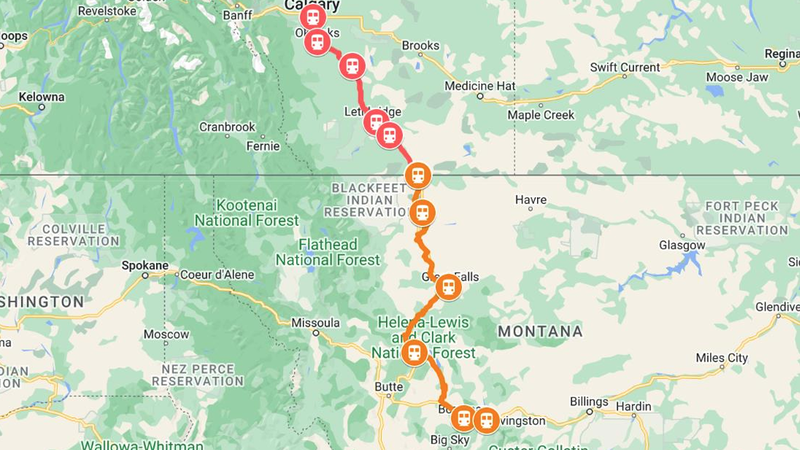
Alberta-Montana passenger rail service proposed
A non-profit in Alberta looks to build an international train route, connecting the prairie province and Montana.
Integrated Travel Research and Development has released its Alberta-Montana Passenger Rail Feasibility Report.
It proposed creating an 888.9 kilometre route between Calgary and Livingston, Montana.
It could have 10 stops and pass through 57 communities along the way. The Alberta destinations include Calgary, Okotoks, Vulcan, Lethbridge, and Stirling.
After entering Lethbridge on the rail line that runs parallel to Highway 3, it would allow passengers to get on and off next to the Lethbridge and District Exhibition.
Upon crossing the border by Coutts into the U.S., those on board would have the option of finishing their journey in the Montana communities of Shelby, Great Falls, Helena, Bozeman, or Livingston.
Integrated Travel cites a few reasons why it believes something like this would be beneficial.
Economic Benefits
The group says the project holds “significant promise” for stimulating economic growth by fostering business development and creating jobs.
Much of that growth would come from increased tourism spending, especially in smaller communities along the route.
“Passenger rail connectivity has been proven to increase tourist arrivals to destinations along the railway, which suggests that the stations between Calgary and Livingston would enhance tourism in smaller communities, providing travelers with opportunities to explore lesser-known attractions, support local businesses, and engage with the unique culture and heritage of each town,” reads a portion of the report from Integrated Travel.
They say there are currently no direct flights between southern Alberta and Bozeman or Great Falls, meaning those who do not have their own vehicles have no easy way of traveling and taking advantage of each area’s tourism opportunities.
Travel Alberta recently reported that international tourism had fully rebounded from pre-pandemic levels in 2023.
READ MORE: Alberta tourism rebounds to pre-pandemic levels
Improving Safety
The report claims that rail is one of the safest methods of transportation.
The fatality rate for car travel is reportedly almost 17 times that of trains.
“When comparing railway travel to road travel, railway tracks create a controlled environment that minimizes the risk of collisions with other vehicles and pedestrians, while cars are subject to human error and variable road conditions,” says Integrated Travel. “This is especially true for Alberta and Montana, which are areas that experience heavy snowfall in the winter.
Reducing Emissions
The study states that the transportation sector accounts for roughly 22 per cent of global greenhouse gas emissions.
According to the report, “A life cycle analysis of both railways and highways shows that railway infrastructure and operation has a lower overall impact than highways, and requires less ongoing maintenance.”
Comparing the carbon emissions for rail and vehicle, anyone looking to travel between Calgary and Livingston would reduce their CO2 output by as much as 75 per cent by taking a train.
Rail travel would also cause a reduction of micro-contaminants from tires, oils, and other toxic substances.
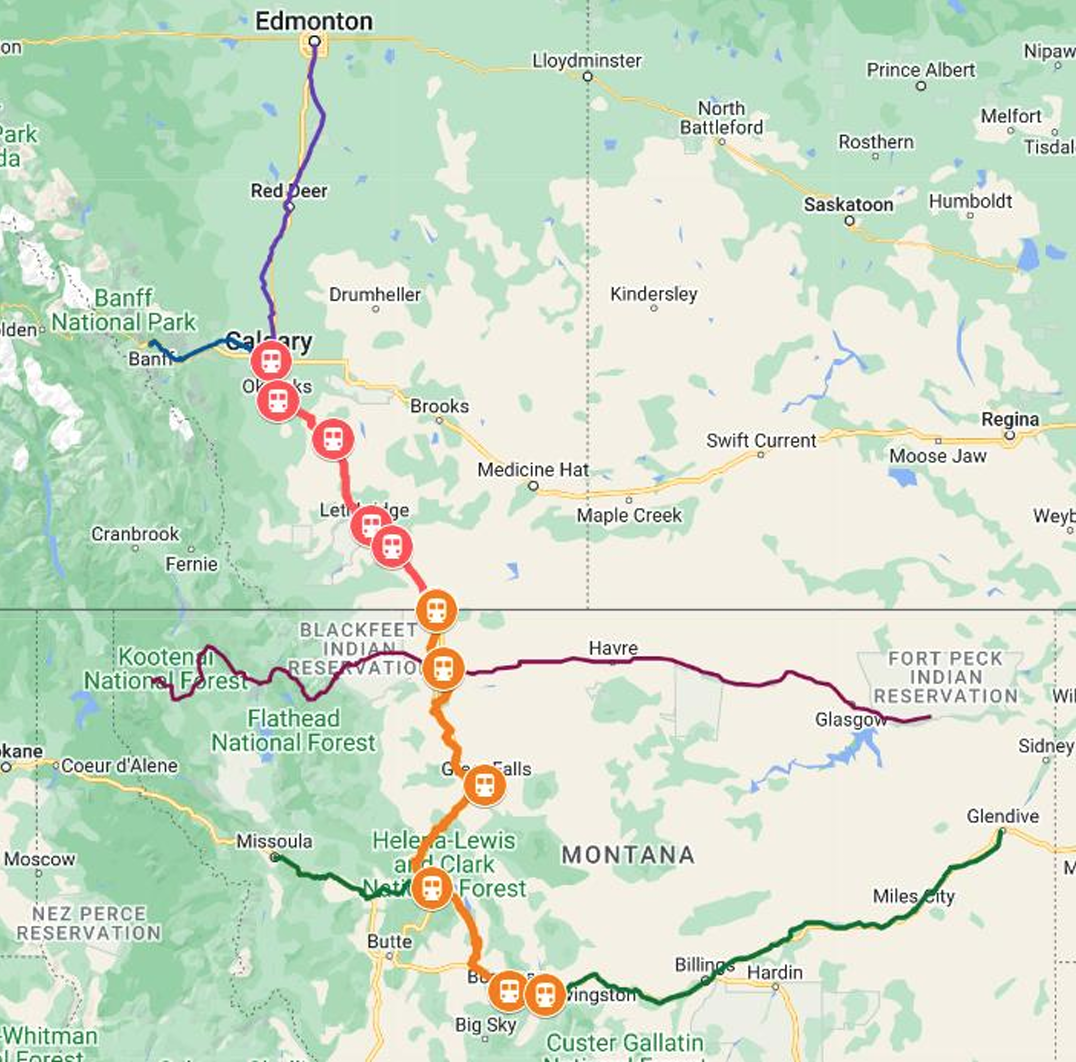
At the time of publication, Integrated Travel has not reached any agreements to proceed with the proposed rail route and does not have a cost estimate for the project.
They say they are open to all types of funding models, whether it comes from various governments, public-private partnerships, or is entirely privately funded.
Use this link to access the full Alberta-Montana Passenger Rail Feasibility Report .
For local news delivered daily to your email inbox, subscribe for free to the rdnewsNOW newsletter by visiting rdnewsNOW.com . You can also download the rdnewsNOW mobile app on Google Play and the Apple App Store for all the latest updates on this and other stories.
What's Trending

- Member Login
- Red Deer and Area
- Entertainment
- Community News
- Events Calendar
- Local Sports
- RDP Athletics
- Everything Lifestyle
- Business Profile
- Featured Content
- Ripley's Weird
- Your Life Unlimited
- Real Estate
- Contest Rules
- Advertise With Us
- Submission Guidelines
- Terms of Service
- Privacy Policy
- Accessibility

Love Exploring
This Is The Most Scenic Train Journey In Your State
Posted: December 28, 2023 | Last updated: December 28, 2023
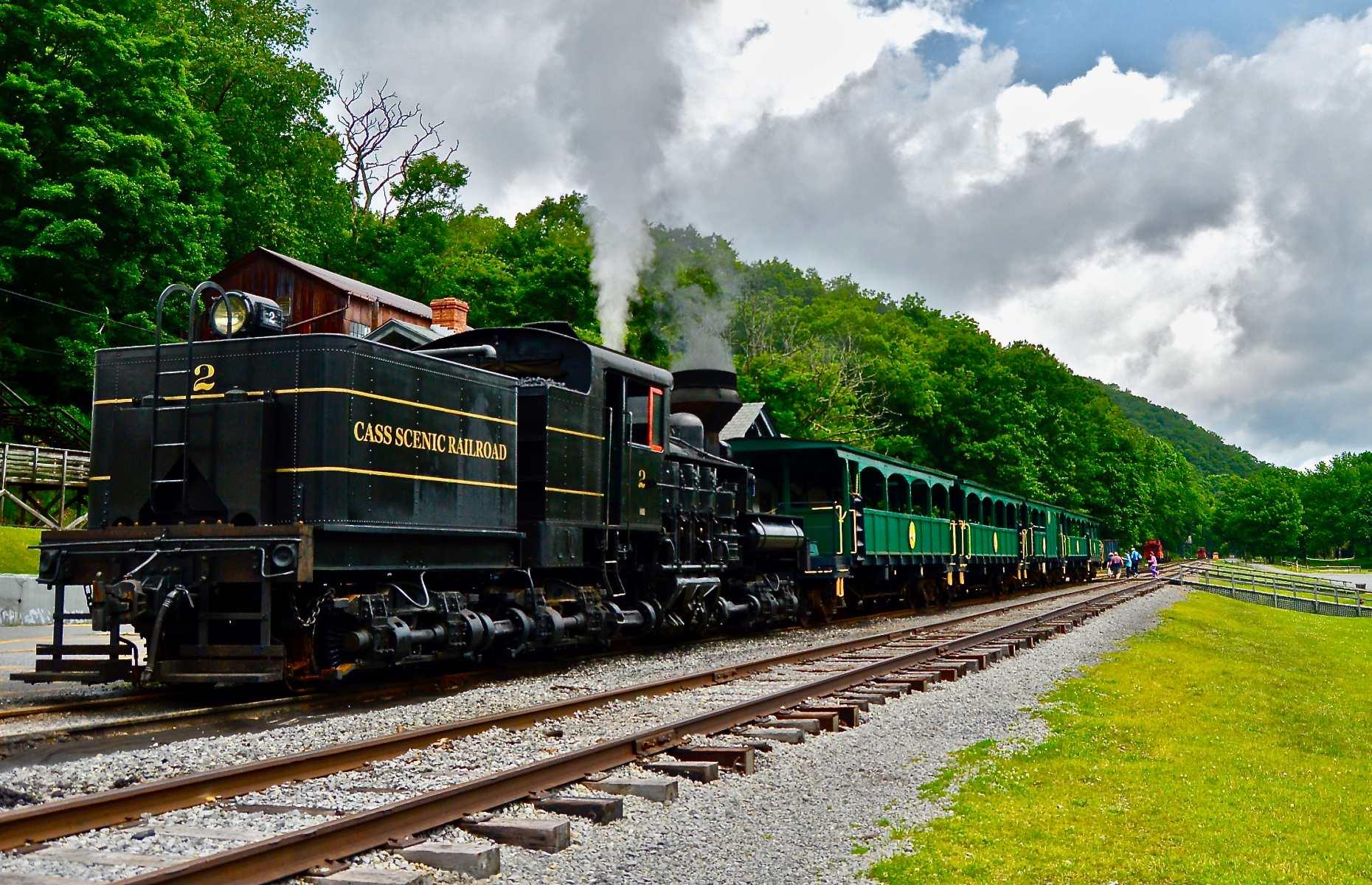
The right track
America grew rich with the foundation of the railroad, and today its railways are still among the best ways for travelers to traverse the home of the brave. From heritage lines pulled by vintage steam engines to highlights of the expansive Amtrak network, we’ve rounded up the most beautiful train journey in each US state.
Though some (we see you Wyoming) are faring well without scenic rail rides, we’ve found something that rail buffs will love in every part of the the country.
Click or scroll through this gallery to discover your state’s most scenic train journey…
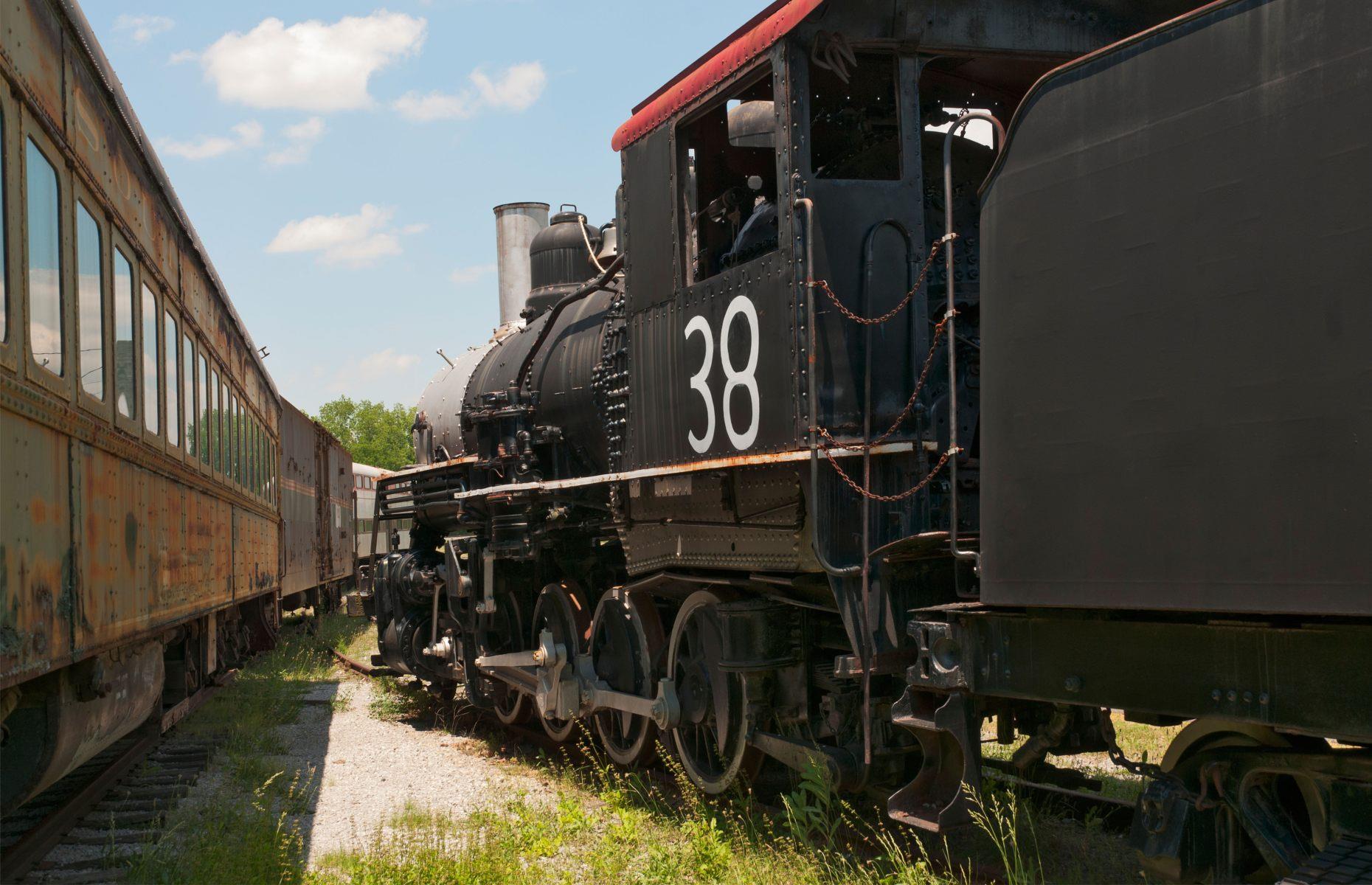
Alabama: Calera and Shelby Railroad
Stationed in Calera, just south of Birmingham in central Alabama, the Heart of Dixie Railroad Museum hosts rail excursions on a first-generation diesel-electric locomotive. Riding the Calera and Shelby Railroad, which operates on a former slip of the 1891 L&N Alabama Railroad, you’ll pass through the atmospheric forests of Shelby County on a 75-minute journey.
Seats are available in an enclosed coach or an open-air carriage – if you really want to immerse yourself in the scenery. Trips run twice on Saturdays between March and September.

Alaska: Denali Star
The Denali Star is the flagship service of the Alaskan Railroad. Typically operating between May and September, the journey swings from Anchorage – a city that owes its very existence to the Alaskan Railroad – to Fairbanks through the dramatic heart of Denali National Park. In its entirety the expedition lasts an epic 12 hours, traveling through Southcentral and Interior Alaska with views of North America’s tallest mountain, Denali, on a clear day.
The train’s Adventure Class offers large picture windows, while GoldStar Service gets you glass-domed ceilings and access to an outdoor viewing deck.
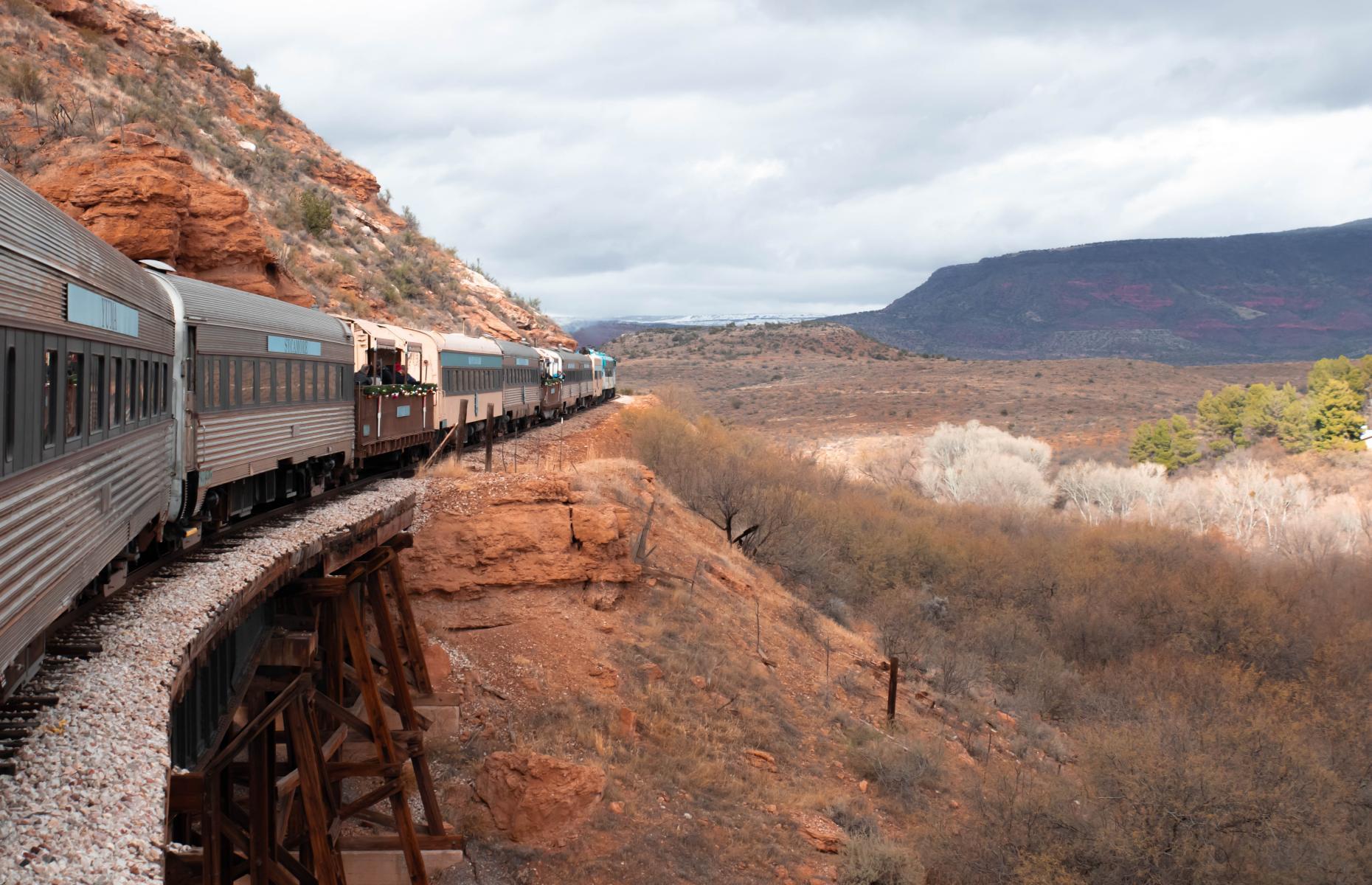
Arizona: Verde Canyon Railroad
There’s more than one spectacular canyon in Arizona, and you can ride a vintage train right down the spine of this one. Verde Canyon Railroad was built in 1912 to serve the area’s copper mines and has been transporting sightseers year-round since 1990.
Chasing the meanders of the Verde River, this four-hour round-trip takes passengers past Mars-red rock amphitheaters, historic ranch towns, kiwi-colored cacti, and the ancient ruins of Native American civilizations. Watch for bald eagles overhead as you chug along through the wilderness.
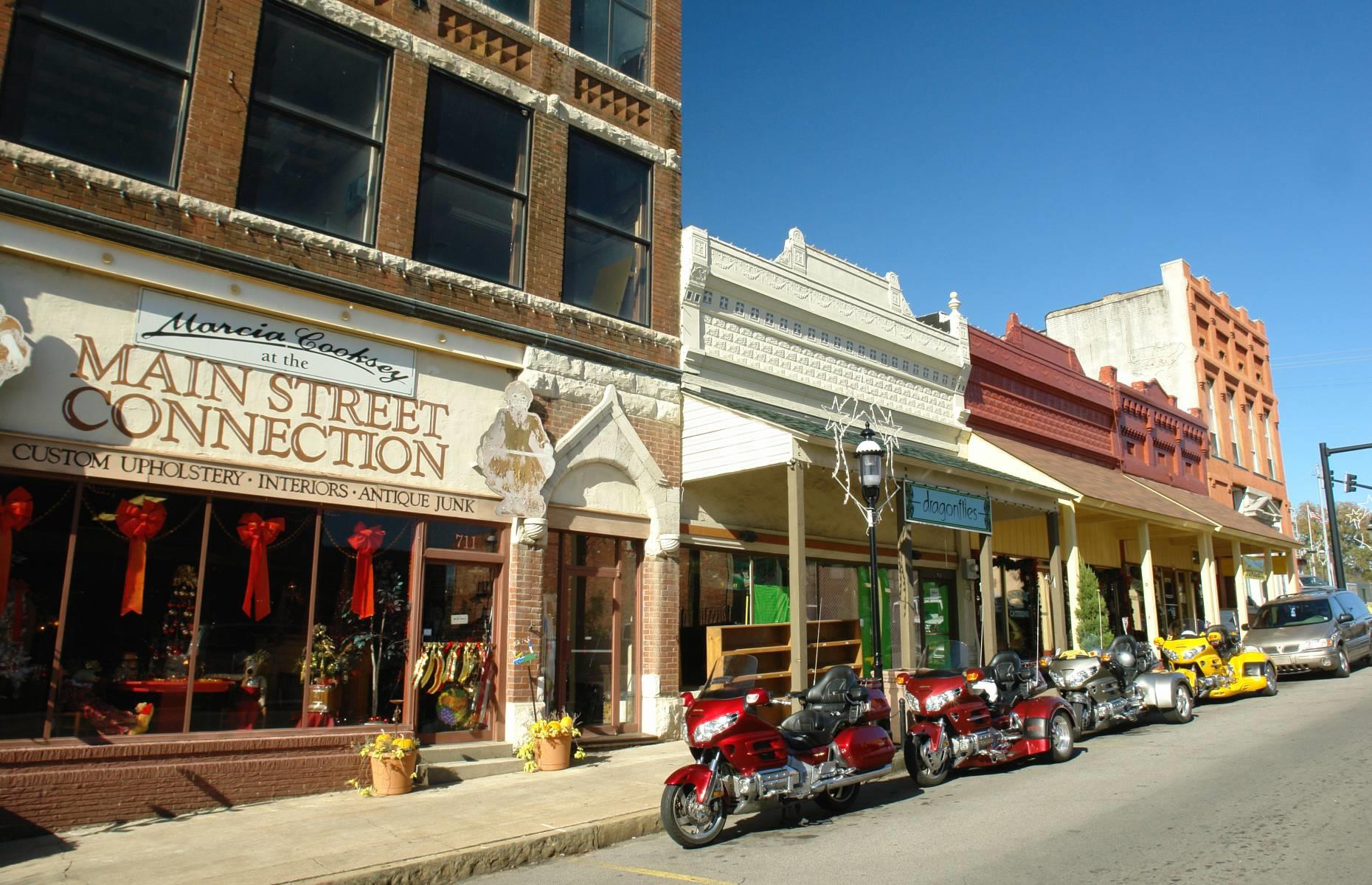
Arkansas: Springdale to Van Buren
Operated by the Arkansas and Missouri Railroad, this all-day round-trip from Springdale, deep in the Ozark Mountains, to the city of Van Buren and back racks up 134 miles of track. The trip includes three hours of free time to explore the historic district of downtown Van Buren, which converges around Main Street and its gingerbread-like architecture.
Silver Feather passengers will ride in the train’s panoramic glass-domed dining room in one direction and ride downstairs in the other, offering two different perspectives of the same journey.
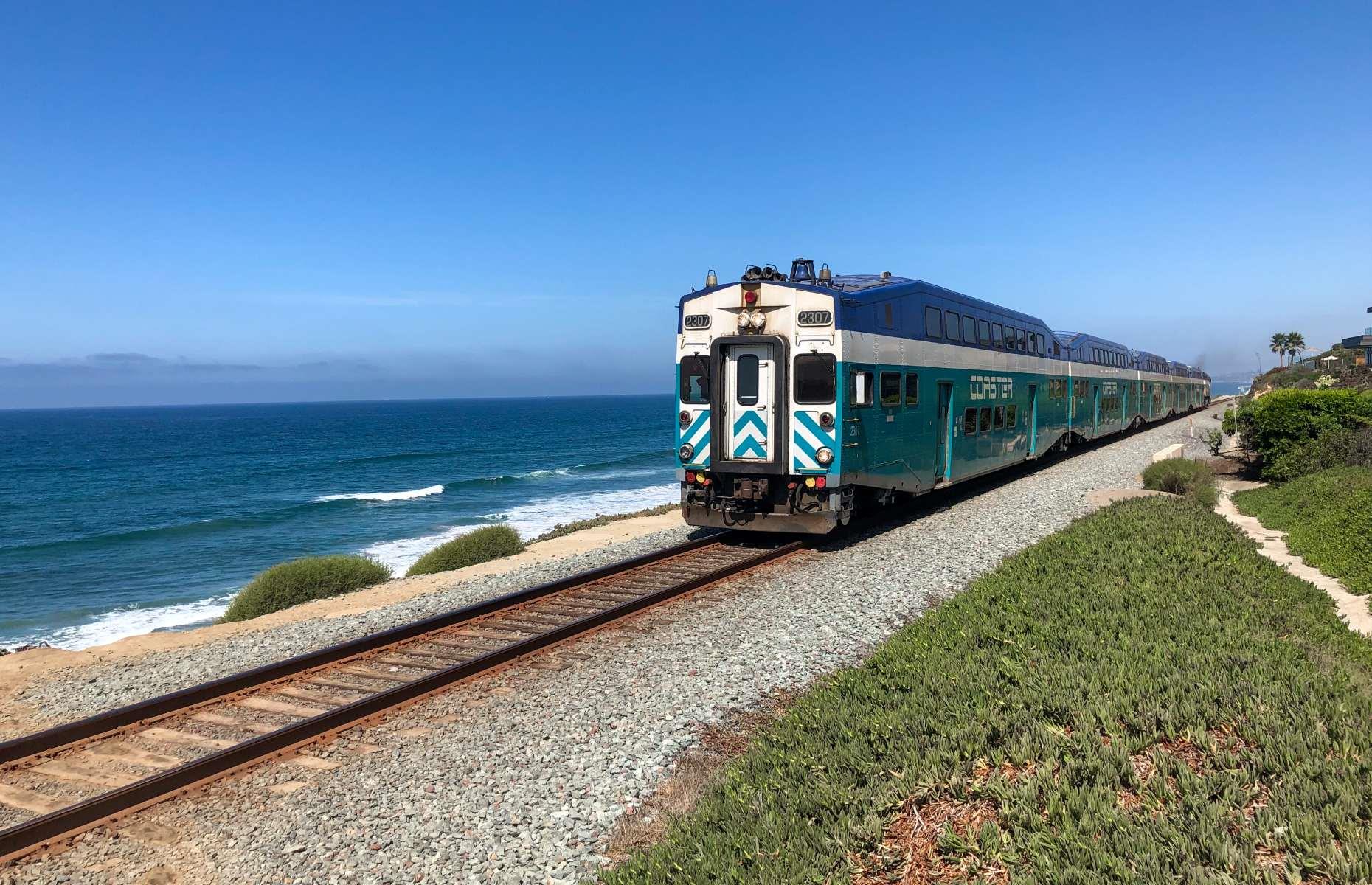
California: Pacific Surfliner
Skirting the Golden State’s gleaming Pacific coastline, the Pacific Surfliner train runs between the sun-drenched cities of San Luis Obispo and San Diego, calling in at Santa Barbara and Los Angeles along the way. For just under nine hours, passengers journey through the warmth of SoCal, passing the narrow Simi Valley towards the Santa Susana Mountains.
Gliding through oceanside towns and past strips of yellow sand, watch surfers in the near-distance as salt spray spatters the windows.
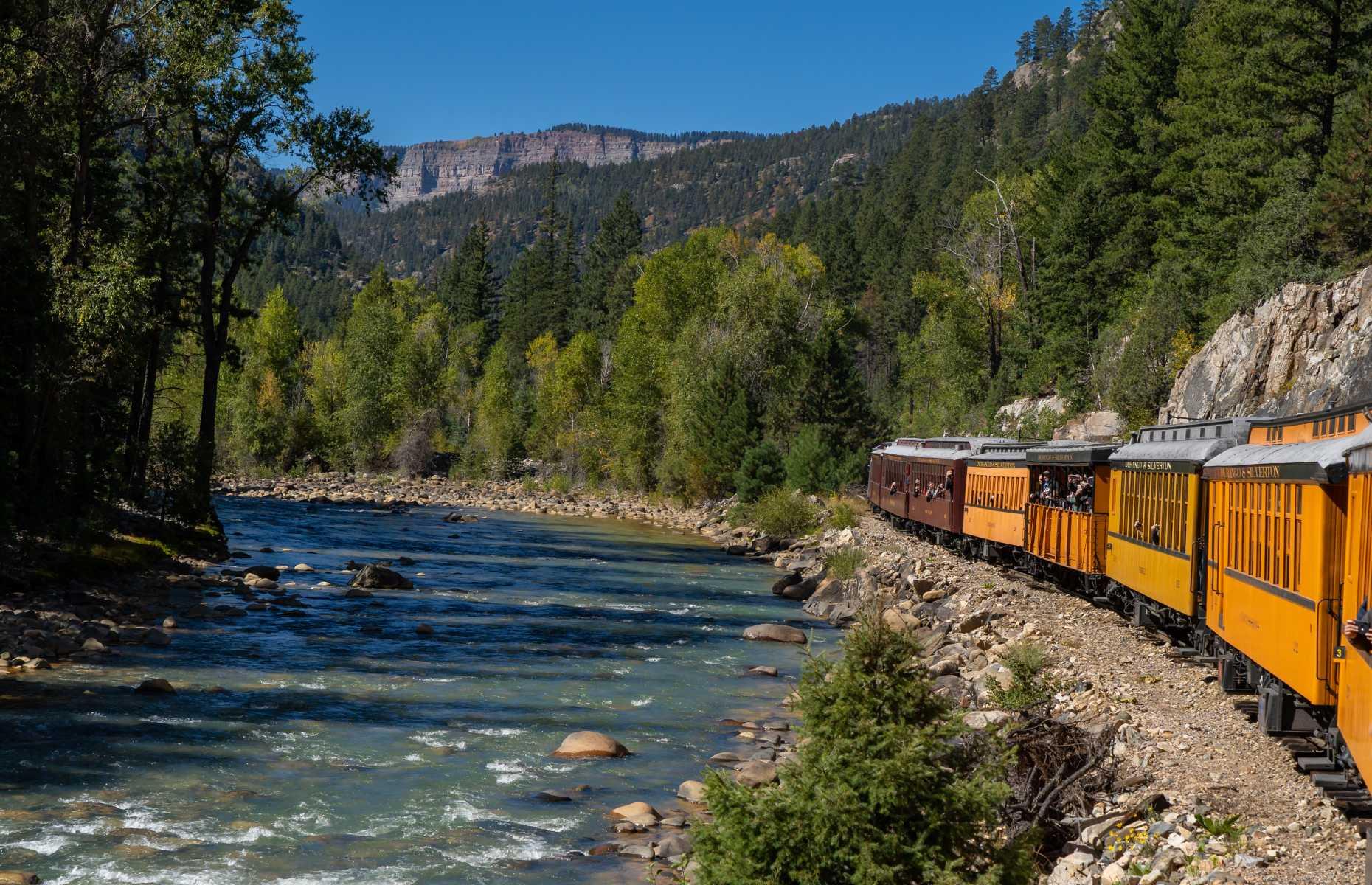
Colorado: Durango and Silverton Narrow Gauge Railroad
A National Historic Landmark, the Durango and Silverton Narrow Gauge Railroad has occupied a 45-mile stretch of the original Denver and Rio Grande Railway since 1882. Its signature route between Durango’s heritage railway depot and the historic mining town of Silverton opens May through October each year, climbing into the Rocky Mountains alongside the Animas River and looking out onto the brooding San Juan National Forest.
The journey takes three and a half hours each way and includes almost two hours to explore Silverton.
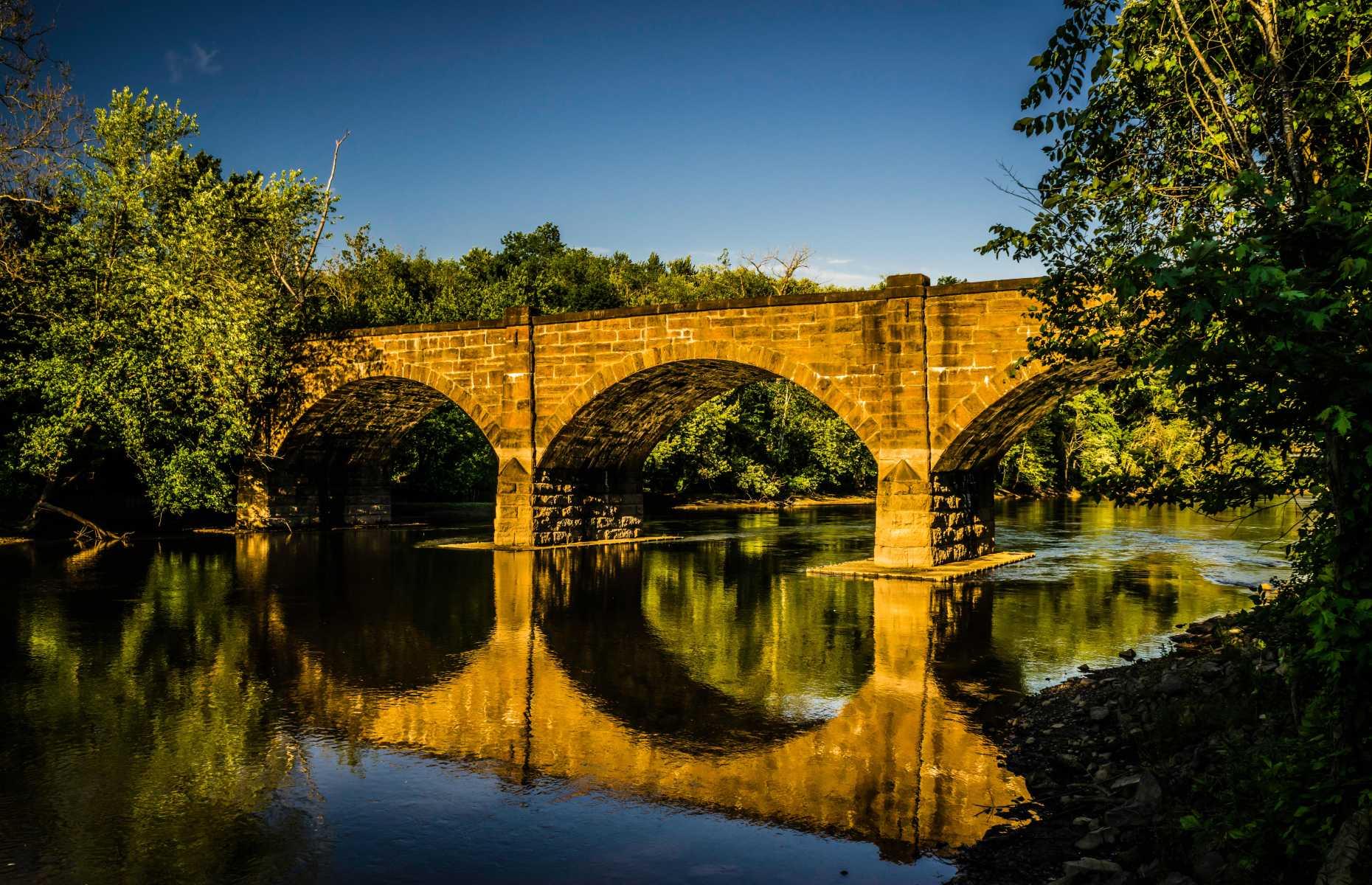
Connecticut: Amtrak Hartford Line
The Amtrak Hartford Line connects leafy New Haven (home to Ivy League juggernaut Yale University) to the city of Springfield in western Massachusetts via Connecticut’s capital, Hartford. Taking just under an hour and a half in its entirety, the journey is the perfect introduction to the state’s pretty cities and to the bucolic beauty of New England, much-loved by American author Mark Twain.
On the leg between Windsor and Windsor Locks, you’ll roll over the Farmington River Railroad Bridge (pictured), which has stood for over 150 years.
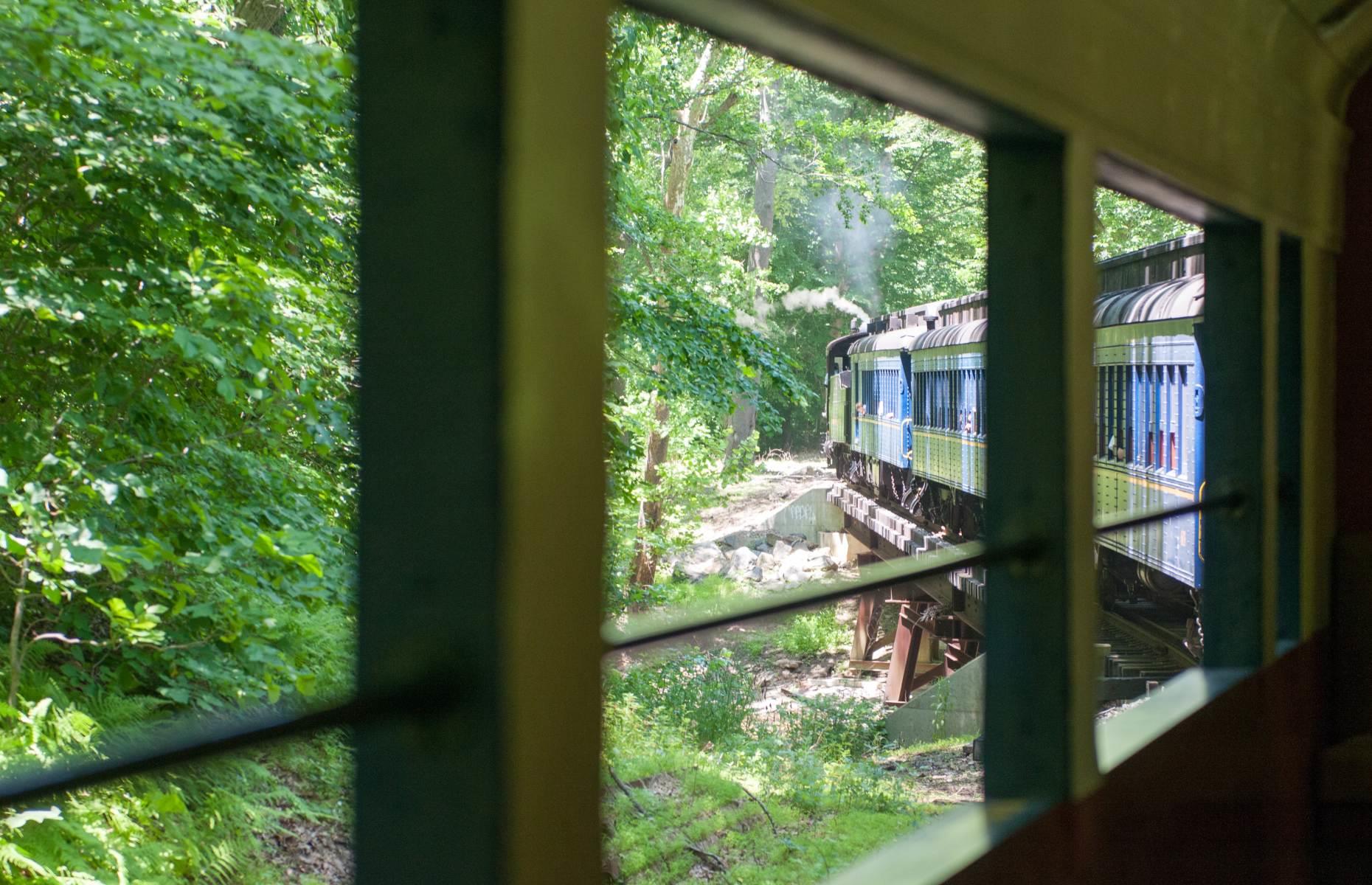
Delaware: Wilmington and Western Railroad
The Wilmington and Western Railroad opened in 1872 as a way of transporting goods between the mills of Red Clay Creek and the port of Wilmington. Now it offers passengers the chance to soak up some of the most arresting vistas in the tri-state area, while still paying homage to Delaware’s industrial legacy.
The 10-mile route winds through old milling communities, small canyons, and wooded groves, with the option to de-train at Mount Cuba for a picnic lunch.
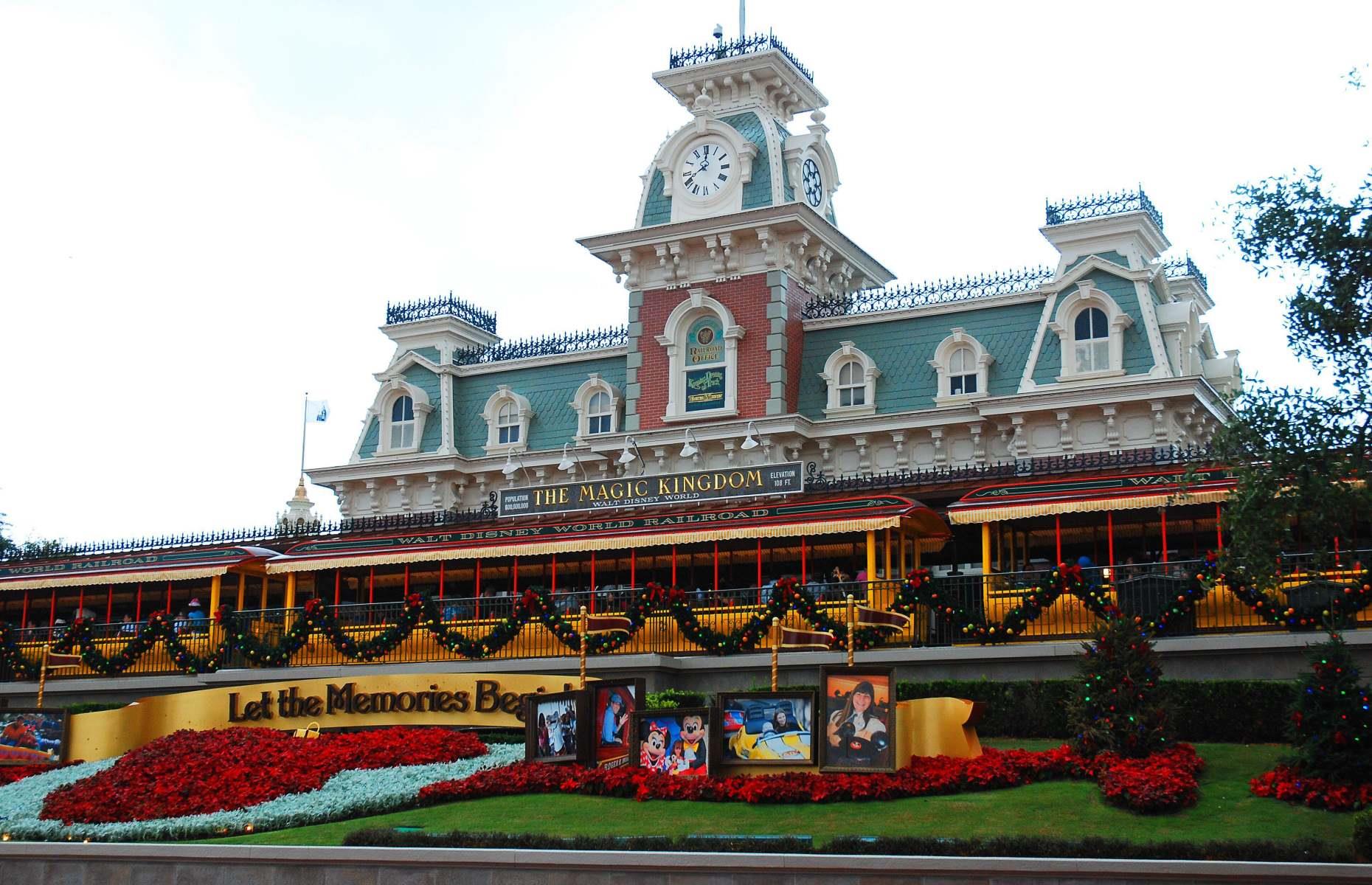
Florida: Walt Disney World Railroad
After being out of service for four long years, the Walt Disney World Railroad reopened to passengers in December 2022 with a revamped track and a new conductor. Found within the world-famous tourist attraction’s Magic Kingdom, the nostalgic railroad's fleet of four restored vintage narrow-gauge steam engines leads Disney fans on a leisurely 20-minute ride around the park.
Walt Disney himself was a lifelong rail buff – he loved trains so much that he built a miniature railway in his backyard.
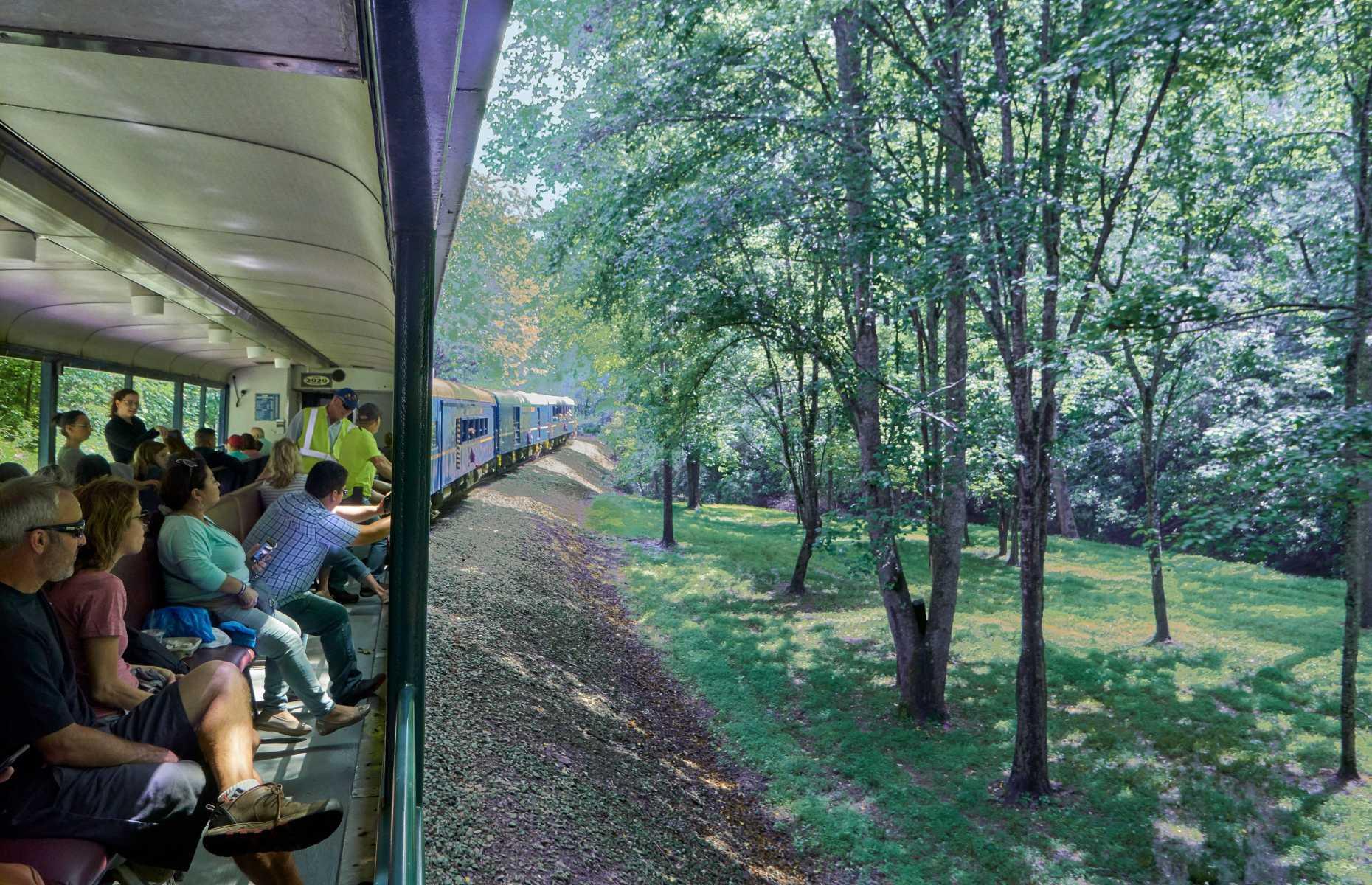
Georgia: Blue Ridge Scenic Railway
Tracing the Toccoa River in the Appalachian foothills of northern Georgia, the Blue Ridge Scenic Railway coasts along on tracks first laid towards the end of the 19th century. Starting from the downtown depot of the eponymous town of Blue Ridge, this peaceful round-trip journey sweeps through the greens and browns of the Georgian countryside before pausing in the sister towns of McCaysville in Georgia and Copperhill, just over the border in Tennessee.
You can choose to ride in a climate-controlled vintage rail car or an open-air carriage.
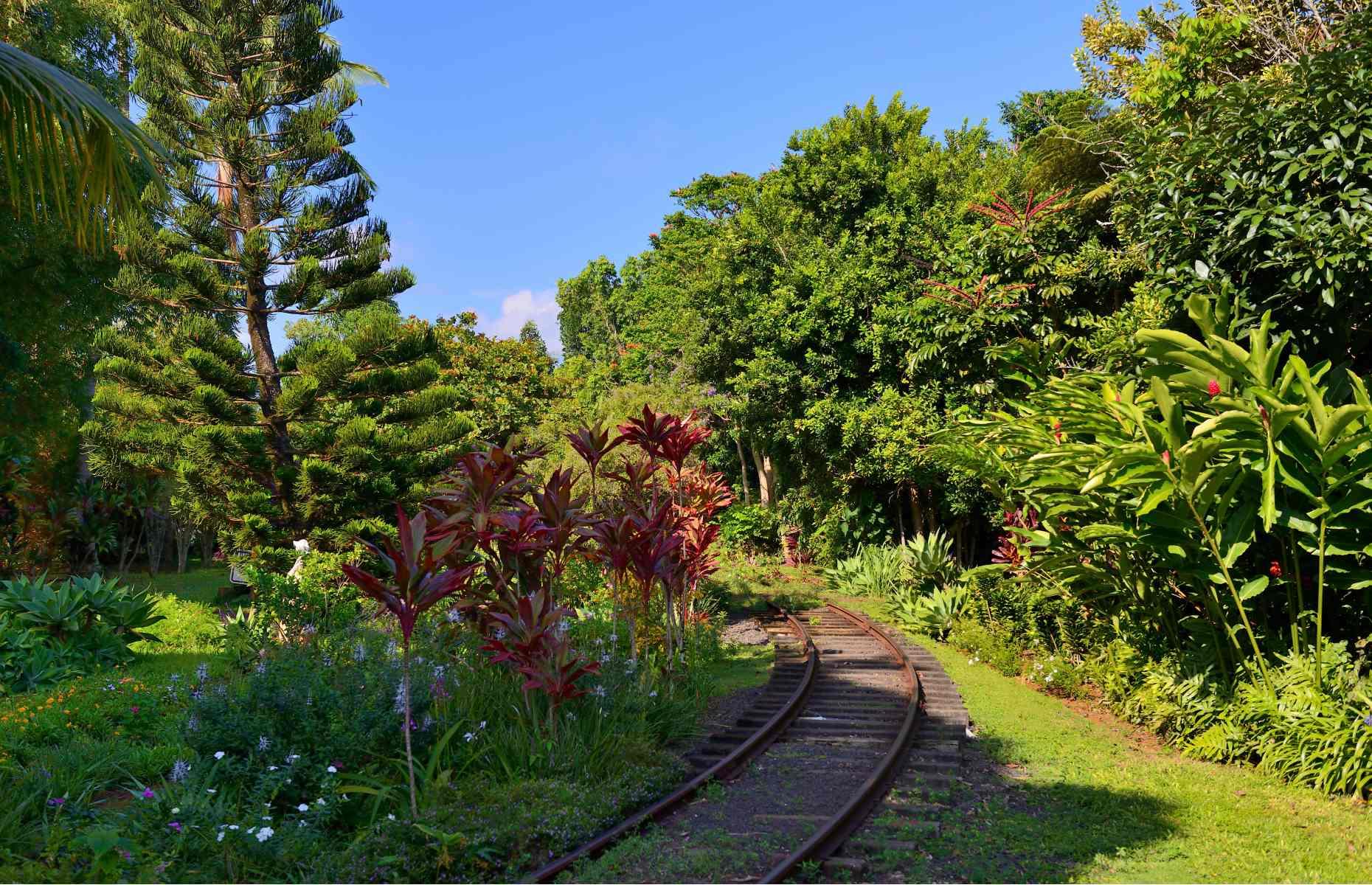
Hawaii: Kauai Plantation Railway
On Hawaii’s oldest island, you can learn about the original sugar cane and taro crops that have sustained native Hawaiians since ancient times in a really unique way. The Kauai Plantation Railway tours the 105-acre Kilohana Plantation, where more than 50 varieties of fruit trees, vegetables, flowers, and other plants grow in fragrant orchards, fields, and groves.
The narrated 40-minute journey aboard mahogany-hewn carriages also features a stop to feed the working farm’s animal residents, including pigs, goats, and donkeys.
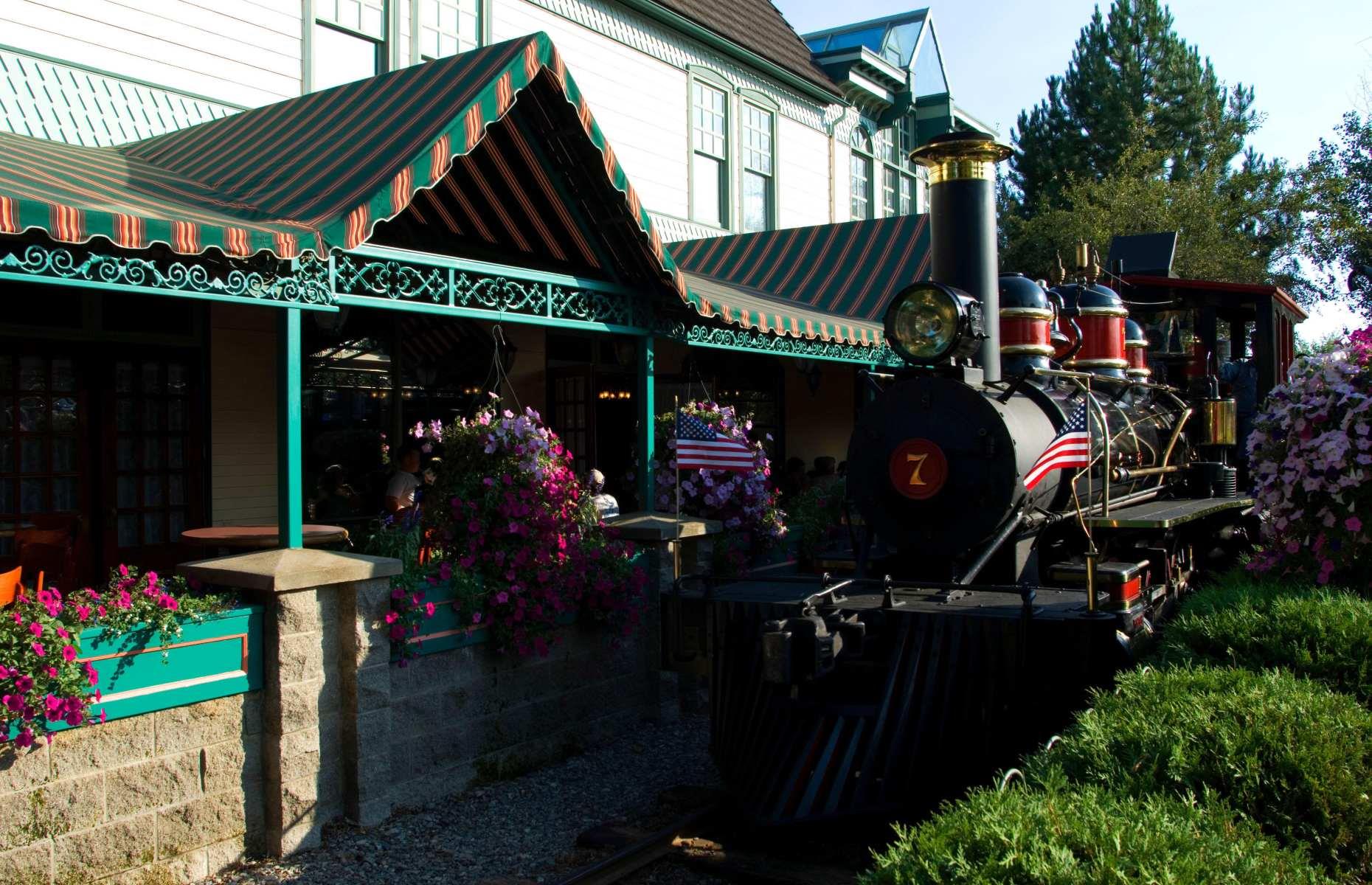
Idaho: Silverwood Theme Park
Idaho is full of stunning landscapes, but sadly has little to offer those wishing to enjoy them from the tracks. The Gem State’s sole tourist train route, the Thunder Mountain Line, had to close down in 2016, while its lone Amtrak station at Sandpoint is served by the Empire Builder service but only in the dead of night.
However, Silverwood Theme Park, in the panhandle of northern Idaho, does have its own steam train – Engine No 7. It circles the park and ventures into the Silverwood forest, also participating in immersive theater shows.
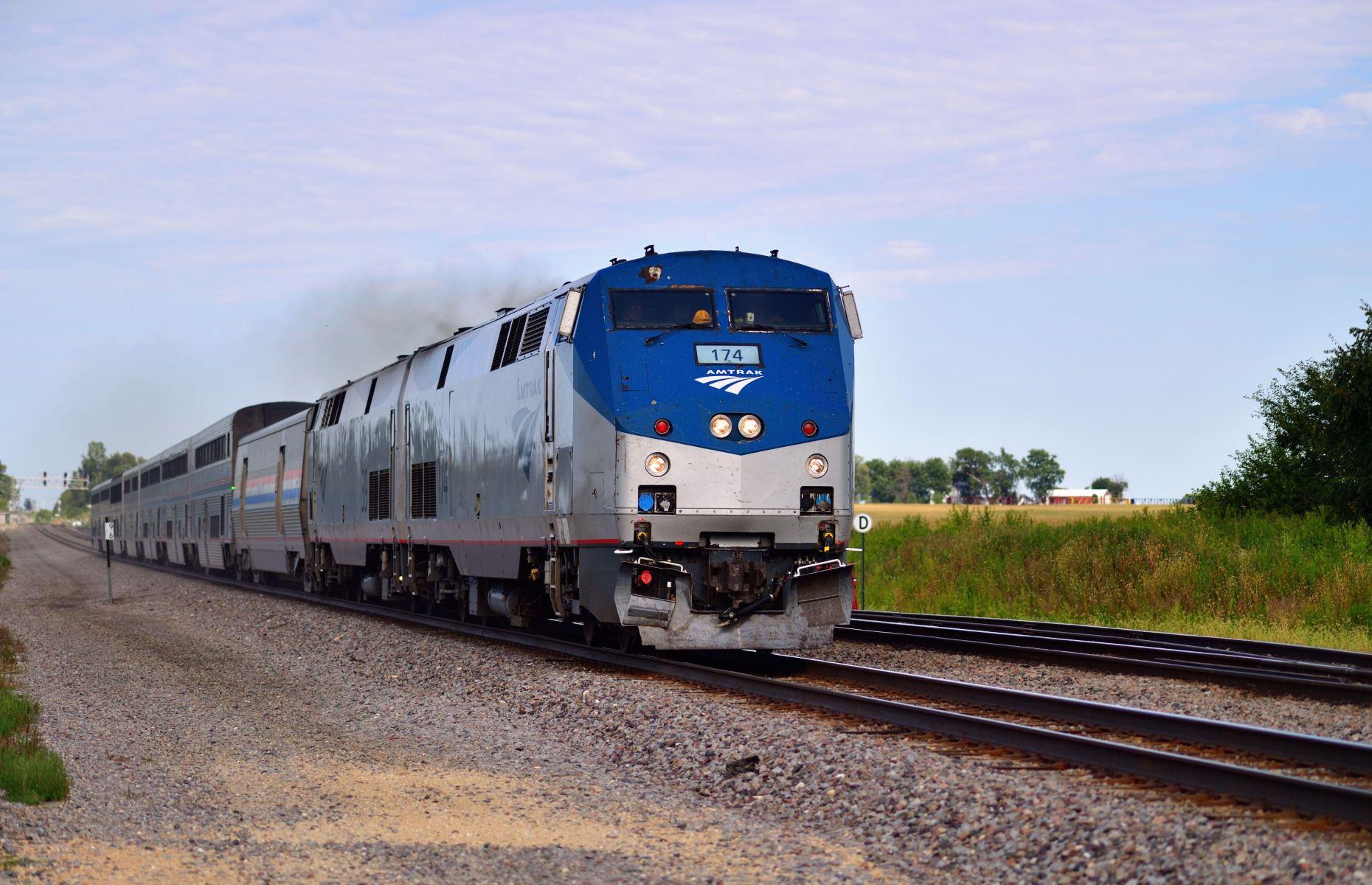
Illinois: California Zephyr
Spanning 2,424 miles and over 50 hours from Chicago to San Francisco, the California Zephyr is one of Amtrak’s longest routes. The leg through Illinois begins as the train pulls away from the Windy City’s Union Station in the middle of the afternoon and makes its way into Chicago's suburbia.
From the sightseer lounge, Amtrak’s observation car, catch views of pastoral Illinois that will remind you why its nickname is the Prairie State, with grasslands and farms melting into wetlands and trees the closer you get to Iowa.

Indiana: French Lick Scenic Railway
The French Lick Scenic Railway was founded with the desire to replicate the golden age of train travel when trains were the primary vehicle for long-distance travel across America. In addition to hosting a program of themed rail adventures aimed at young families, French Lick runs a scenic ride through parts of the Hoosier National Forest (pictured).
The journey lasts an hour and 45 minutes, departing from a 1907 train depot and twisting through the hills and forests of southern Indiana, passing through the state’s second-longest railroad tunnel in the process.
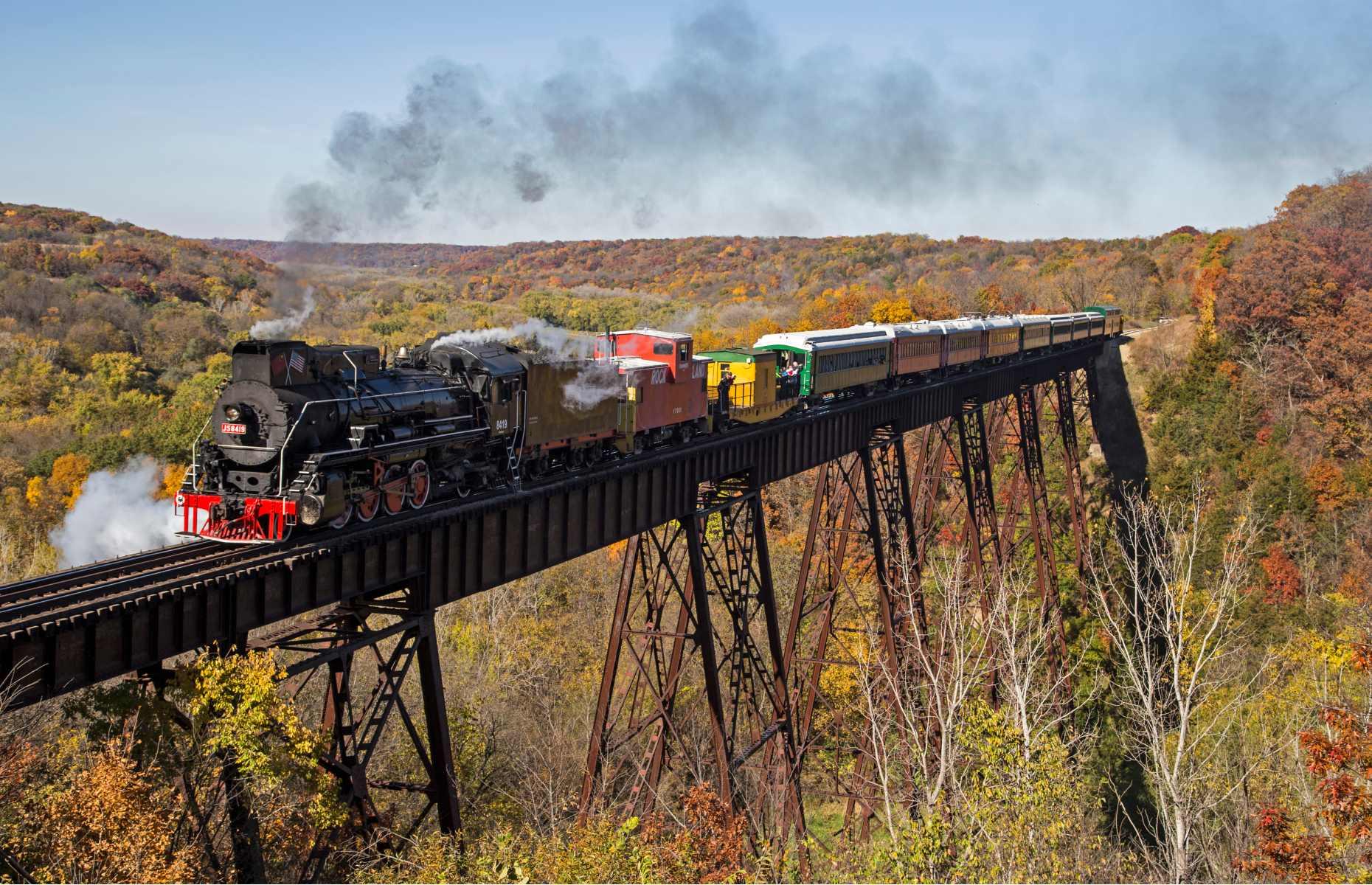
Iowa: Boone and Scenic Railroad
Since the 1920s, Iowa has lost more than 50% of its rail mileage, which had boomed around the turn of the century. The state retains several heritage stations and railroads that now serve as tourist attractions, and one of these is the Boone and Scenic Railroad.
Its classic Fraser Train facilitates excursions from May to October, starting in Boone and traveling to the old coal-mining settlement of Fraser through the Des Moines River Valley. A literal high point of the journey is crossing the 156-foot Bass Point Creek High Bridge (pictured).
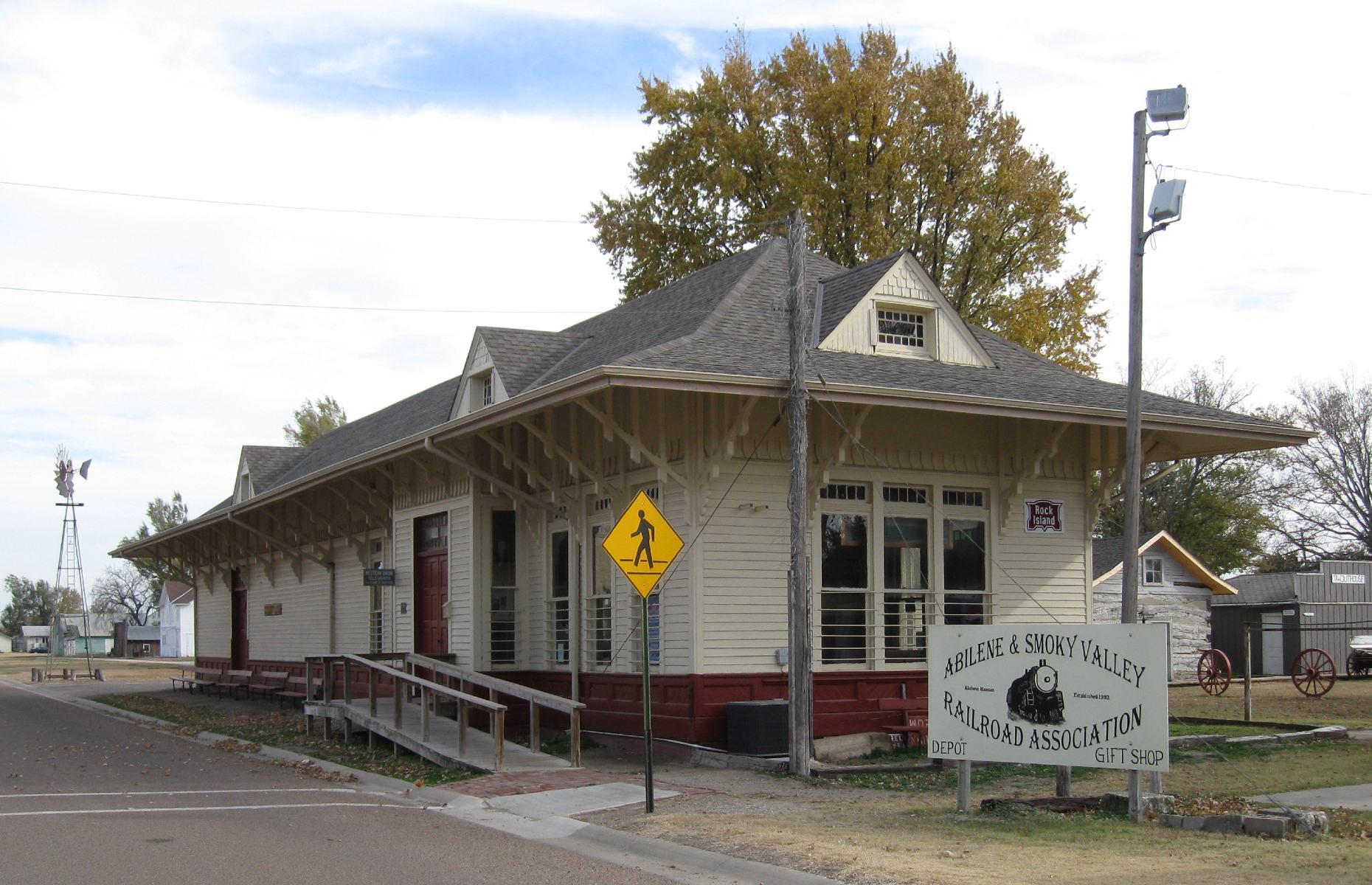
Kansas: Abilene and Smoky Valley Railroad
The Abilene and Smoky Valley Railroad was established in 1993 as a tribute to the Sunflower State’s railroad history. Running on heritage tracks initially laid in 1886, the volunteer-led line's regular excursions through the Smoky Hill River Valley feature vintage carriages and open-air viewing cars, where you can sit and watch the sights of old agricultural Kansas rock by.
The service departs from the listed Rock Island Depot (pictured) in historic Abilene – take the dinner train for a truly magical experience.
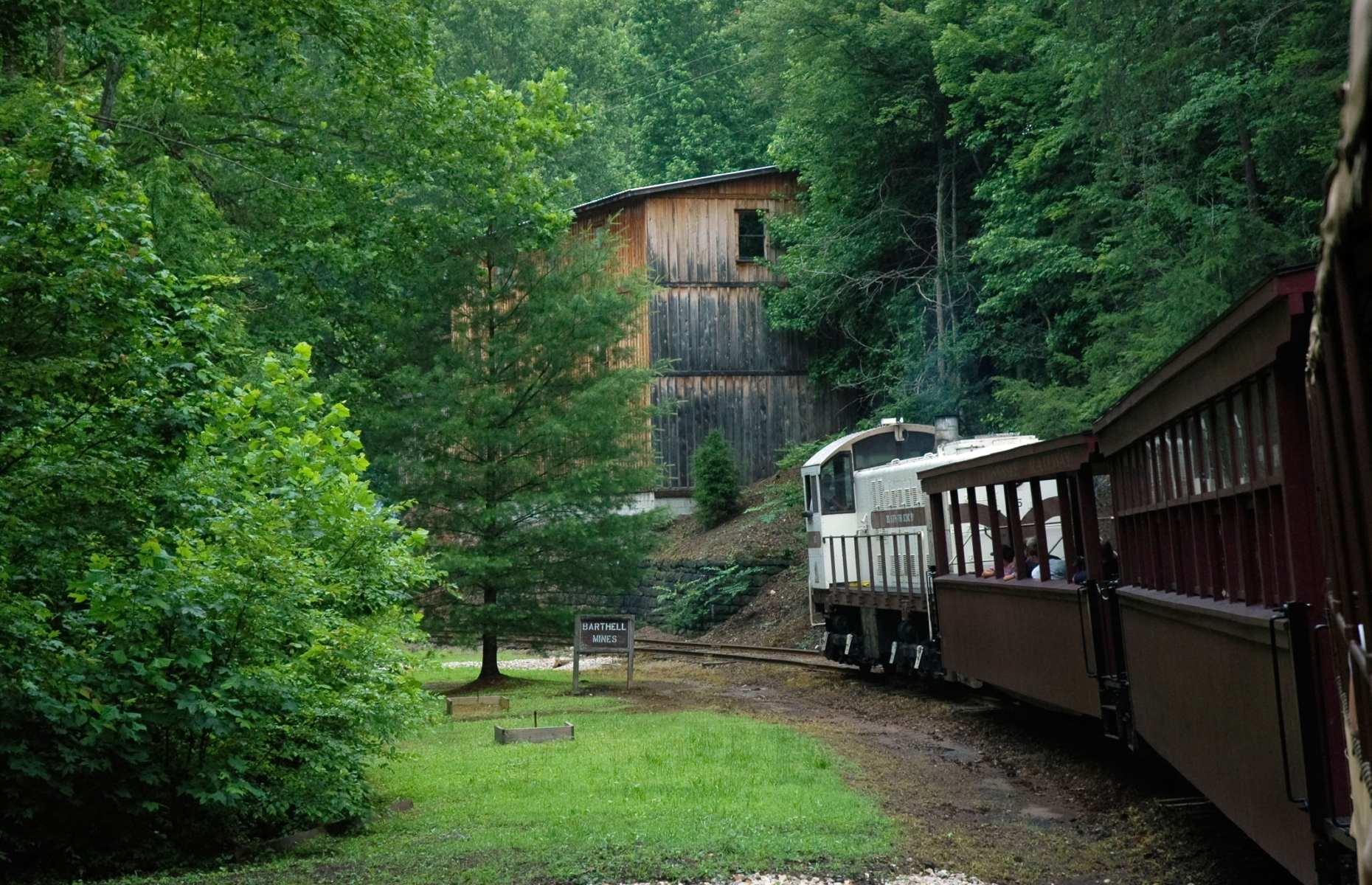
Kentucky: Big South Fork Scenic Railway
The Big South Fork Scenic Railway often finds itself high up lists of America's most delightful rail journeys, especially during leaf-peeping season. Perfect for nature lovers and history buffs, this round-trip adventure clanks along accompanied by views of the Daniel Boone National Forest and the Big South Fork River and Recreation Area.
This trip culminates in a two-hour layover at the Barthell Coal Camp where passengers can learn about life during the early 1900s in the southernmost Appalachians.

Louisiana: Sunset Limited
Departing three times a week, the Sunset Limited connects the Big Easy to LA and is the oldest named train in Amtrak's fleet (it turns 130 in 2024). After leaving New Orleans the train remains in Louisiana for around five hours, calling at four stations in the state on a journey that jangles past balcony-trimmed small towns, ethereal bayous, and seas of sugarcane before dipping into dusty Texas.
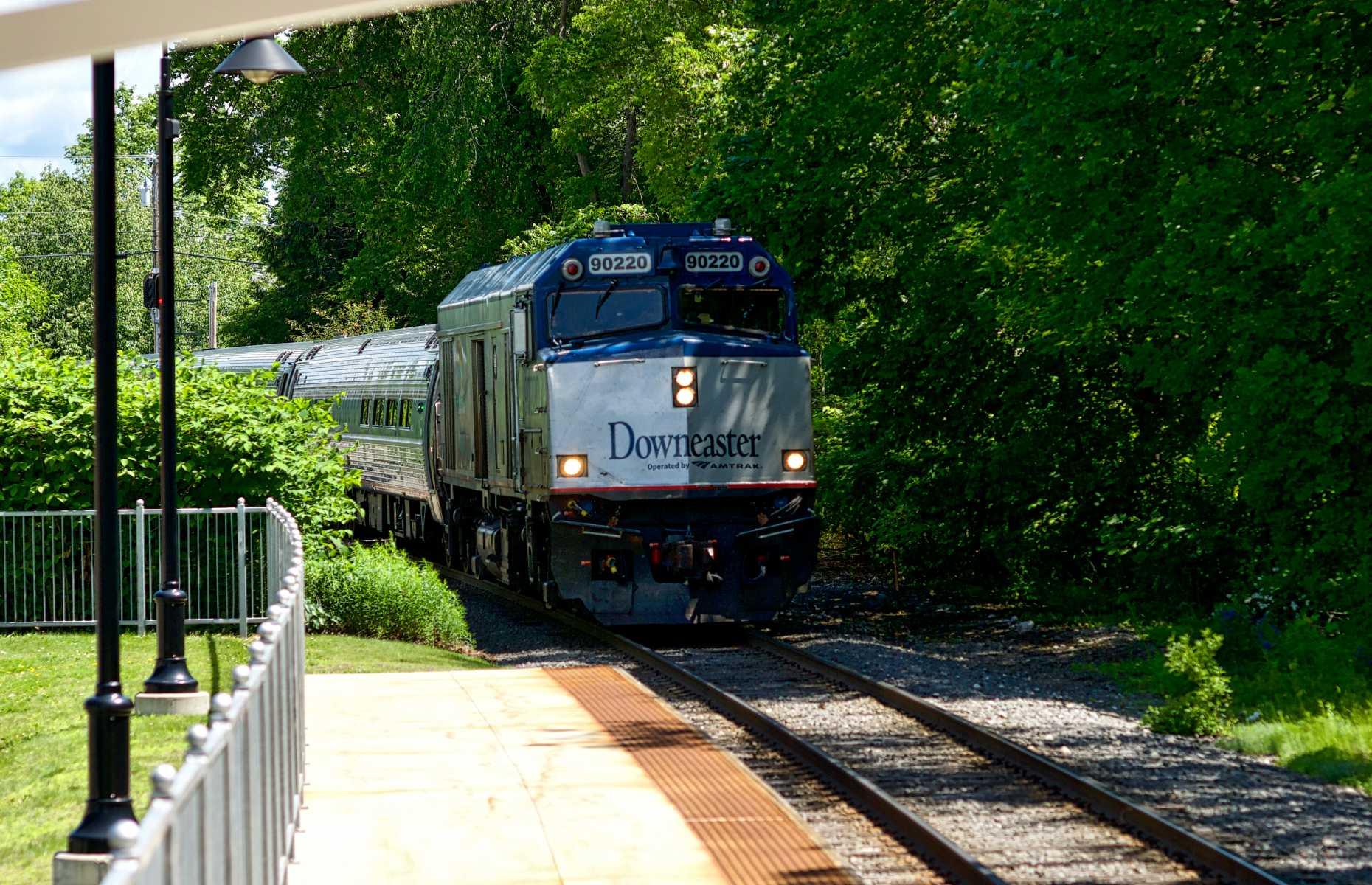
Maine: Downeaster
Named after the Down East region of maritime Maine, the Amtrak Downeaster links the Pine Tree State to New Hampshire and Massachusetts, from Brunswick to Boston. The route through Maine takes up around half the just over three-hour journey, hugging the rugged coast and taking in stops like Wells – with its seven miles of soft beaches – and Portland, where lobster rolls await.
The terminus town of Brunswick has plenty going for it too, with a year-round farmers’ market and nature-rich bike trails to hit. Five round-trips operate each day.
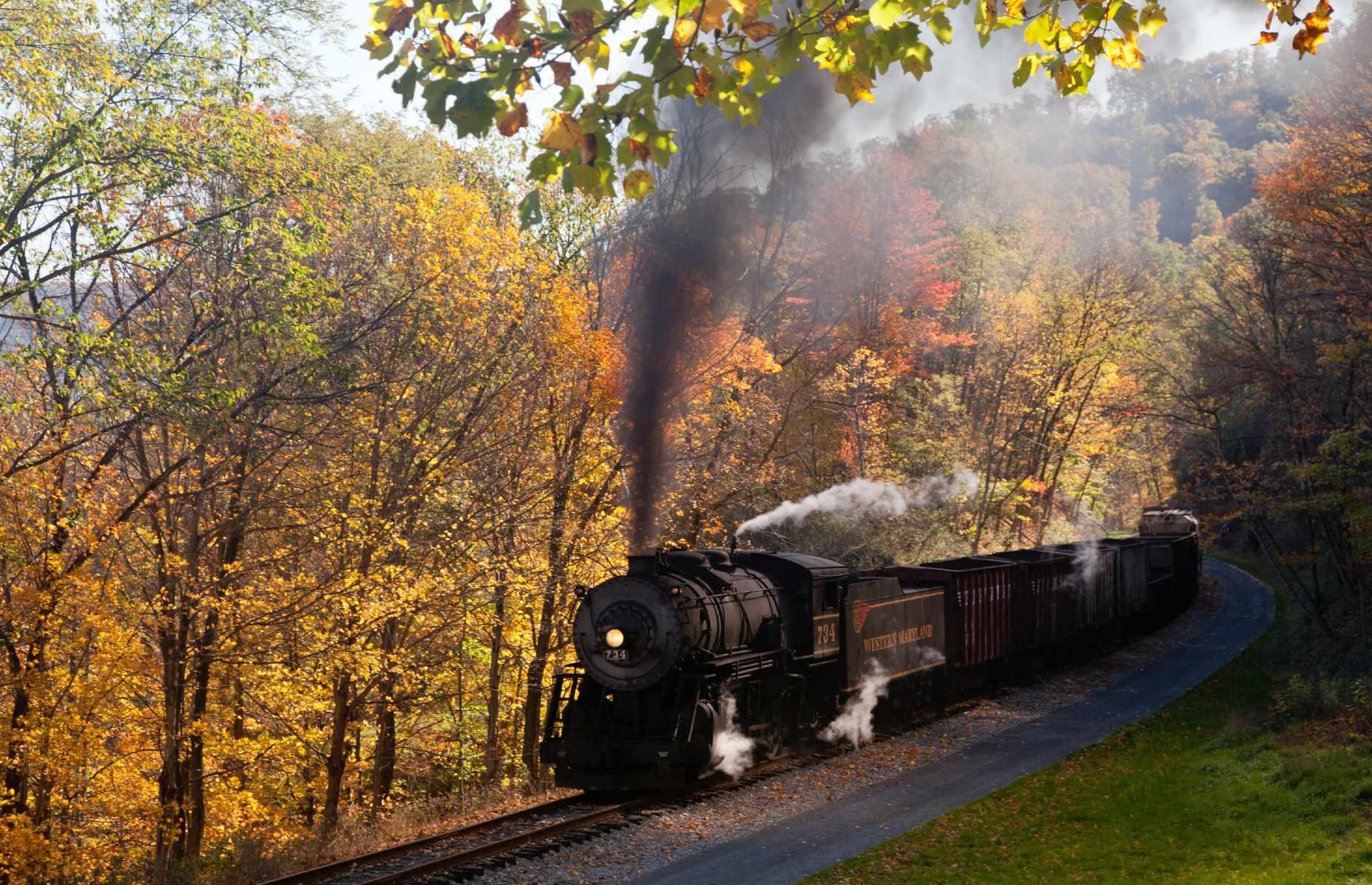
Maryland: Western Maryland Scenic Railroad
Cruising through the Allegheny Mountains between Cumberland and Frostburg, the Western Maryland Scenic Railroad navigates creeks, canyons, streams, bridges, and tunnels on its four-and-a-half-hour round-trip. The historic diesel and steam locomotives climb up the mountainside and traverse thick forest before reaching the charming town of Frostburg, where passengers can hop off and explore.
Willis Mountain, Haystack Mountain, Cash Valley, and Helmstetter Farm are among the most interesting sights along the way. The route operates year-round.

Massachusetts: Cape Cod Central Railroad
Dating back to the mid-1800s, the Cape Cod Central Railroad offers excursions that are not only stunningly scenic but educational too. As the train threads through salt marshes, sand dunes, woodlands, and cranberry bogs, passengers are treated to narrated tales of fruit harvests, canal history, and the cape's coastal ecology.
The classic circular two-hour trip starts from Hyannis and makes its way through idyllic villages like Sandwich (the oldest on the cape) before crossing the landmark Buzzards Bay vertical lift bridge.
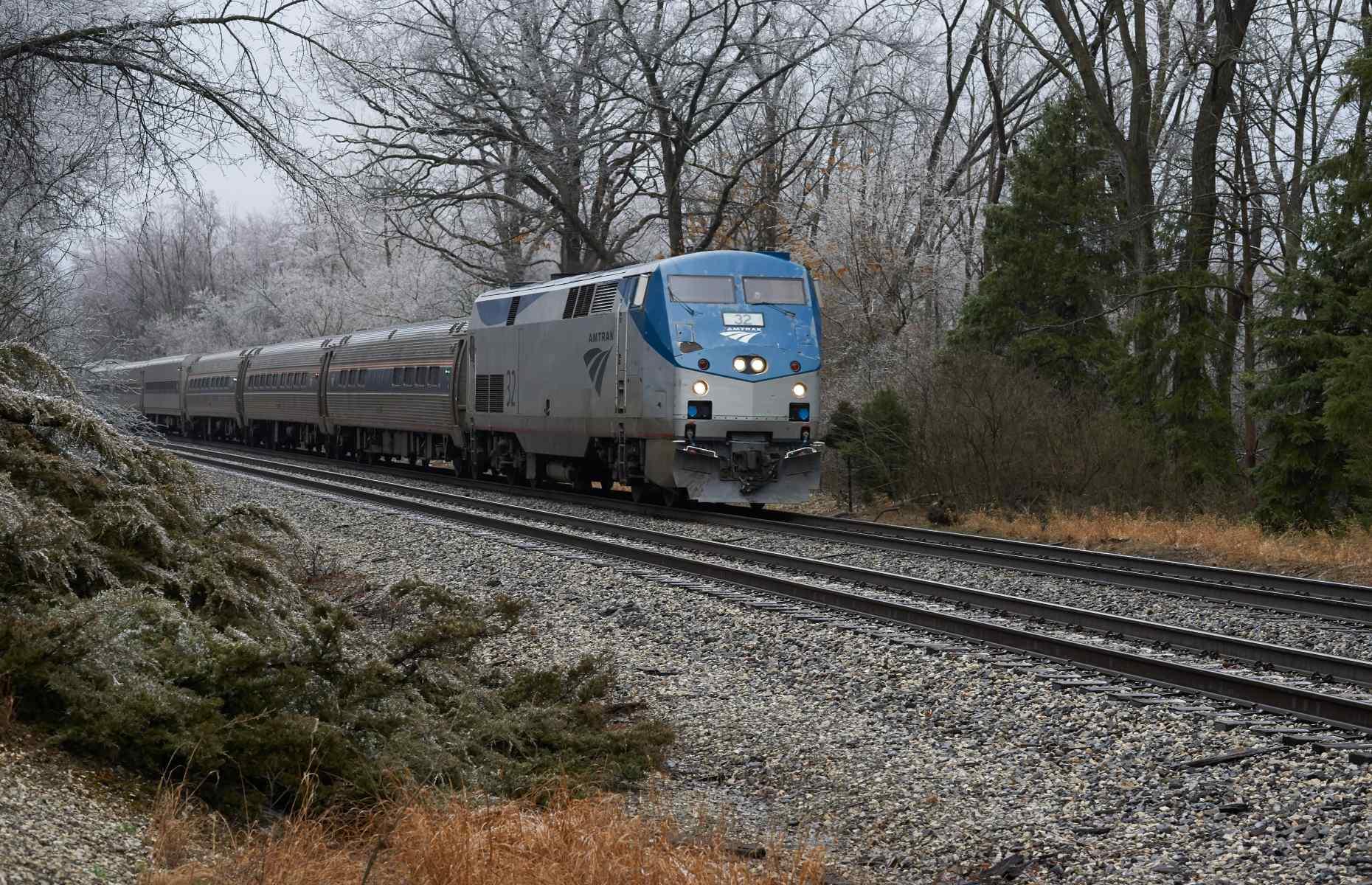
Michigan: Blue Water
Amtrak's Blue Water service laces together several Michigan stops between Port Huron and Chicago. It bends around the southern shore of Lake Michigan before heading into the Great Lake State's interior, terminating on Lake Huron's shores.
The westbound Blue Water service makes for a pleasant morning on the tracks, while the eastbound train leaves Chicago in the late afternoon, promising some serious sunset action if you travel when the evenings are longer.
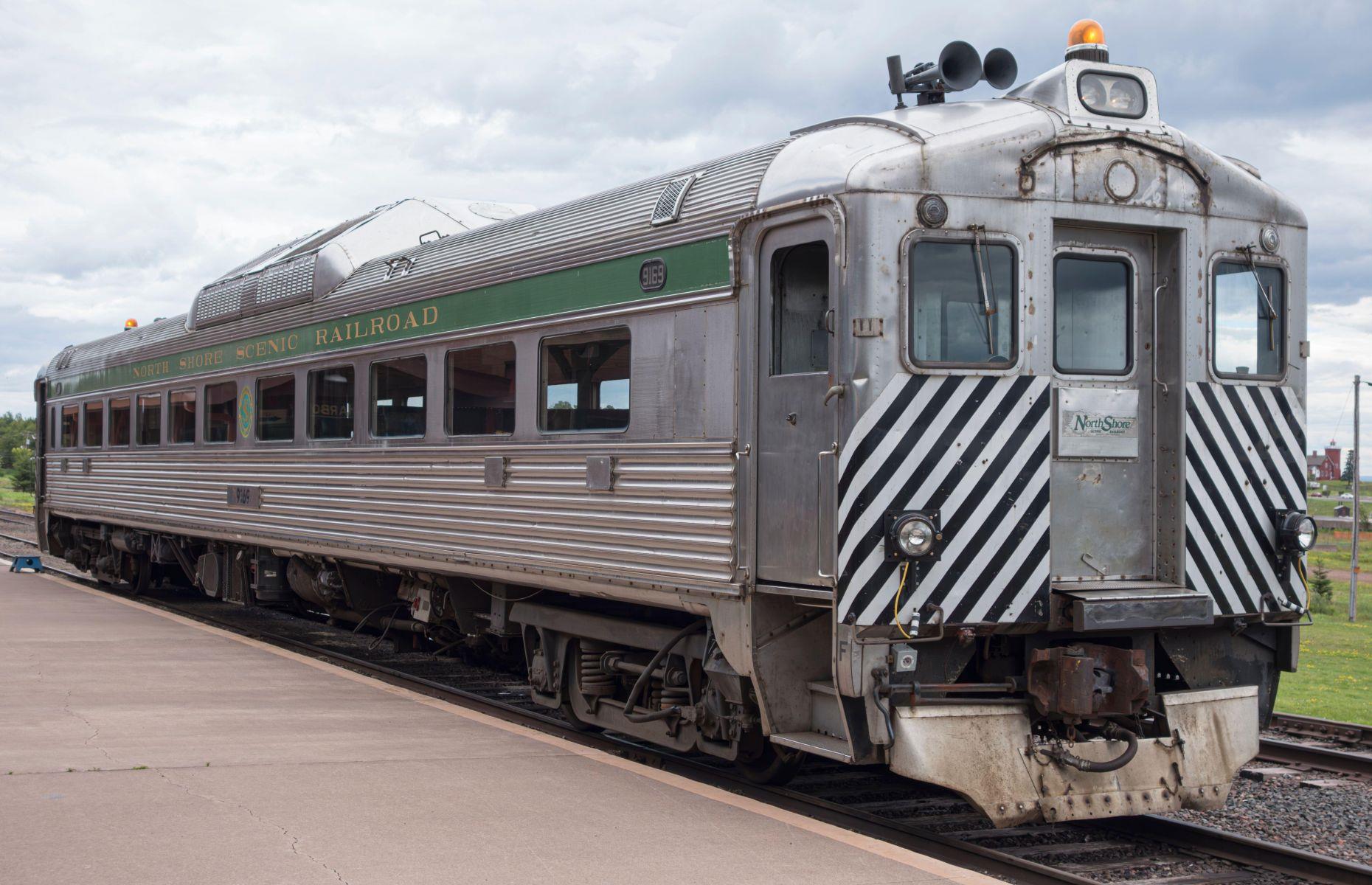
Minnesota: North Shore Scenic Railroad
Minnesota's North Shore Scenic Railroad traverses the westernmost spur of Lake Superior's shoreline. Operating on a 28-mile strip from Duluth to Two Harbors, known as the Lakefront Line, these trains roll along tracks first laid more than 100 years ago, which once contributed to the North Star State's iron ore industry.
The railroad hosts various excursions – treat yourself to a first-class ticket on the Duluth Zephyr, where the major perk is the chance to ride in the Dome Car, its curved windows optimized for sightseeing.
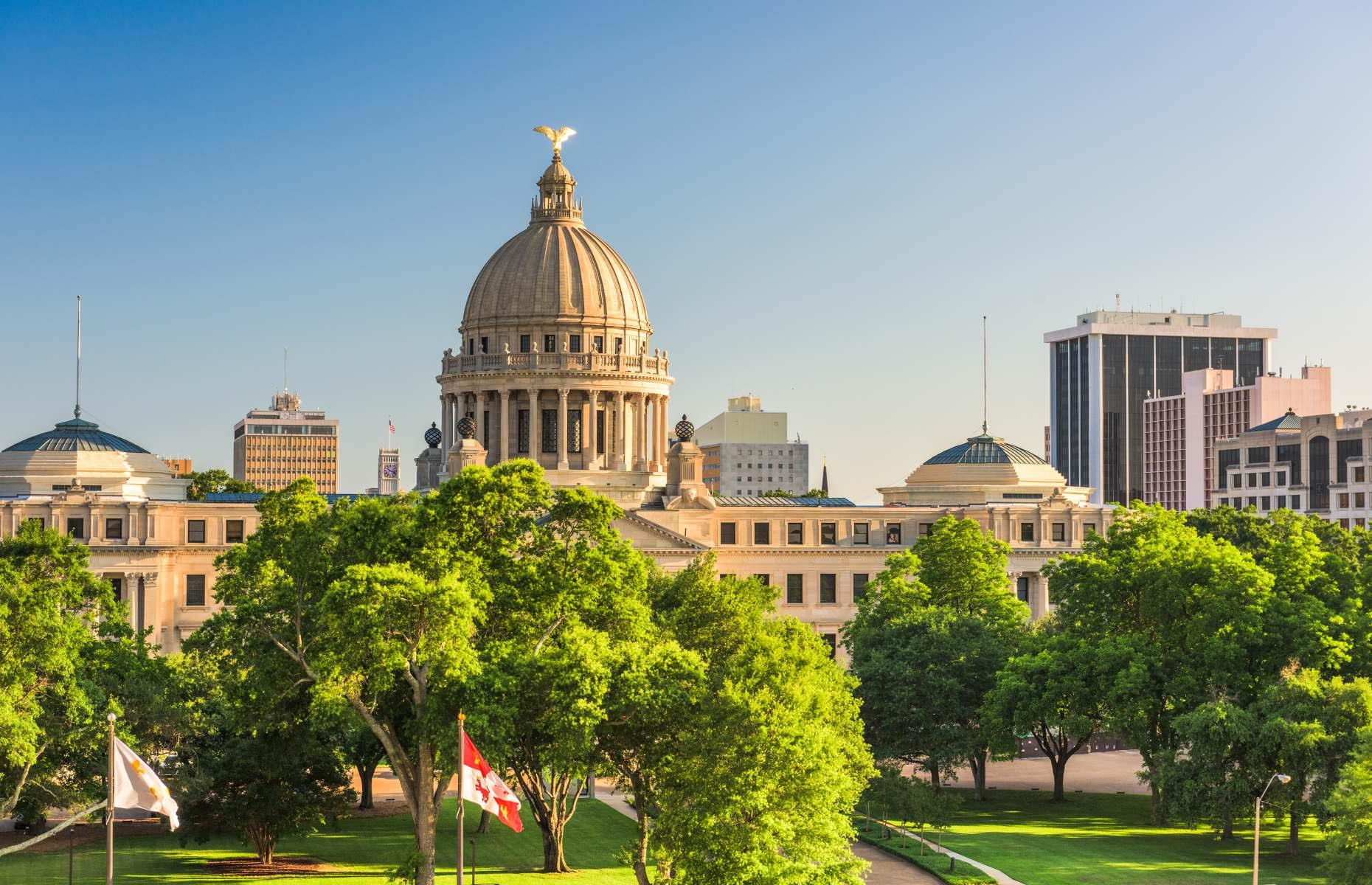
Mississippi: City of New Orleans
Traveling 900 miles and through several decades of America's musical heritage, the City of New Orleans train is one of Amtrak's greatest hits, linking some of the country’s finest cities. The journey between Chicago and New Orleans will strike a particular chord with blues lovers – one of the best stops is Mississippi state capital Jackson (pictured), nicknamed 'the city with soul.'
The southbound service spends more than four hours rattling through Mississippi on a daylight run, flanked by snowy-white cotton fields.
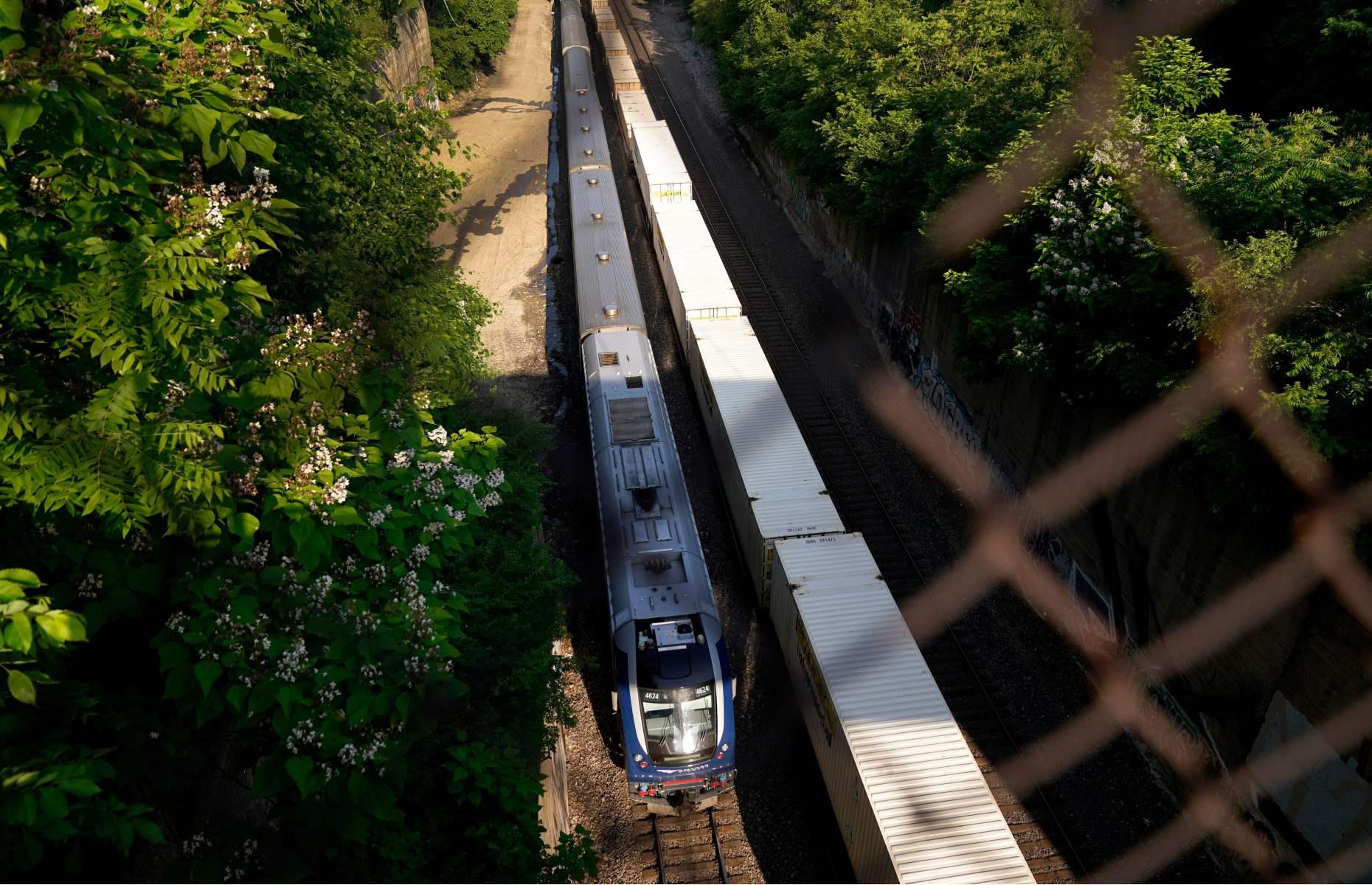
Missouri: Missouri River Runner
With daily departures, the Missouri River Runner crosses the Show-Me State from Kansas City to St Louis in less than six hours. Partially trailing the Missouri River, the longest river in the United States, the train's highlights include the scenic bluffs of Jefferson City, which give way to conservation areas where eagles can be spotted overhead from the comfort of your seat.
As the gap between the train and St Louis closes, lush stands of green foliage herald your approach to the gateway of the west.
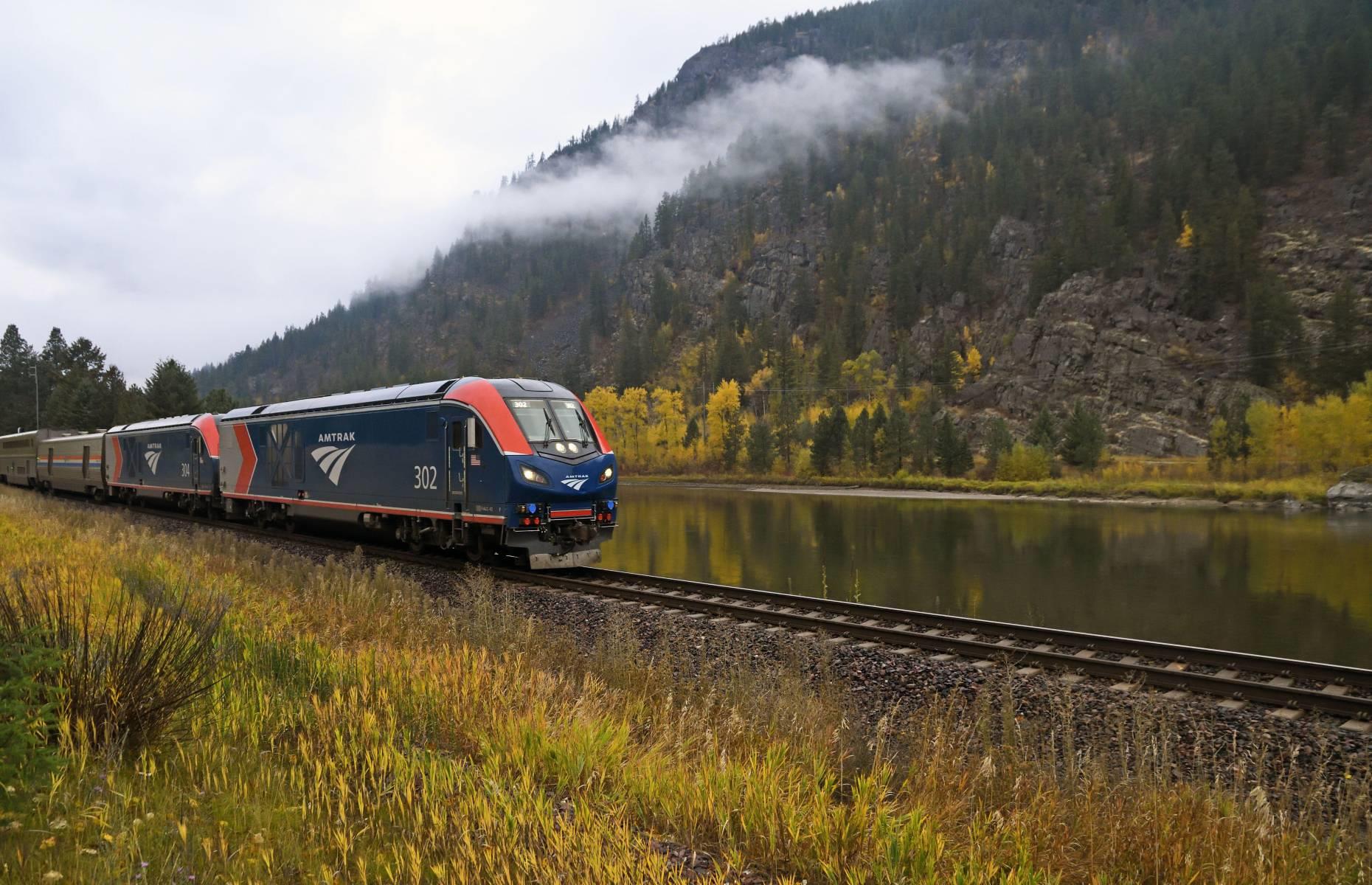
Montana: Empire Builder
Tracking through still-wild tracts of land once explored on the Lewis and Clark Expedition, Amtrak's formidable Empire Builder train covers more than 40 stations in eight states from Illinois to Washington over the course of 46 hours. Perhaps the most majestic part of the route is the Montana leg, which skates through natural wonders like the Kootenai River Valley (pictured) and Glacier National Park.
Around 12 hours of the Empire Builder’s journey is dedicated to the Treasure State, so you can safely take a nap without fear of missing out.
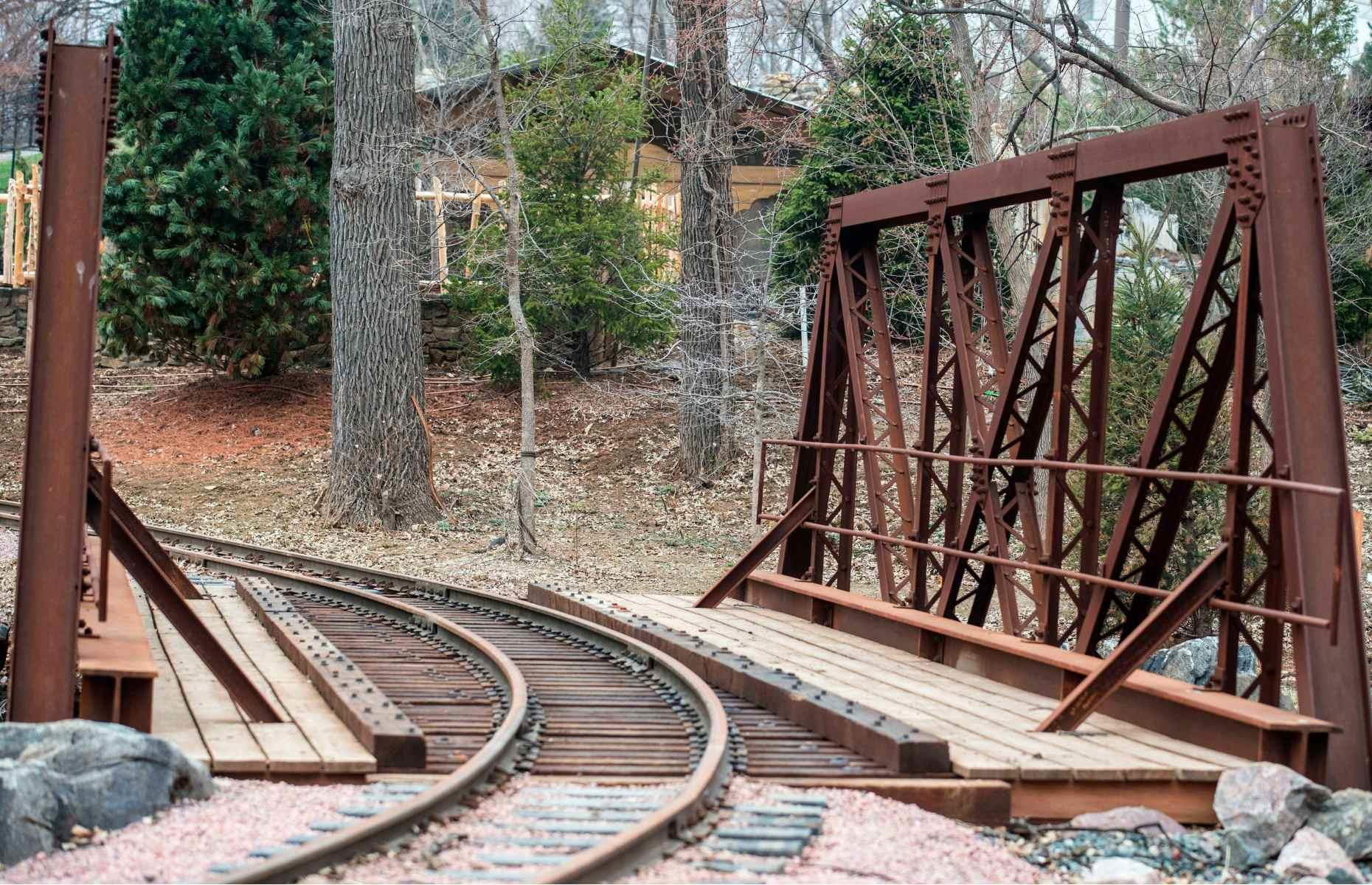
Nebraska: Omaha Zoo Railroad
Since the Fremont and Elkhorn Valley Railroad ceased operations in 2012, Nebraska now has no standard-gauge scenic train routes to ride. The California Zephyr, Amtrak's most visually impressive journey, passes through at night regardless of your direction of travel, making rail adventures in the Cornhusker State hard to come by.
There is, however, a small steam-powered train offering short trips around Omaha's Henry Doorly Zoo, which carries passengers in its open-air cars from March to November every year.
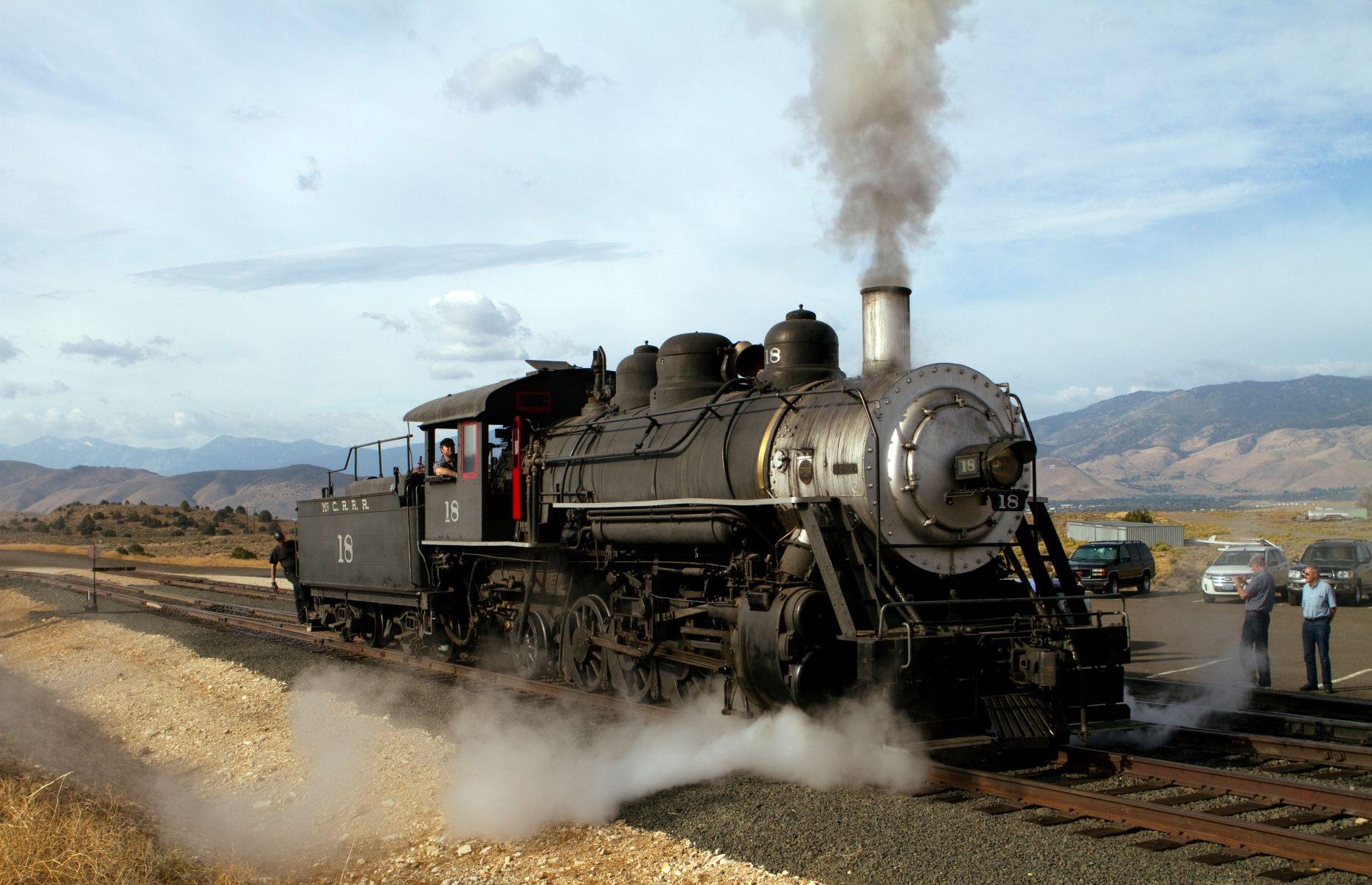
Nevada: Virginia and Truckee Railroad
The so-called 'Queen of the Short Lines,' the Virginia and Truckee Railroad whisks passengers back in time on some of the oldest locomotives in the state. The line has been a fixture of Virginia City since 1869; today, century-old steam engines and heritage diesel trains still depart from the original depot.
Passengers can expect to see some of the most famous Comstock mines and ruins en route to Gold Hill, while listening to the conductor’s stories of the region’s legendary silver rush. Wild horses and raptors call these ranges home, so keep your eyes peeled.
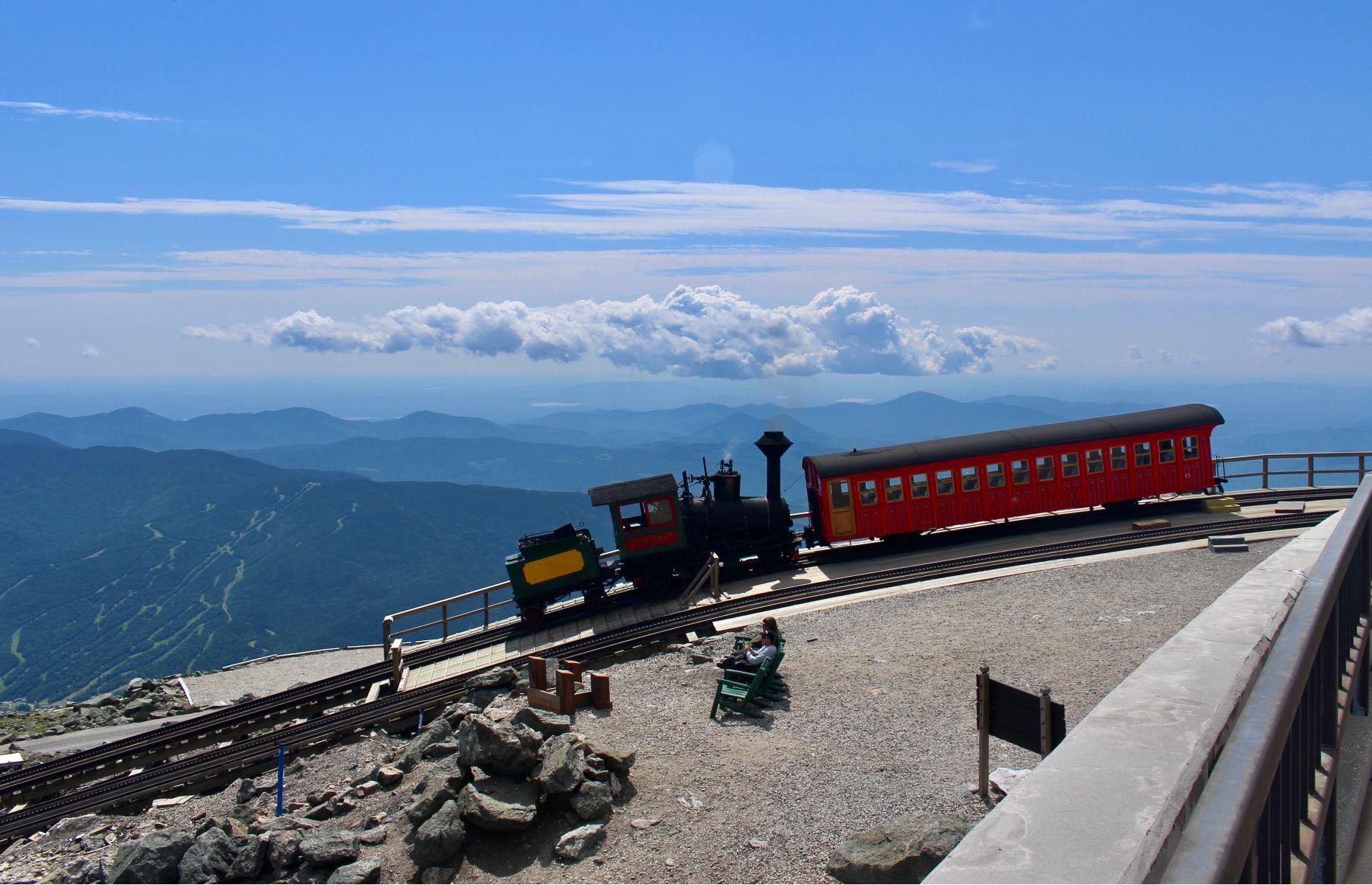
New Hampshire: Mount Washington Cog Railway
The world's first mountain-climbing cog railway, this little locomotive journeys to the peak of the highest mountain in the northeastern United States. Rising above Bretton Woods and New Hampshire's White Mountains, the National Historic Engineering Landmark operates three-hour round-trips daily from May to October.
If you’re lucky enough to dodge the mountain's notorious weather (it can snow on Mount Washington even in summer), the 360-degree views from the summit can extend all the way to the Atlantic Ocean.
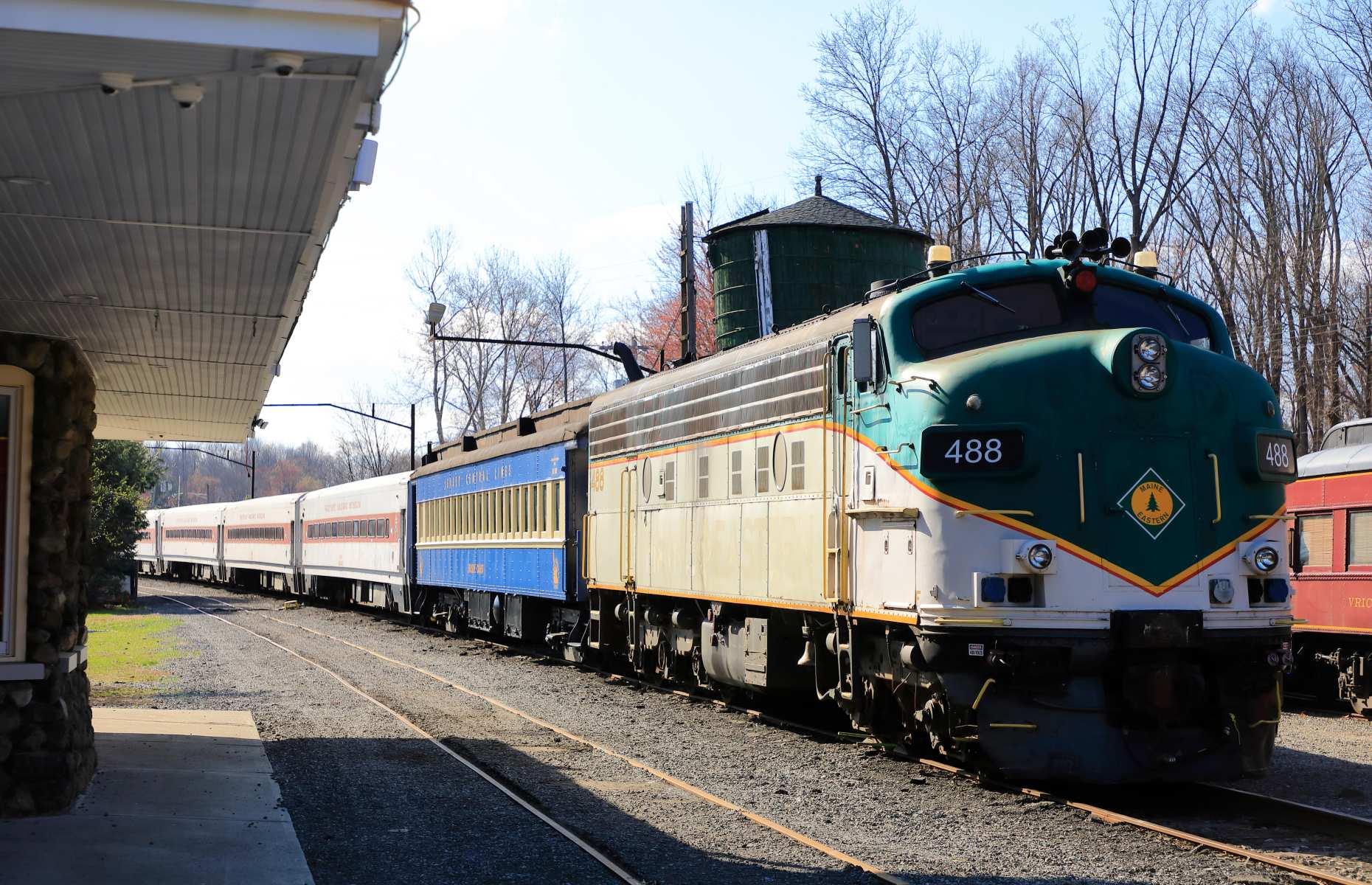
New Jersey: Whippany Railway Museum Excursions
An excursion from Whippany Railway Museum starts with a woman dressed all in white welcoming you onto restored vintage carriages. She is a representation of Phoebe Snow, a fictional character who appeared in adverts for the Lackawanna Railroad at the beginning of the 20th century.
Over the course of 45 minutes, you'll follow the route of the historic Whippanong Trail, over a high steel bridge and past all that remains of Lake Passaic, an ex-glacial lake where swamp-dwelling wildlife now roams. Trips run on select spring, summer, and fall days.
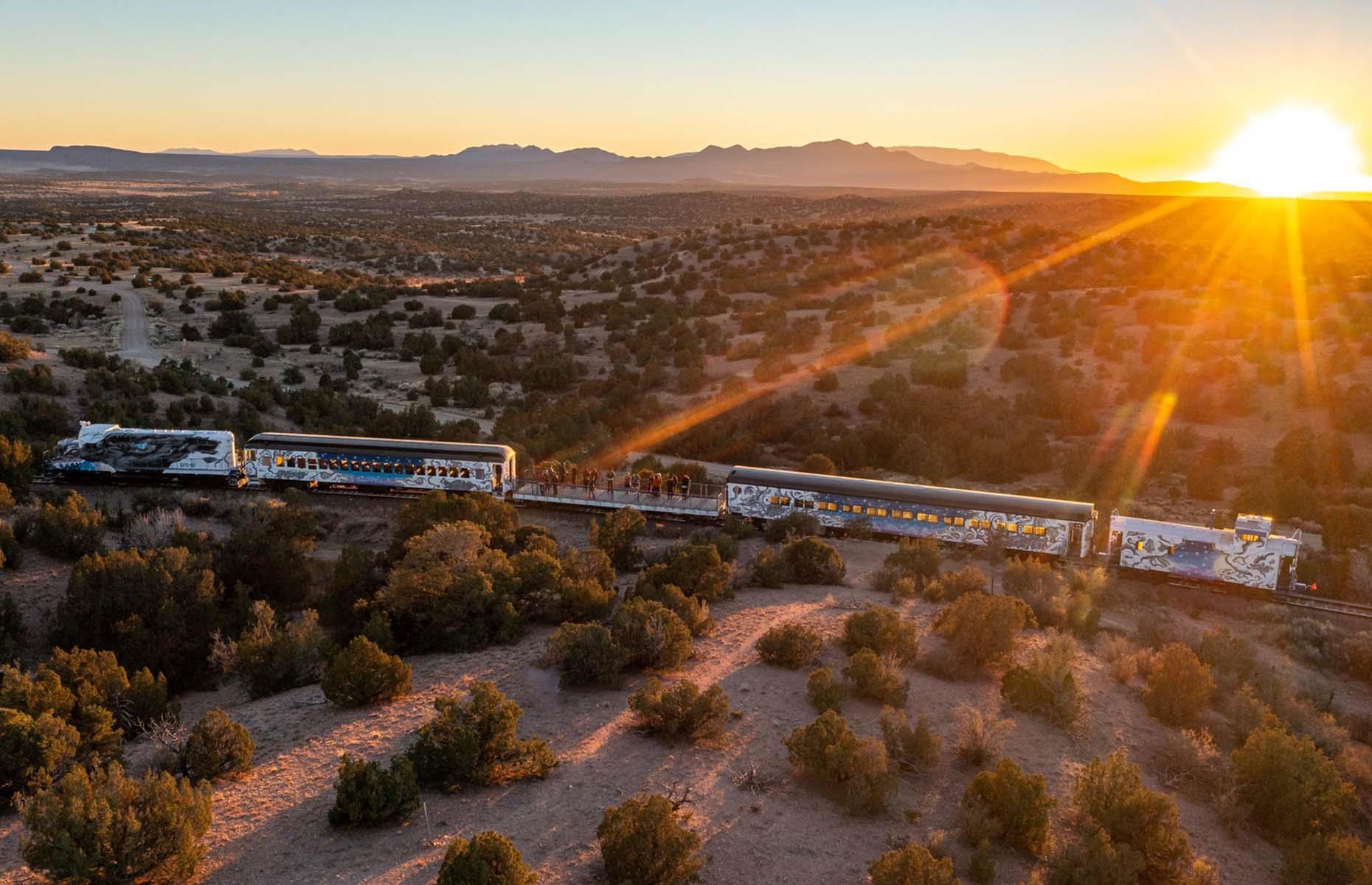
New Mexico: Sky Railway
Passengers on New Mexico’s Sky Railway are walking in the footsteps of Hollywood icons Judy Garland and Clark Gable by riding the heritage line. For over 140 years, these tracks have swept travelers across the amber and olive-green landscapes between Santa Fe and Lamy.
There are a few different ways to enjoy the round-trip journey – the Stargazer experience unlocks the mysteries of the night sky above the Galisteo Basin, while the Sunset Serenade sets the coming of dusk to a soundtrack of live music.
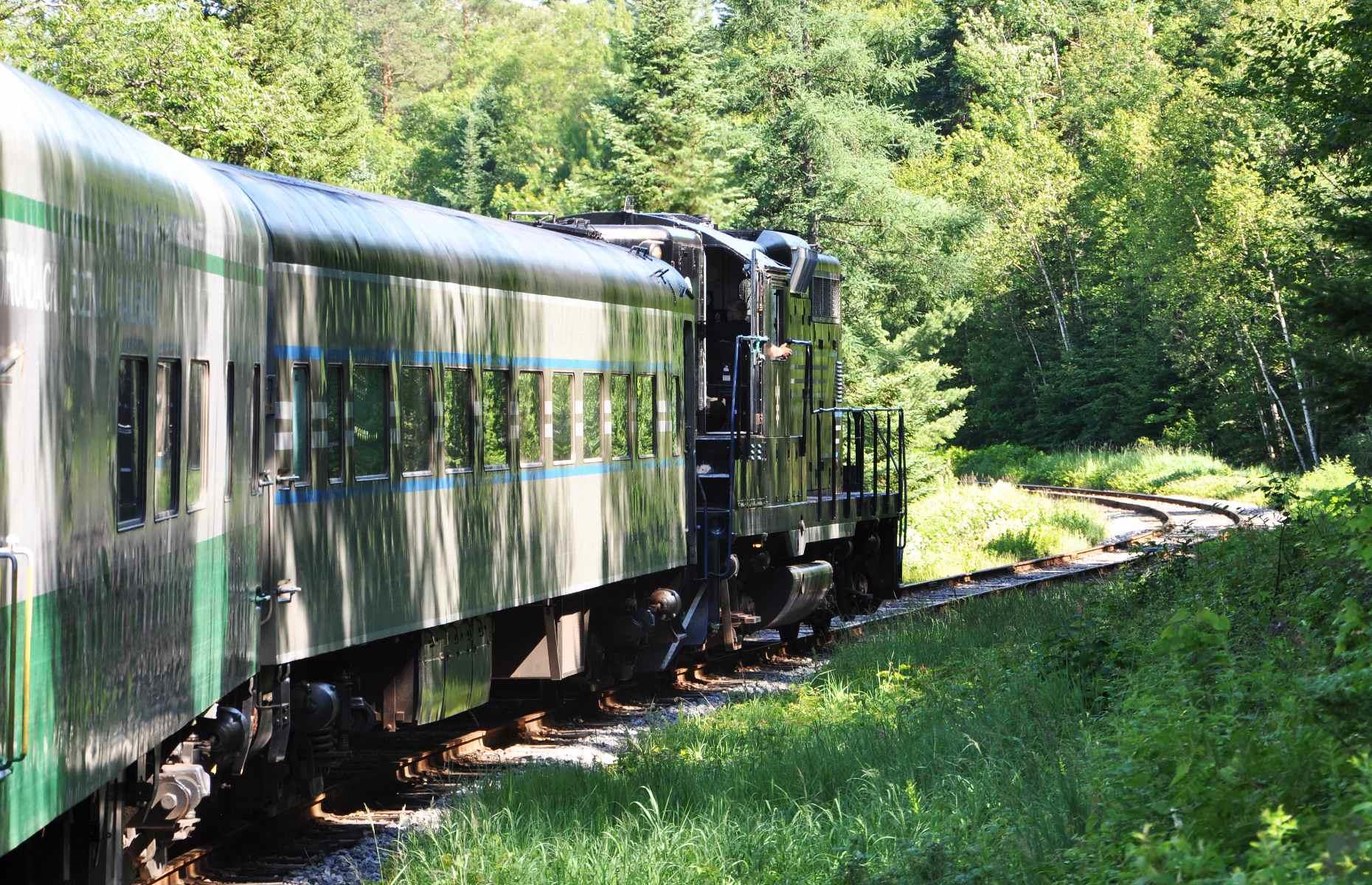
New York: The Adirondack
After a three-year hiatus, Amtrak’s much-loved Adirondack service returned to the rails in the spring of 2023. In 10 hours, the route connects New York City to Montreal in Canada, but for the vast majority of the journey upstate New York takes center stage.
The train rolls out of NYC’s Moynihan Train Hall and into the winelands of the Hudson River Valley, passing through serene Saratoga Springs and the Adirondack Mountains. It’s not hard to see why it's often ranked as one of the world’s top scenic train rides, especially when the fall colors catch fire.
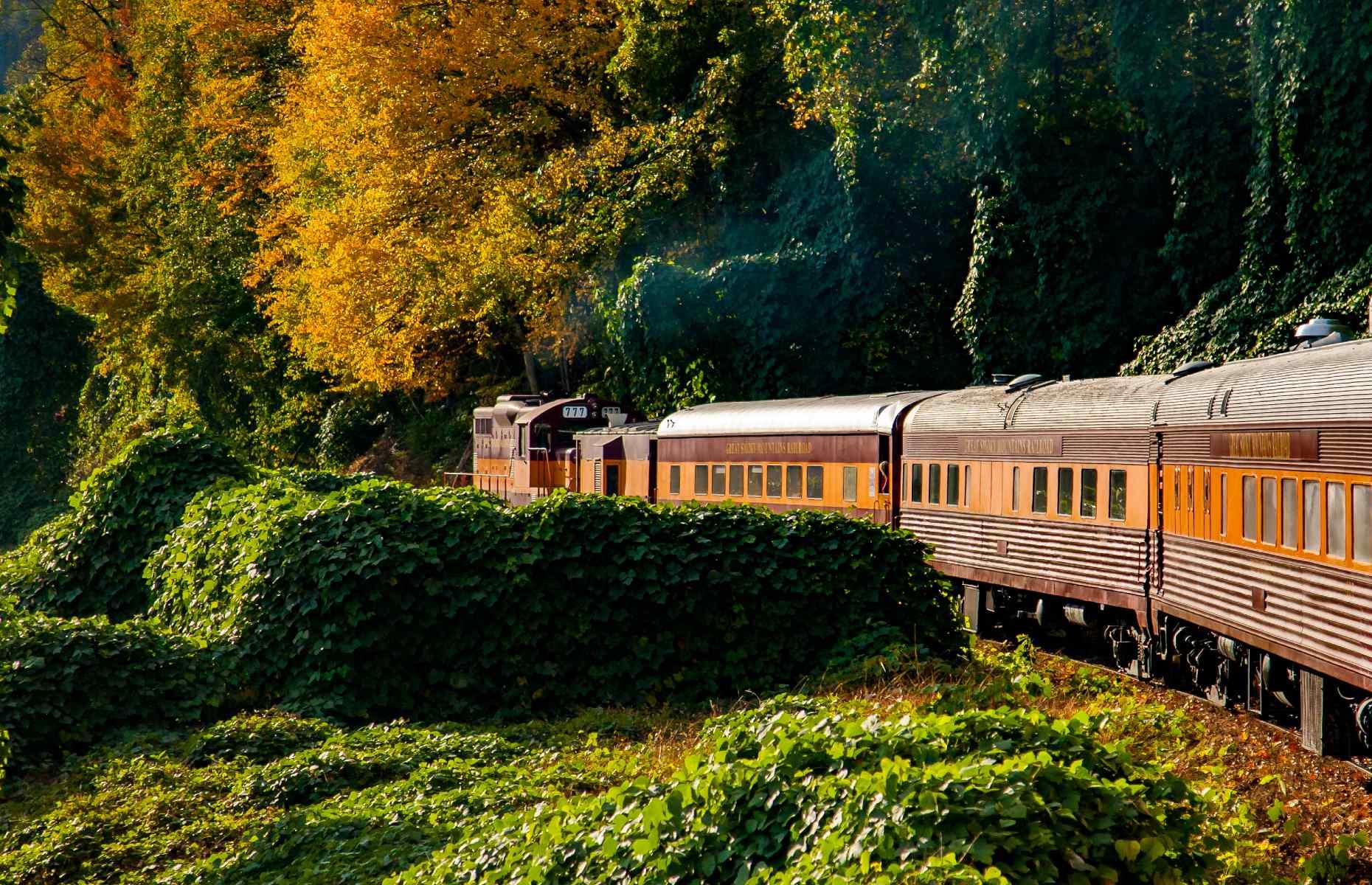
North Carolina: Great Smoky Mountains Railroad
Spanning 53 miles (85km) of track, some of which dates back to the late 19th century, the Great Smoky Mountains Railroad runs round trips from Bryson City that traverse secluded patches of the Great Smoky Mountains National Park that are hard to reach in other ways. The line’s most scenic excursion transports passengers across the rusting trellis bridge over Fontana Lake and into the heart of the Nantahala Gorge.
Book a ticket in the open-air gondola for uninterrupted views.

North Dakota: Fort Lincoln Trolley
As one of the most sparsely populated and rural states in America, North Dakota doesn’t have too much to contribute when it comes to scenic train journeys. Amtrak’s Empire Builder does pass through, but only one company operates tourist train excursions – and those are currently on pause.
The Fort Lincoln Trolley has historically run from Mandan to Fort Abraham Lincoln State Park (pictured), ferrying passengers in a replica streetcar. But in mid-2023, the owners of the trolley announced their retirement, and it’s not yet known if successors have been found.
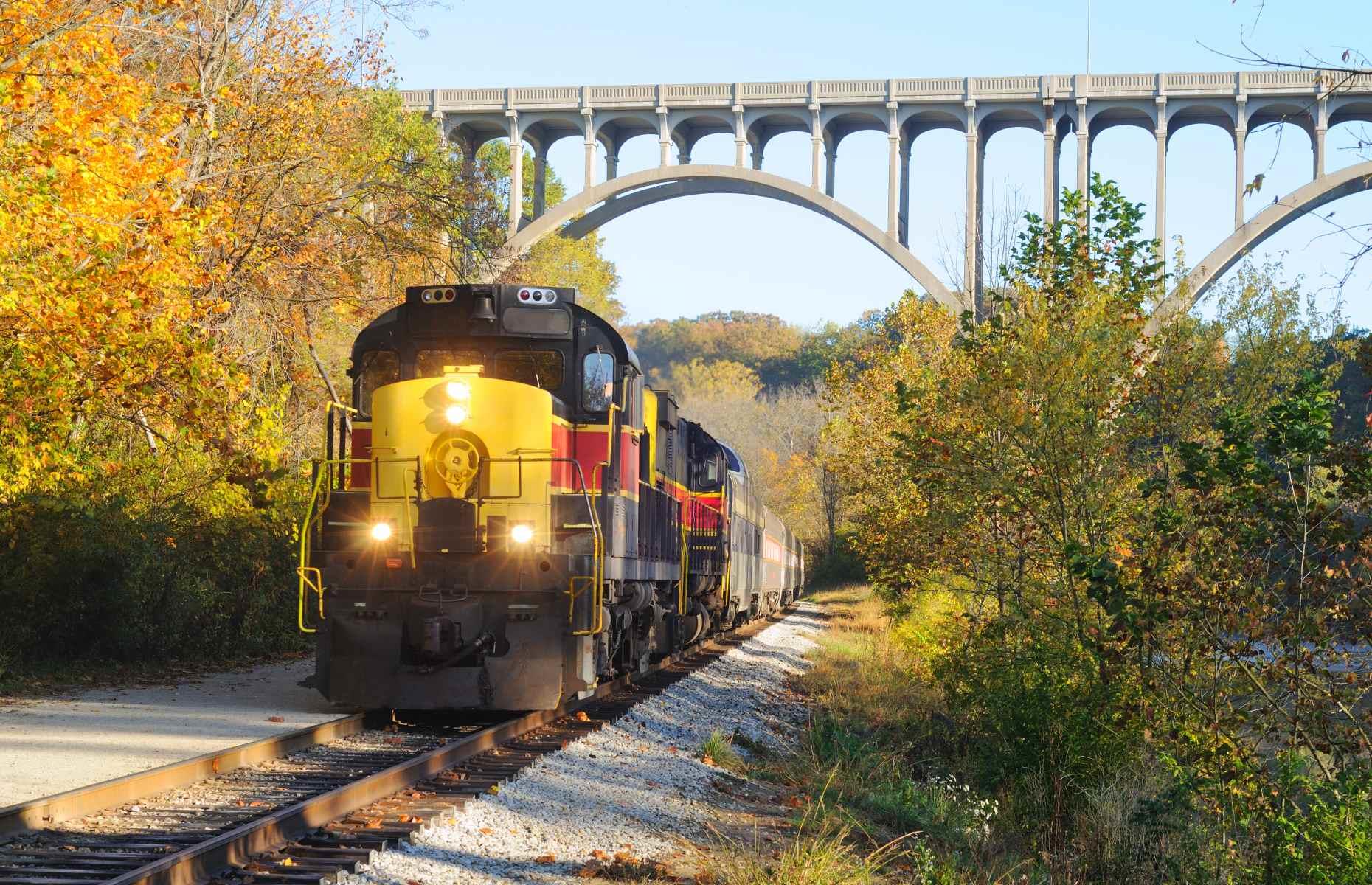
Ohio: Cuyahoga Valley Scenic Railroad
The Cuyahoga River nourishes dense forests, billowing hills and vast farmlands, and you can see them all in Cuyahoga Valley National Park. There's no better way to tour this green haven than a heritage train carriage, and the Cuyahoga Valley Scenic Railroad hosts rail excursions into the park ranging from immersive murder mysteries to boozy cruises.
Keep it traditional with the two-hour National Park Scenic Excursion, operating between January and April (yes, even in the snow). A seat in Upper Dome class promises sublime panoramic views.
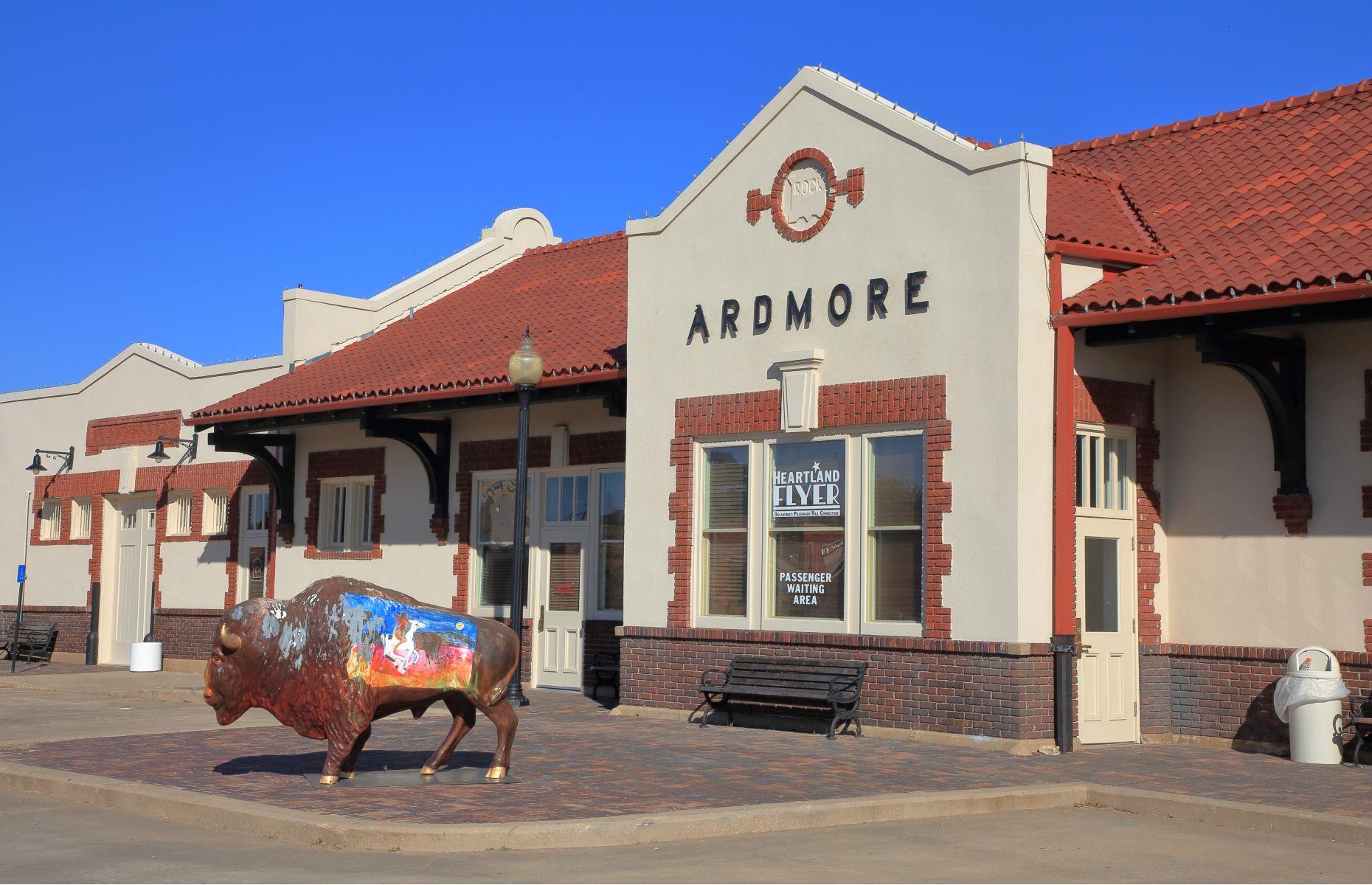
Oklahoma: Heartland Flyer
It might not be the longest journey on Amtrak’s route map, but the daily Heartland Flyer from Fort Worth in Texas to Oklahoma City isn’t short on impact. For most of its just-over-four-hour dash, the train slips through the Sooner State’s cities and countryside, running the gauntlet of 'Tornado Alley' and passing through lands rich with Native American history.
Summer is the best time of year to take the northbound service, which offers superb sunsets. Ardmore (pictured) is one of five Oklahoma stations on the line.
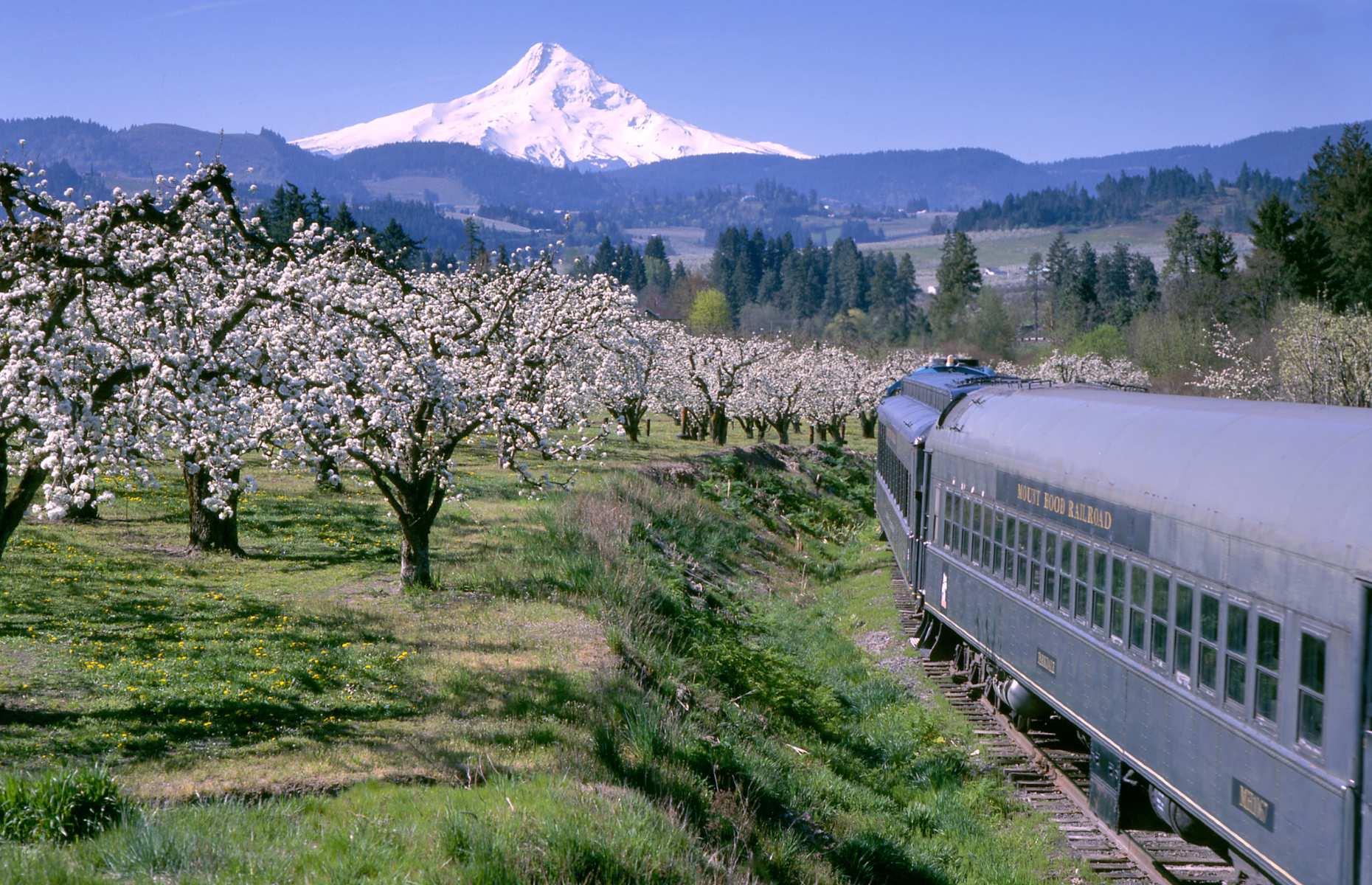
Oregon: Mount Hood Railroad
The snow-capped peak, the fluffy tree blossom, the romance of train travel – it could barely be a more inviting scene. Riding the Mount Hood Railroad is a bucket-list experience, starring Oregon's highest point (an active volcano) and the striking valleys of the Columbia River Gorge.
Trips are laid on throughout the year, including special excursions for Christmas, Easter, and Halloween, swinging through woodlands, vineyards, and orchards with Mount Hood and Mount Adams looming above. Hold onto your hat as the train navigates one of only five switchbacks remaining in the US.
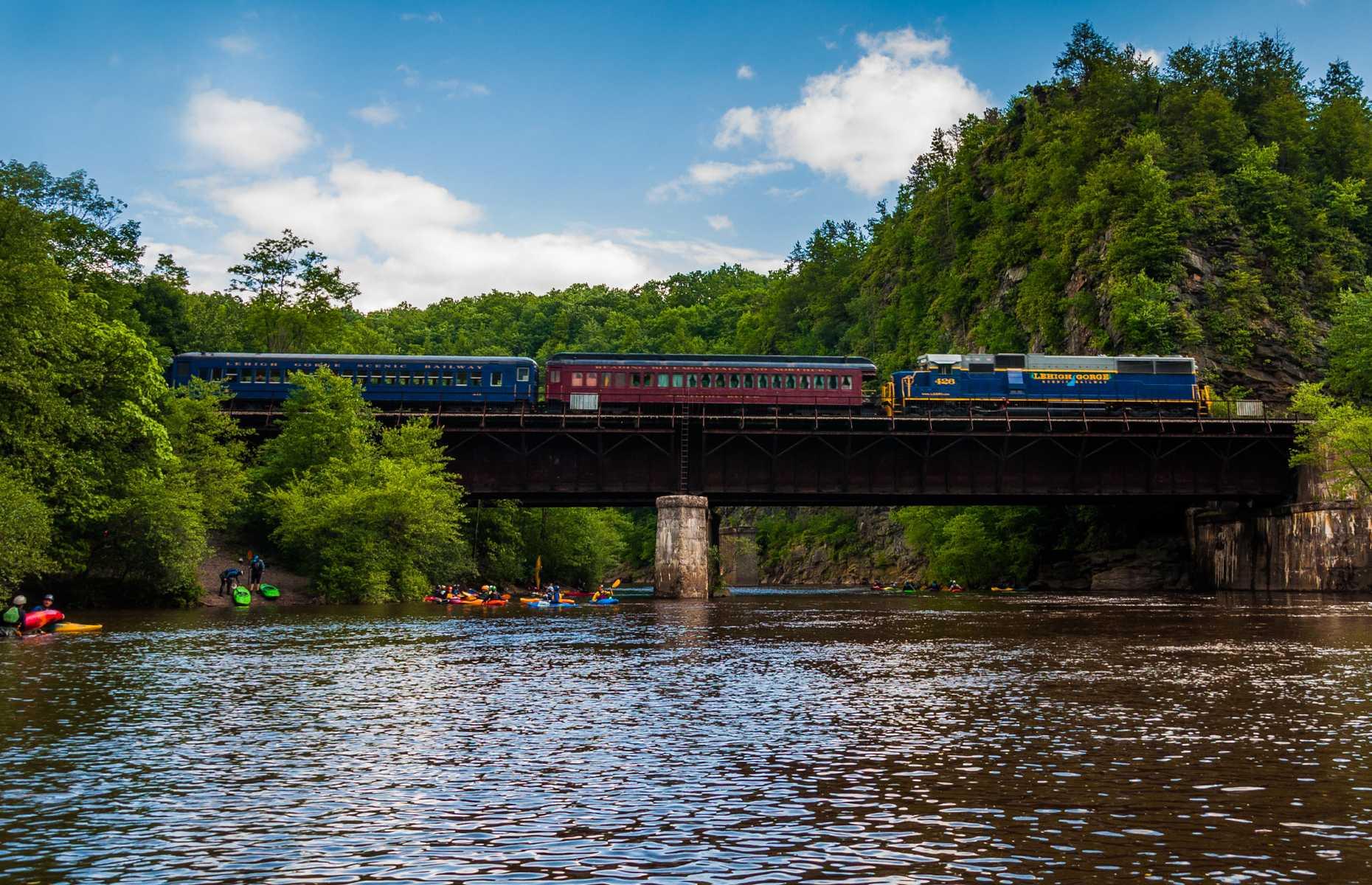
Pennsylvania: Lehigh Gorge Scenic Railway
This tourist train operates out of the historic town of Jim Thorpe, which has been called the Switzerland of America in its time. As its name might suggest, the Lehigh Gorge Scenic Railway is swaddled by towering cliffs, mountains, and abundant wildlife on its forested run to Old Penn Haven.
Featuring passenger cars that have been in service since as early as 1917, the train offers open-air, vista-dome, and standard coach seating on its narrated 70-minute round-trip journeys.
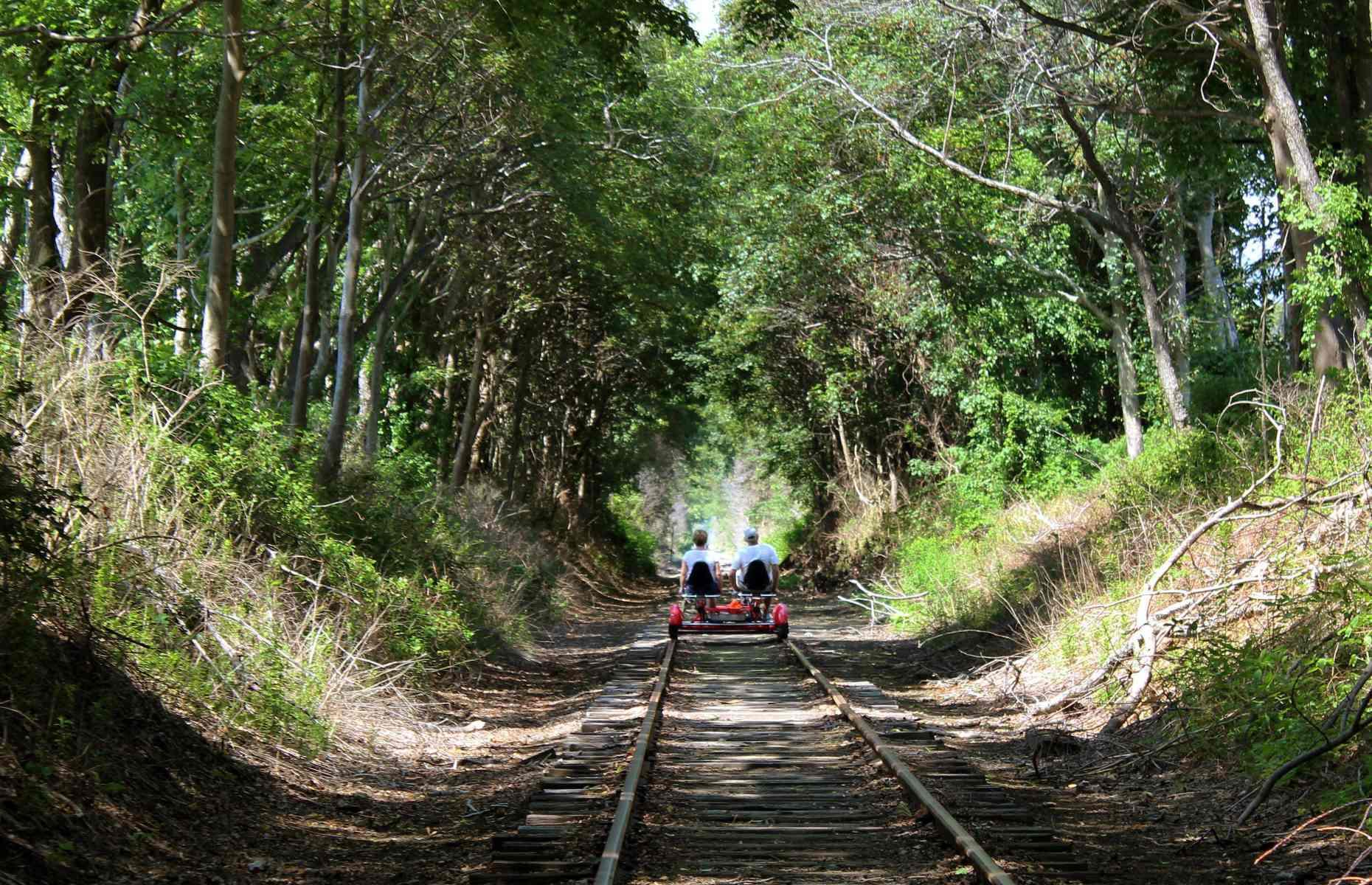
Rhode Island: Newport and Narragansett Bay Railroad
Rhode Island might be known as the Ocean State, but you can leave your boat in the dock for this scenic voyage. The Newport and Narragansett Bay Railroad is a fantastic way to explore America's smallest state overland, though the water is never too far away.
Tracing the contours of Narragansett Bay, passengers can opt to ride the rails the unconventional way – on pedal-powered Rail Explorers (pictured) – or aboard the Grand Bellevue, an opulent dinner train guaranteed to only leave you hungry for another trip.
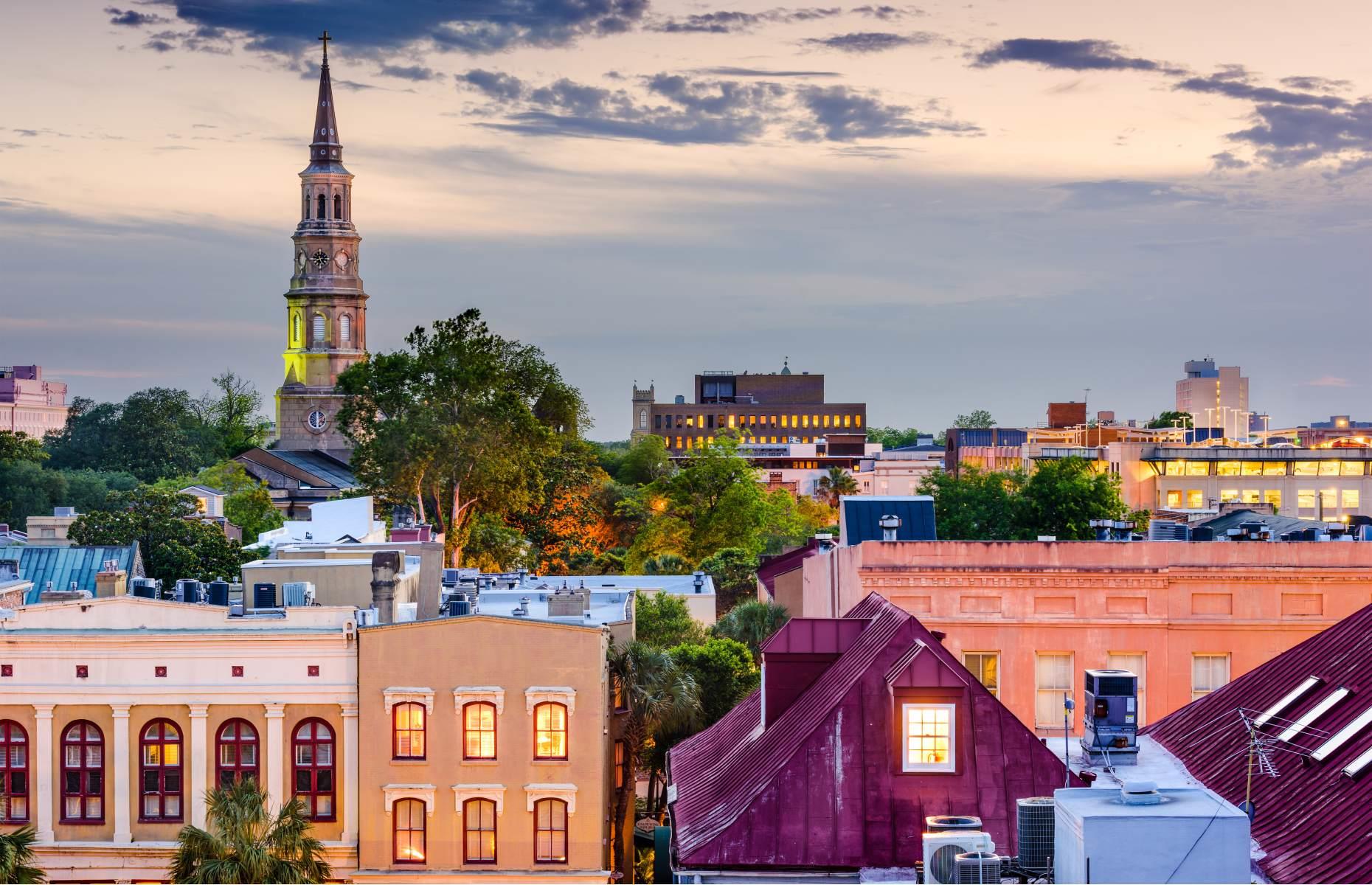
South Carolina: Palmetto
Amtrak’s Palmetto train out of NYC is the cropped variant of the Silver Star and Silver Meteor routes that continue south to Florida through Savannah, Georgia. These only slip through South Carolina in the wee hours, while the Palmetto catches the state famed for its sabal palm trees at much more sociable times.
Passengers can watch as it sails through Charleston (pictured) and Florence, the closest rail station to Myrtle Beach. You’ll rattle through urban sprawls and country parks, past lakes and quaint communities, all without moving a muscle.
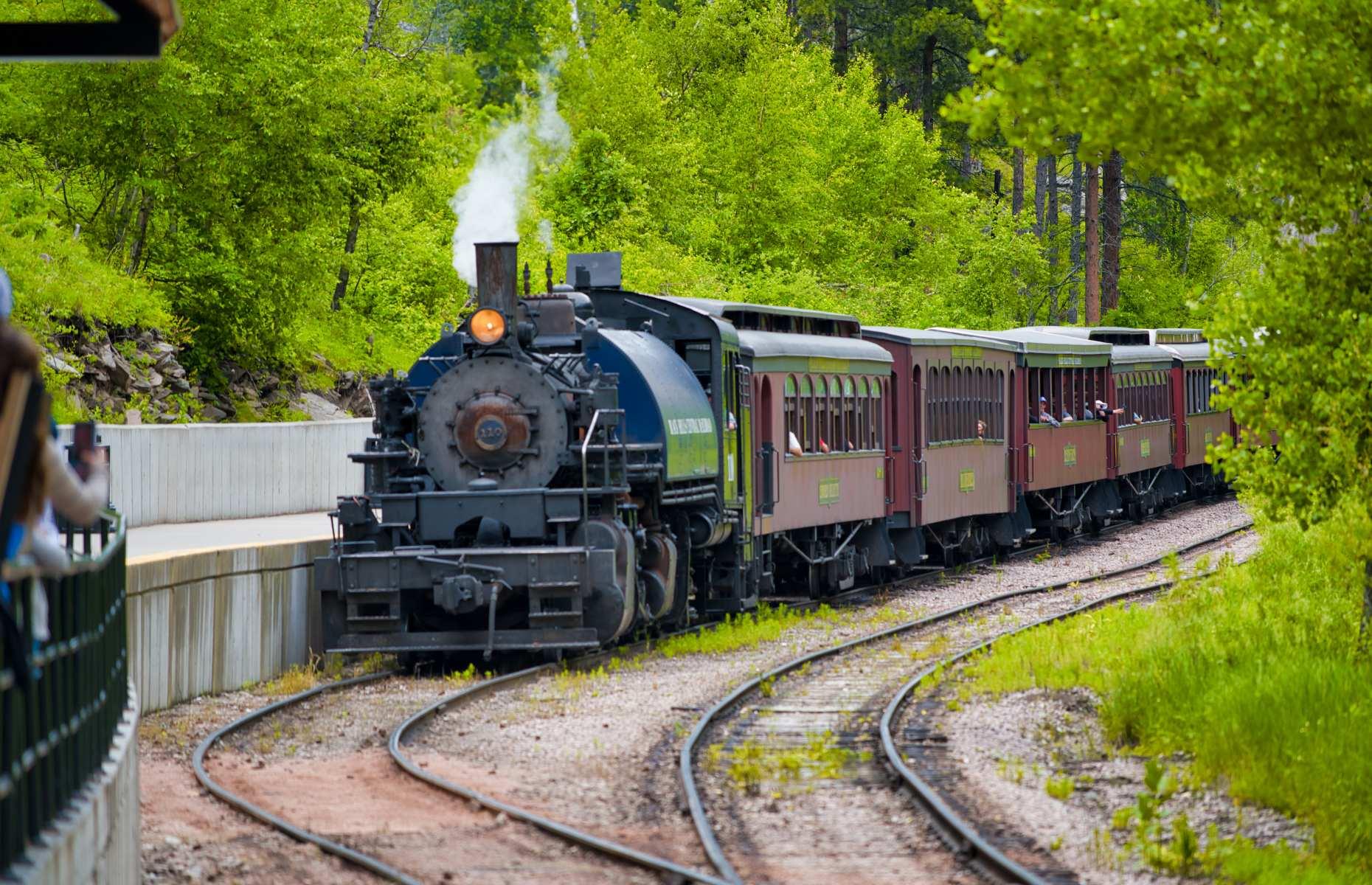
South Dakota: Black Hills Central Railroad
The Mount Rushmore State’s only major excursion line, the Black Hills Central Railroad operates on restored, vintage rolling stock. These historic tracks are credited with the emergence of modern South Dakota, having carried settlers and town planners over the plains and into the mountains, for better or worse.
Now they carry the 1880 Train, which provides passengers with a stunning introduction to the dramatic landscapes of these ancient hills. Journeys last for a little over two hours.
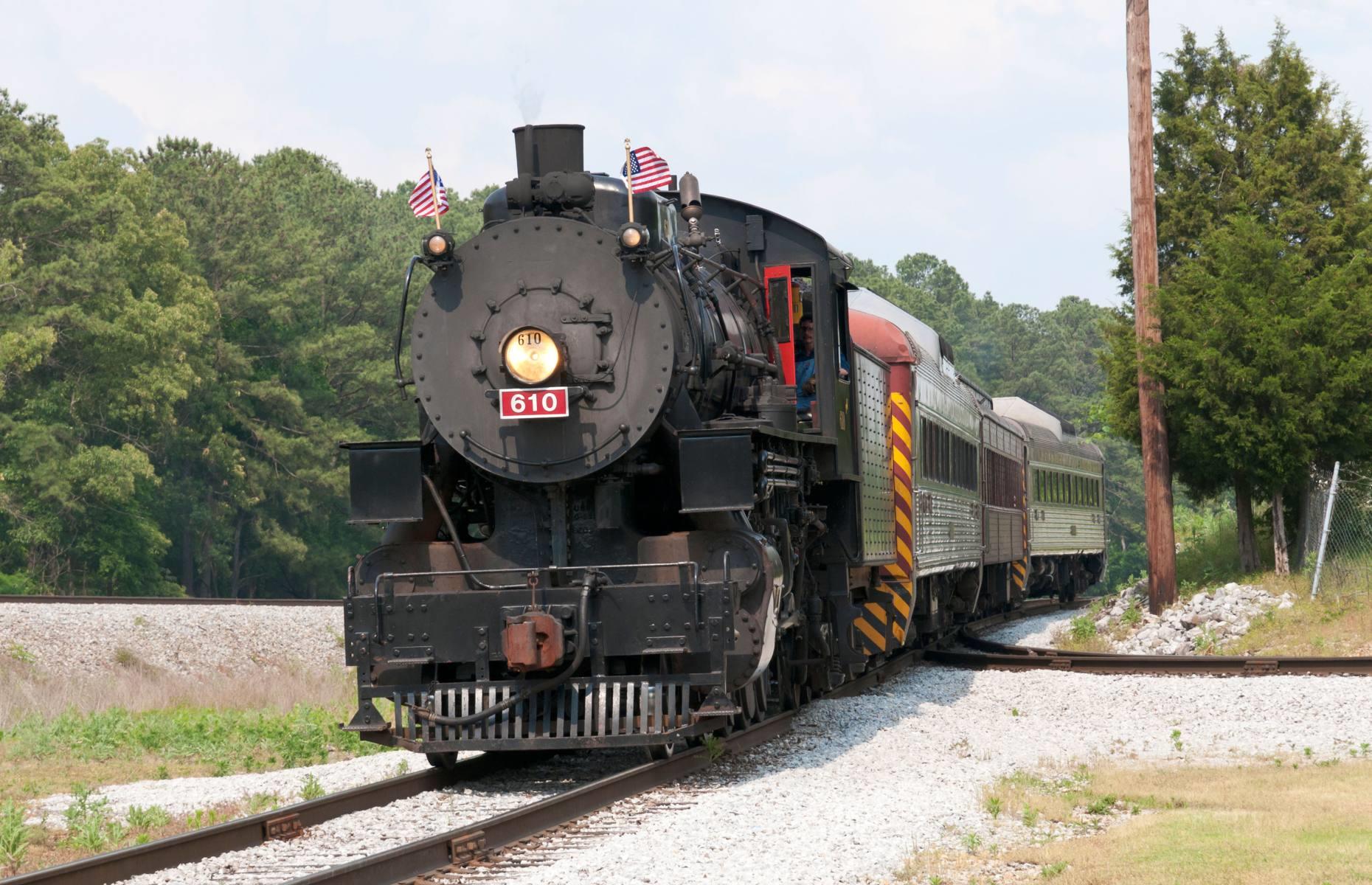
Tennessee: Tennessee Valley Railroad
There are a few different excursions on the Tennessee Valley Railroad to choose from, but we love the 50-mile round-trip on the Hiwassee Loop. Here, the line’s tracks tie themselves in knots as they crisscross each other on the train’s journey up the mountain near Farner.
Unlike many heritage rail excursions, there’s no layover on this route, so you can enjoy five hours of unbroken, nostalgic travel.
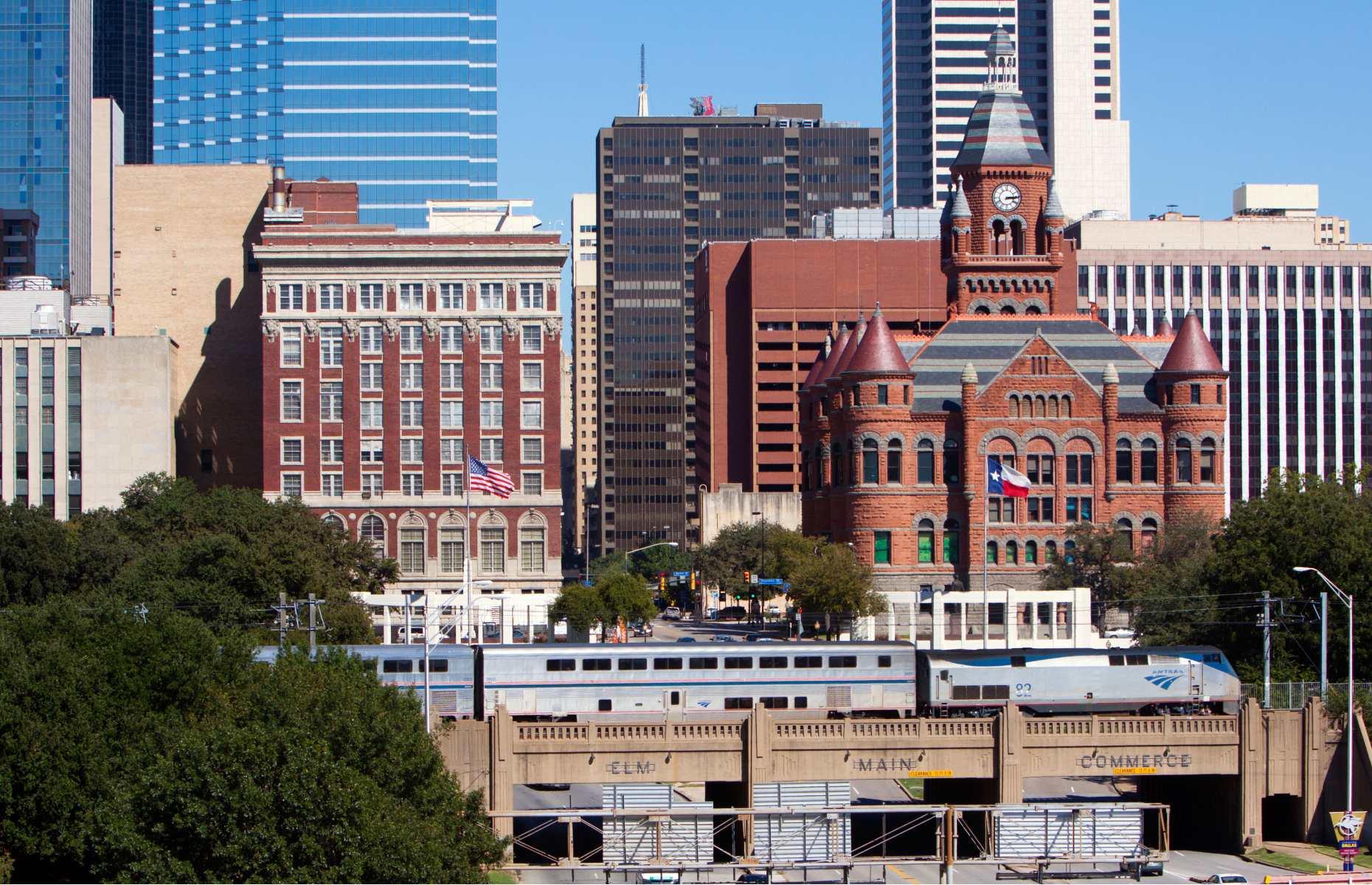
Texas: Texas Eagle
From end to end, the longest iteration of Amtrak's Texas Eagle route takes a whopping 65 hours to complete, making it America's longest rail journey. The daily service runs just from Chicago to San Antonio, but three times a week it continues on to Los Angeles.
You'll likely snooze through much of Arizona, but the Texas leg is definitely worth staying awake for, as around half the train's journey takes place in the Lone Star State. Expect pine woods, seemingly endless fields, cosmopolitan cities, pretty small towns, and peaceful rivers on your passage.
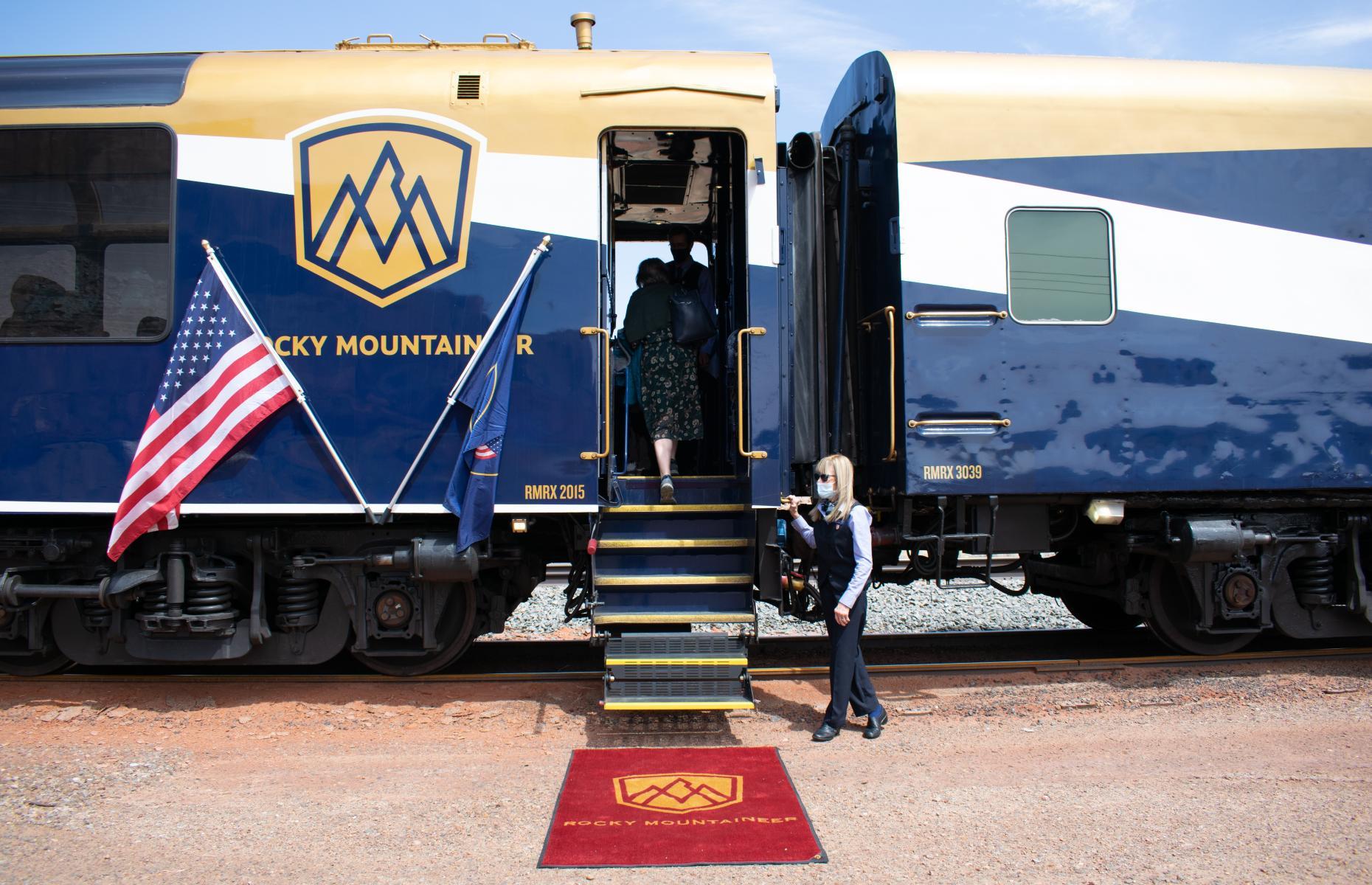
Utah: Rocky Mountaineer
You get two states for the price of one on the Rocky Mountaineer’s Rockies to the Red Rocks route, a dramatic two-day journey between Moab, Utah, and Denver, Colorado that includes an overnight stay in Glenwood Springs. While most of the run coasts through Colorado, Utah’s rust-red scenery is impossible to overlook.
After crossing the state line, you’ll see the shadow of Mount Peale rise above the valley, often sprinkled with snow up to early summer, contrasting with the warm scarlet sandstone of Moab and Arches National Park.
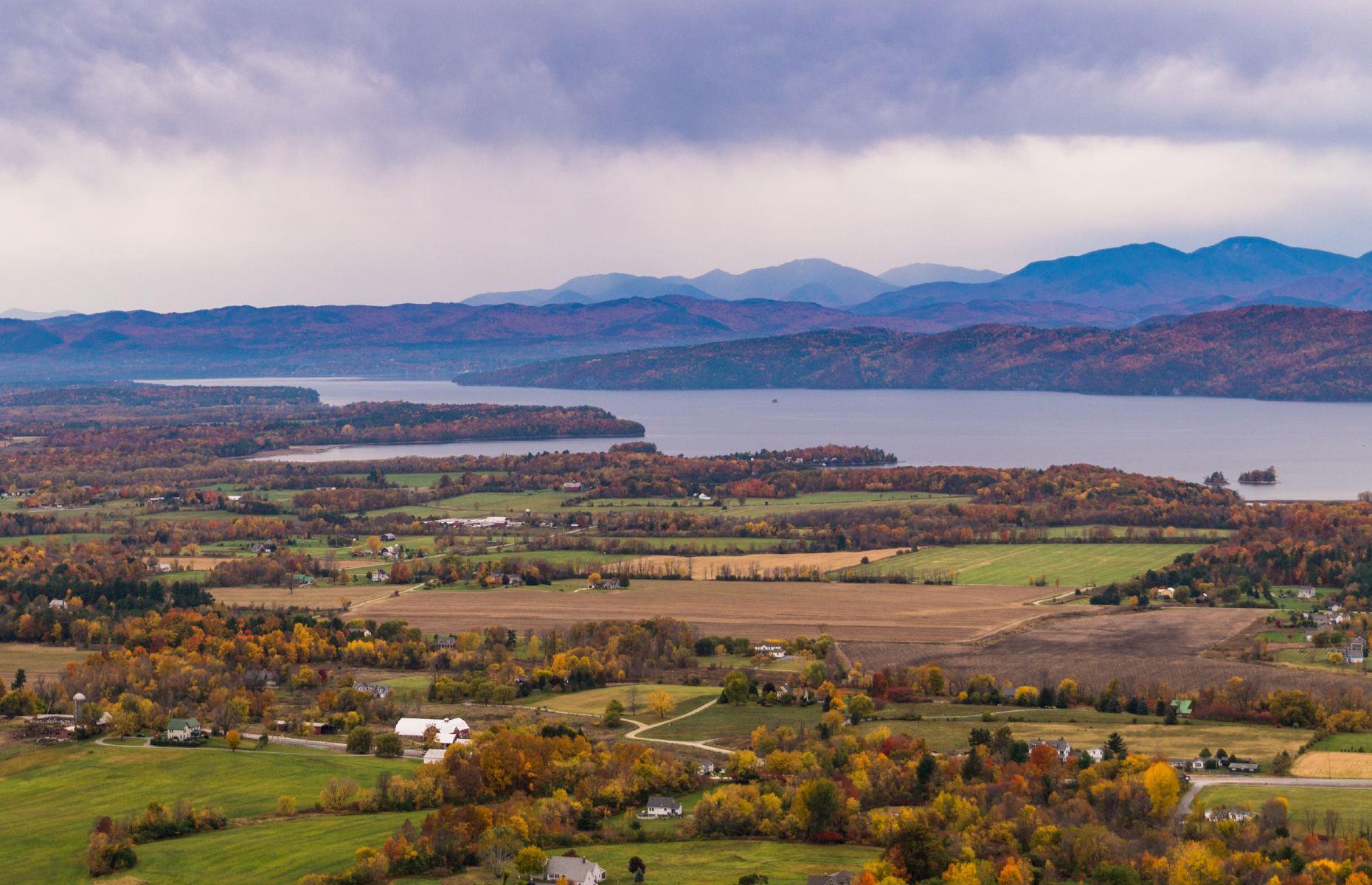
Vermont: Champlain Valley Dinner Train
From June through October, the Champlain Valley Dinner Train serves up an indulgent three-course meal with a side order of Green Mountain State splendor. From the window of your 1930s dining car – Vermont’s fastest-moving restaurant – gaze out on the undulating landscapes of green, purple and gold while feasting on delicious dishes that evolve with the seasons.
The decadent journey operates on weekends, departing from and returning to Burlington on the eastern shores of Lake Champlain, where mountains meet Vermont’s most populous metropolis.
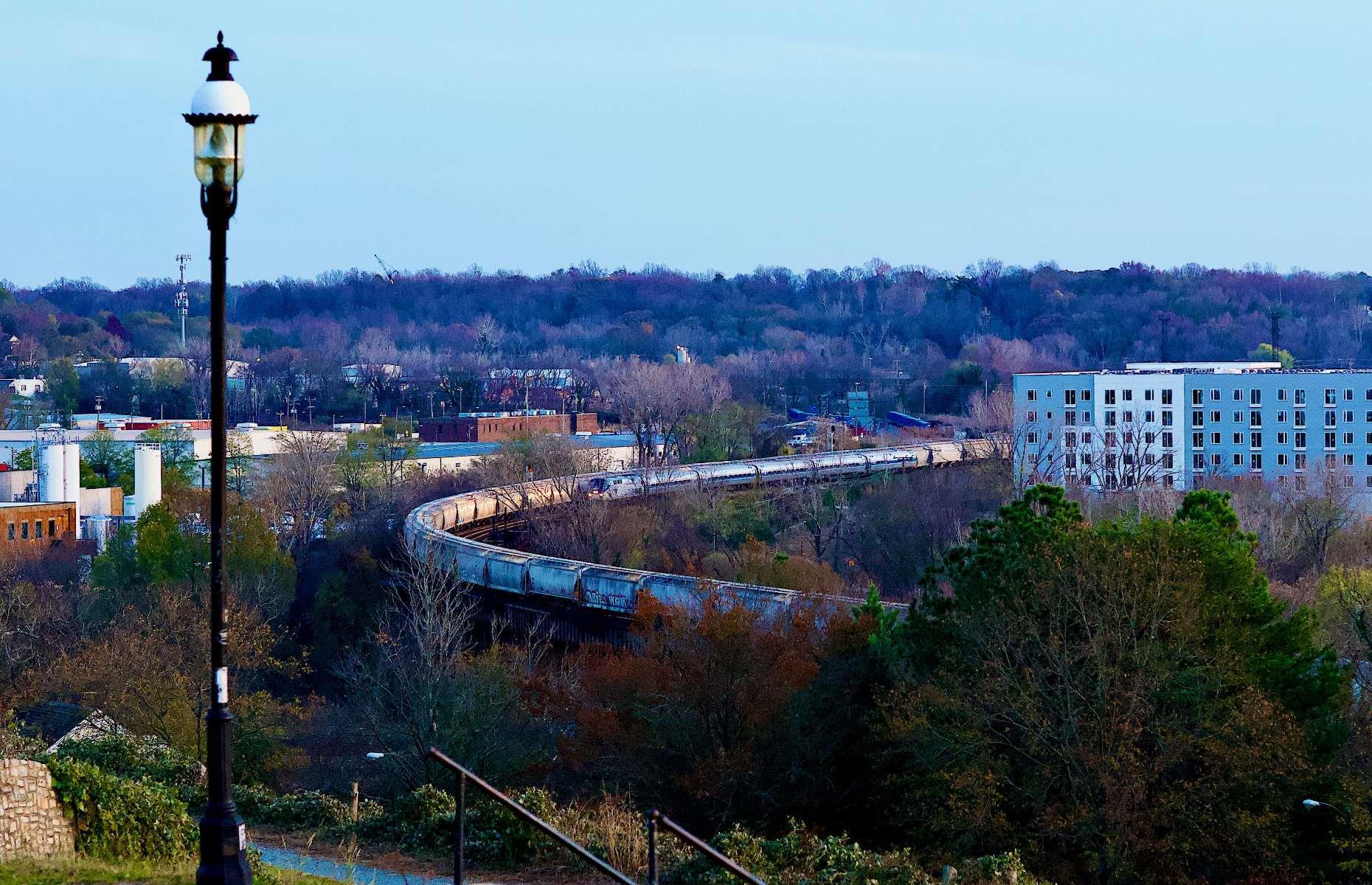
Virginia: Northeast Regional
Amtrak’s Northeast Regional is not just a fast and convenient commuter service – it’s also one of the best ways to explore the celebrated state that gave America four of its first five presidents. There are various daily routes of the Northeast Regional that serve Virginia, connecting state capital Richmond to the coastal city of Newport News and Alexandria, the latter of which stands on the western bank of the Potomac River.
You can also use the train to visit Fredericksburg, as well as the historic triangle of Williamsburg, Jamestown and Yorktown.
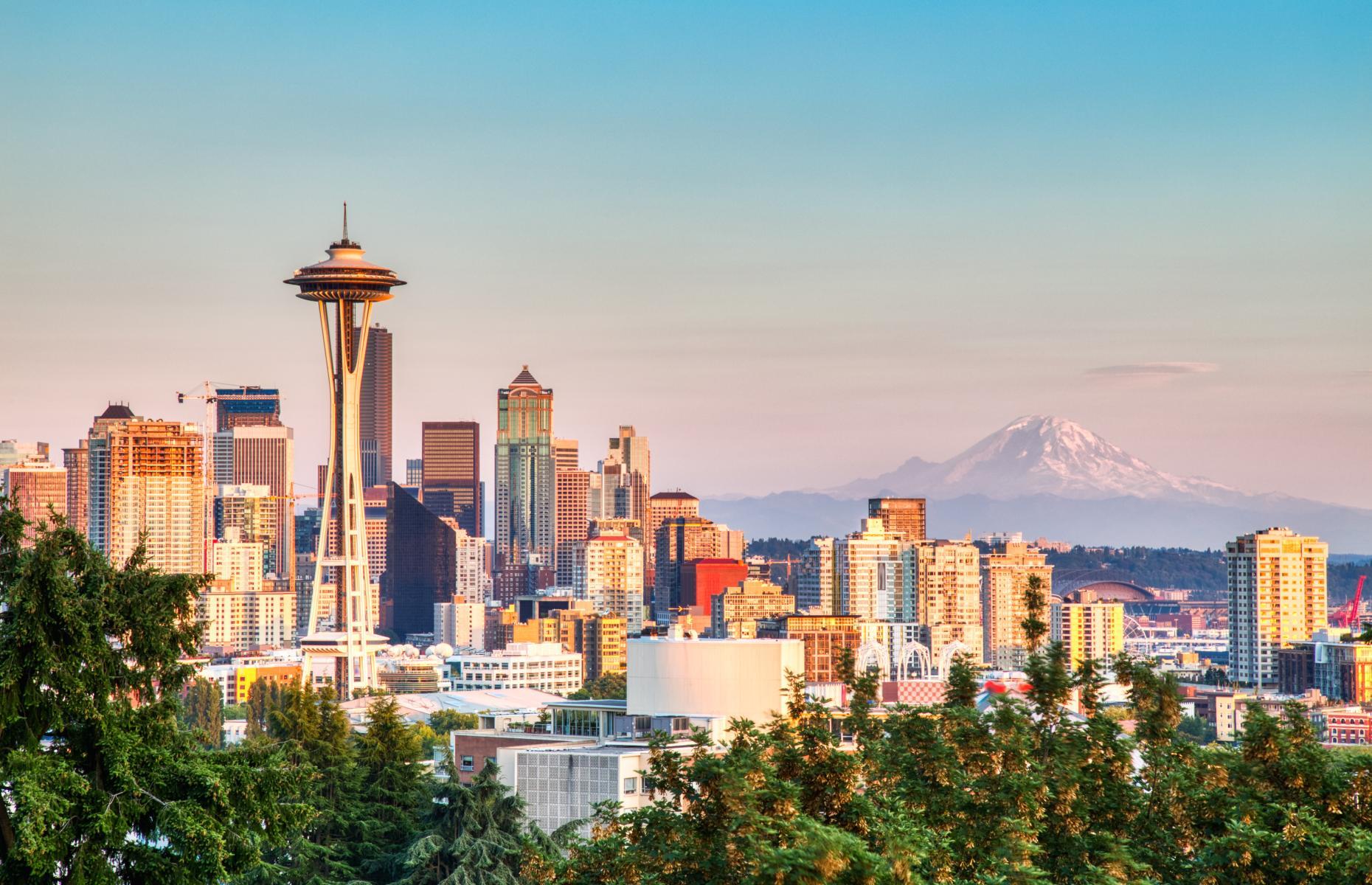
Washington: Amtrak Cascades
While the Coast Starlight train from Seattle to Los Angeles might get all the fanfare for being one of North America’s greatest train journeys, it’s actually the Amtrak Cascades service that gives you the best span of Washington State. The Washington leg of this route extends from Vancouver in the south (not to be confused with the Canadian city where the train also happens to terminate) to Bellingham in the north, following the shores of Puget Sound out of Seattle (pictured) and into the wilds of the Pacific Northwest.
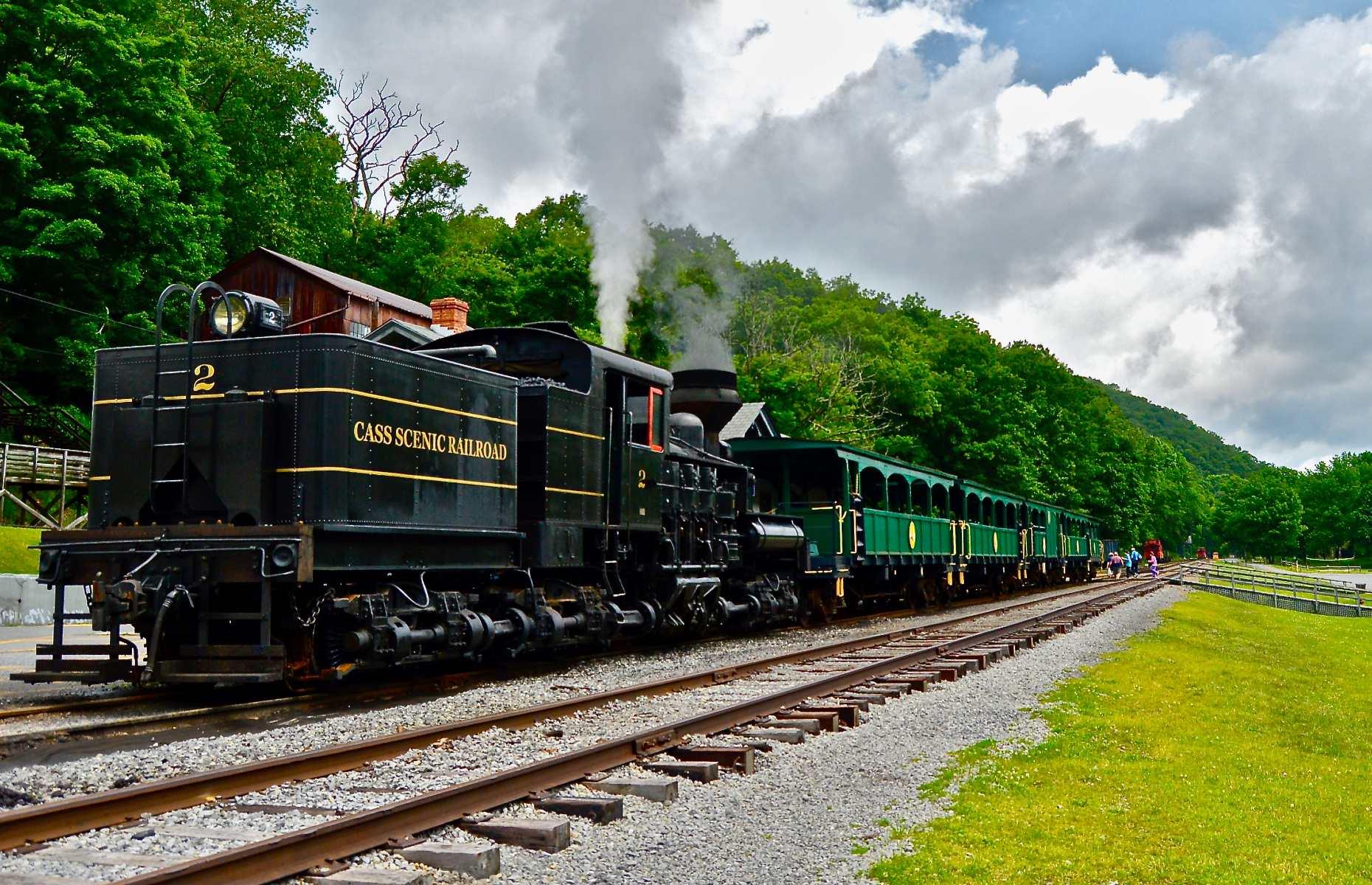
West Virginia: Cass Scenic Railroad
Located in West Virginia's Pocahontas County, Cass Scenic Railroad State Park is unusual among America's roster of state parks, as it was created to preserve and promote a heritage train line. Founded to serve the old lumber company town of Cass, the 11-mile railroad now conveys passengers out of the Greenbrier Valley and up into the mountains on a characterful steam locomotive.
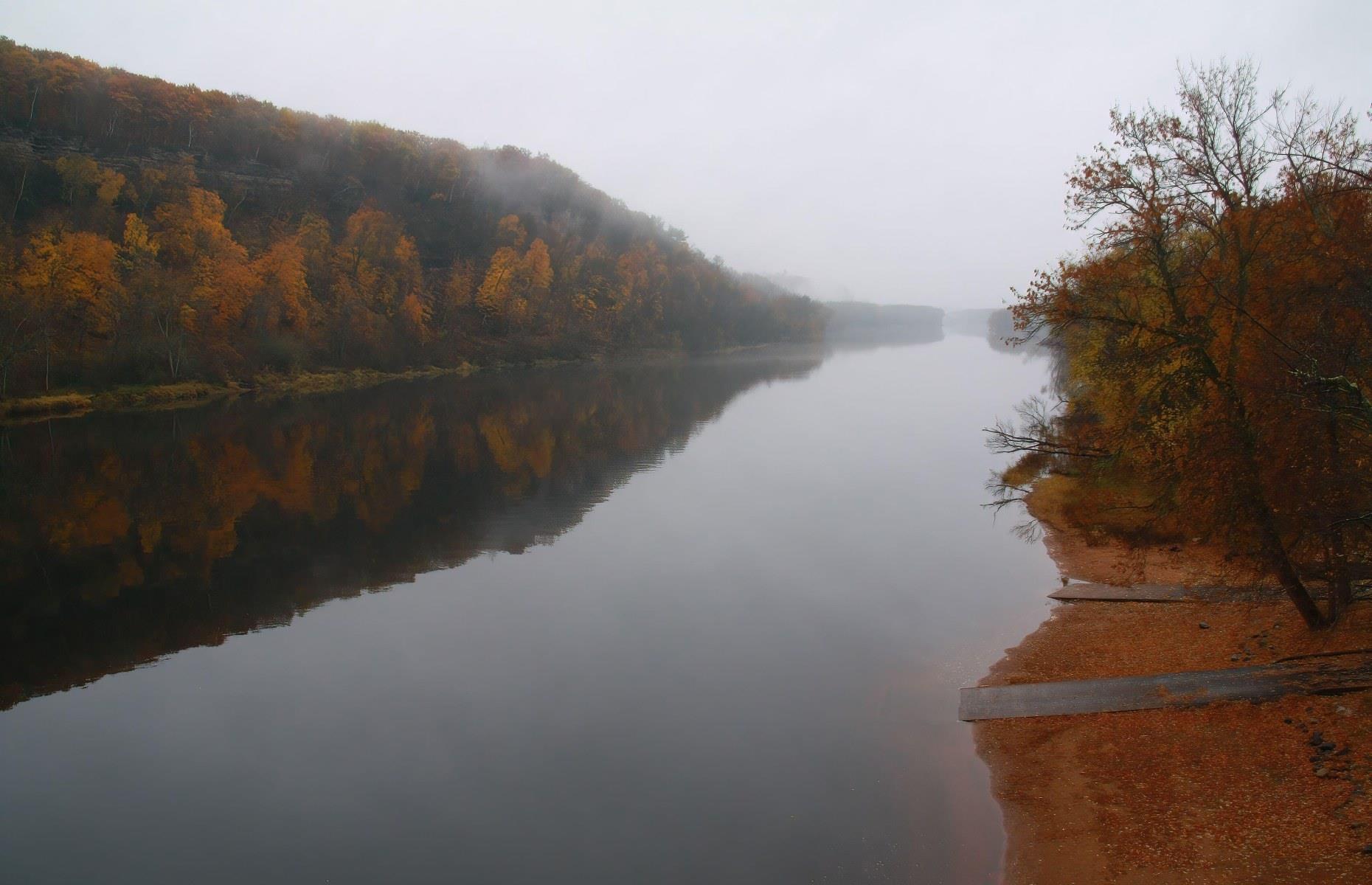
Wisconsin: Osceola and St Croix Valley Railway
Managed by the Minnesota Transportation Museum, the Osceola and St Croix Valley Railway operates seasonal tourist rail journeys through the scenic St Croix River Valley on a vintage locomotive. The route sweeps through gorgeous landscapes marked by waterfalls and blonde sandstone bluffs on a 90-minute round-trip that toes the Minnesota border.
Fall is a particularly wonderful time of year to ride this train; the riverside foliage turns orange and ocher, while birds and animals scramble among the fallen leaves.

Wyoming: Jackson Hole Aerial Tram
With not a single Amtrak service or tourist train ride to speak of, it seems the iron horse is no match for a real one in the Cowboy State. But trains haven’t always been absent from Wyoming, and attractions like the Union Pacific Roundhouse and the Cheyenne Depot Museum document some of the state’s rail heritage.
And if you’re still keen to experience a scenic journey here, riding the Jackson Hole Aerial Tram to the top of Rendezvous Mountain is the next best thing.
Now take a look at America's most eccentric attractions
More for You
The 25 most surprising movie cameos
Donald Trump Stung by Double Polling Blow
19 Things People Treat As Safe That Actually Are Pretty Dangerous
Map reveals best places to live in the US if nuclear war breaks out
Elon Musk fires entire Tesla charging team
You could get in big trouble for throwing these items in trash
The 11 Smells That Squirrels and Chipmunks Hate
18 Things That Will Happen if 70 Becomes the New Retirement Age in the US
We Ordered 7 Fast-Food Breakfast Sandwiches to Find the Best One
18 ‘Normal’ Things From the ’80s and ’90s That Are Considered Luxuries Now
20 movies where everyone dies
Charles Barkley wants LeBron James to retire sooner than later: "I saw Michael Jordan with the Wizards, and it wasn't pretty"
Kristen Stewart makes vampire movie return opposite Oscar Isaac
What Do All the Heart Emojis Mean? A Guide To Using the Symbols of Love
A NATO country says it could join Ukraine's war with Russia if 2 conditions are met
Why do I wake up at 3 a.m. every night?
The Market Dodges Another Downfall. Everything’s Awesome.
How Much Beer You'd Have To Drink To Equal A Single Shot Of Liquor
Which Fast Food Chain Has The Best Burger?
Liam Neeson thriller proves to be huge hit on Netflix despite critics' reviews
Brightline West broke ground, now the high-speed train is on the clock for 2028 Olympics

Getting from Las Vegas to Southern California in a high-speed bullet train might sound like a thing of the future, but Brightline West is working on making it a reality.
Construction is currently under way for Brightline West, a 218-mile railway system that will connect a Los Angeles suburb to Sin City, turning a 4-hour car ride into a 2-hour high speed train ride.
The metal on the tracks won't be dry or operational until 2028, just in time for the Summer Olympic Games which are set to take place in Los Angeles then.
It took an estimated $12 billion to make this “dream” a reality, with Brightline securing $3 billion in federal funds in December and another $2.5 billion in private bonds from the U.S. Department of Transportation.
“People have been dreaming of high-speed rail in America for decades – and now, with billions of dollars of support made possible …. it’s finally happening,” Pete Buttigieg, secretary of transportation said Monday.
What is Brightline West?
Brightline West is a years-long eco-transportation project by Brightline that will connect Nevada to Southern California via a 218-mile railway system.
Fully electric and zero emission trains will make the trek, reaching speeds of 200 miles per hour.
Brightline West route and map, Rancho Cucamonga among stops
Brightline West’s high-speed rail will make plenty of stops along its 218-mile route from Las Vegas to Rancho Cucamonga. Victor Valley and Hesperia are among the stops included on the trip.
Brightline says the route, which has full environmental clearance, will run along I-15.
Wes Edens to connect other ‘city pairs’ in future
Wes Edens, Brightline’s founder, called the project “historic.”
Brightline West is set to “lay the foundation for a new industry,” even if it's long overdue.
“This is a proud moment … where we break ground on America’s first high-speed rail system … But the blueprint we’ve created with Brightline will allow us to repeat this model in other city pairs around the country.”
Brightline West is just the latest example of connecting city pairs that are too short to fly and too far to drive” across the country, with a similar project completed in 2018 to connect Florida Central and South Florida.
Contributing: James Powel

COMMENTS
Here are Operation Lifesaver's six "must-know" facts for professional photographers considering a photo shoot near the tracks: 1. Trains can't stop quickly to avoid people or vehicles on the tracks. 2. An optical illusion makes it hard to determine a train's distance from you—and its speed.
In this case, select a shutter speed of around 1/30th. Follow the train in a nice smooth motion and take the photo when you're ready. Whichever shutter speed you decide to use, it's often a good idea to slightly overexpose the photo. That way you'll get more details of the train.
3) Sit on both sides of the train. It's difficult to tell where the great scenery is going to appear. In an ideal world you'd take the journey twice to get the perfect shot. Or find a source who can tell you in advance where the best bits are. Bet let's face it, that's unlikely for most of us most of the time.
Number Six. If you are using a DSLR, try experimenting with some of the settings. Use slower shutter speeds like 1/30 or slower to create blur in the train or to pan the train with to create blur in the background. This can create a sense of motion in your images which train images usually lack.
Richard Steinheimer. The photographer rides Pennsylvania train TT-1 around Horseshoe Curve in February 1960. Note 4-6-2 No. 1361 on display at left. Don Wood. Railroad photography: Photographic creativity is in your mind, not the camera. All you need is one camera with one lens.
He was a contributing editor to Classic Trains, author of Classic Steam (2009), and co-author of Caboose (2001), Travel by Train, the American Railroad Poster (2002), Railway Photography (2003), Milwaukee Road's Hiawathas (2006), and he co-authored the CRP&A book Beebe and Clegg: Their Enduring Photographic Legacy with John Ryan
Traveling Exhibitions. The Center for Railroad Photography & Art creates partnerships with photographers and museums to bring multiple forms of beautiful and significant railroad art to venues across the country. Stemming from a core focus to preserve and present significant images in railroading, our traveling exhibitions include both solo and ...
Railways connect people and places, linking cities and towns, travelling vast distances through the countryside. These first two series will take you from grand railway stations, in Europe and Canada to the wide open expanses of Australia. Explore both collections to be inspired to travel, and marvel at the magic of rail.
Cheers!), the romance of the rails exerts a pull only slightly less powerful than G.E.'s legendary 8,500-horsepower "Big Blow" locomotive. Stephen Mallon, a photographer in the Hudson Valley ...
The first time Swampy hopped a freight train, he was 18. He was traveling north of his native California when he ran into a train-hopping friend in Portland, Oregon, who suggested they hitch a ...
Photography was particularly instrumental in the tourism industry, making possible visual records of train travel that served as works of art, promotions, and souvenirs. Photographers benefited from sales of prints to passengers who traveled, developing an audience of armchair travelers who poured over the images brought back by family and friends.
New book shows night photography in all its splendor. Bennett Builds Railroad's Image, 9 Wisconsin Dells photographer boosts train travel in the 1880s. Miner's Railroad Art Collection, by Don Arends, 12 Manufacturer's calendars feature 36 Howard Fogg paintings. Roy Emerson Stryker and the Elusive, by Robert Doherty, 16
Photographing TRAINS Vol. 1 Amtrak's Southwest Chief by Carl Morrison (Kindle Edition) First in a Series of Long Distance Amtrak Train Photography Guides. This book tells you where and how to make great exterior and interior train photos along the route of the Amtrak Southwest Chief Los Angeles - Chicago. .
Railroad Gallery is the newest source of railroad photography and a marketplace for images from the world's best railfans. With no screening in place, photographers are free to upload any railroad image that they have taken and share them with the world. ... SP 8380 East arrives into Tucson with a WCHOM train and parks next to an Ex-Southern ...
The Railway Photographic Society was formed in 1922 with the prime goal of improving the standard of railway photography, whilst recording the ever changing railway scene. Skip to content. Search for: Page open. Home; Photographers & their Images; Young Railway Photographer of the Year. YRPOTY 2022; About; History;
The Railway Photographic Society was formed in 1922 with the prime goal of improving the standard of railway photography, whilst recording the ever changing railway scene ... Photographers & their Images; Young Railway Photographer of the Year. YRPOTY 2022; About; History; Contact; Safety; News & Notices; The Photographers tteague 2023-09-20T18 ...
British Railway Photographs & Downloads ontrackrailphotos.com. Hello, and welcome to our website for photographs of the modern British railway scene. Covering traction for the vast period of the 1960s through to current day. All images can be purchased as digital downloads and some are also available printed. Please use the "Contact Us" link ...
Welcome to our Website Home to a collection of transport photographs from across Britain and the world. IMPORTANT AND RELATIVELY INTERESTING NEWS A while ago I was offered the chance to take over the British Railway Photographs website,. 25 Hawker Way, Woodley, Reading, Berkshire, RG54PF, United Kingdom
8. Church of Nikolaya Chudotvortsa Tverskoy Old Believers' Community. This is a small, relatively unknown cathedral, but what makes this place special for me is its location. The small cathedral is located between business centers and skyscrapers, which creates the perfect contrast between the old and the new.
Discounts from book publishers, magazine subscriptions, heritage railway travel, and other membership benefits. The RCTS is a Charitable Incorporated Organisation, number 1169995. Our VAT number is GB197343335. ... NEW - John Knight's Database of Railway Photography. John Knight is a picture researcher.
*A series of guides on shooting Street Photography in cities around the world. Find the best spots to shoot, things to capture, street walks, street tips, safety concerns, and more for cities around the world. I have personally researched, explored and shot Street Photography in every city that I create a guide for.
Moscow is a fascinating, complex city. Its long and convoluted history can be seen from every street and every building. Previous centuries added new layers to Moscow's architecture and street layout. Many pivotal moments in Moscow's history have been captured on film as well. Here is the history of Russia's capital in 20 photographs.
Sasha Levin is a Moscow-based professional photographer. His Instagram feed is full of breathtaking architectural views of Moscow, intertwined with occasional pictures from his travels or assignments. If you want to see the city of Moscow in all its glory follow @sashalevin.
Integrated Travel Research and Development has released its Alberta-Montana Passenger Rail Feasibility Report. It proposed creating an 888.9 kilometre route between Calgary and Livingston, Montana. It could have 10 stops and pass through 57 communities along the way. The Alberta destinations include Calgary, Okotoks, Vulcan, Lethbridge, and ...
Arizona: Verde Canyon Railroad. There's more than one spectacular canyon in Arizona, and you can ride a vintage train right down the spine of this one. Verde Canyon Railroad was built in 1912 to ...
Brightline West is a years-long eco-transportation project by Brightline that will connect Nevada to Southern California via a 218-mile railway system. Fully electric and zero emission trains will ...